- contact@scarhandpainting.com


Hobby Grips, Miniature Holders, Painting Holders – many names for a single high-demand product. Painting Holders are a topic that comes back time and time again at painting facebook groups and forums. Hobbyists seek advice on ‘which one is the best’, ‘where to buy’ etc. The thing is that in general ‘the best’ is what works for you and while Painting Holders are a rather expensive addition to your hobby tools collection – it does not have to be this way. Below is a Tutorial, or rather just a simple idea on how to create your own Painting Holders in large numbers and most importantly – for cheap.
To create your own Painting Holders you will need any of these, or similar items:
* 30-40ml Plastic/Metal glass
* Plastic fluid container (from Pharmacy)
* Wooden cylinder
* BLU TACK
The choice of material, to create Painting Holders from, is up to you. Depending on what you choose the price, weight, re-usability, durability and aesthetics will vary.
Plastic is the cheapest, but also the least durable. Plastic glasses work best if glued one on top of another, to improve stability and durability. Even then it will break from time to time, plus is very light, which might lead to miniatures toppling down once set up on the workbench. Plastic is a very good choice for large Painting Holders, as they are stable and not too heavy. Plastic can be easily cleaned with solvents which is a bonus, when you want to mark some information with a marker.
Metal is very durable and has great re-usability. Can be cleaned with solvents, is medium weight. Compared to professional Painting Holders, metal glasses are still pretty cheap (You can probably get between two to five dozens for the price of a single Painting Holder!).
Wood is the heaviest and has the most adhesive friendly surface. It is also the most expensive of the three and is, in time, affected by water. Still it is very classy and feels great in hand. Wood is the only one to support pins. If you like to paint your miniatures unbased, or aim to get just a few Painting Holders, wood might be the best choice for you.
Personally I started with plastic, but got frustrated throughout the years and moved to metal as a result. I still use plastic for larger holders, as it seem to work fine when closed at the bottom.
Preparing your own Painting Holders is pretty easy. Press a ball of Blu Tack to the top of the glass/container and push a Miniature onto it. Just like that – it is done! Consider adding more Blu Tack for larger holders, so that miniatures are immobilized.
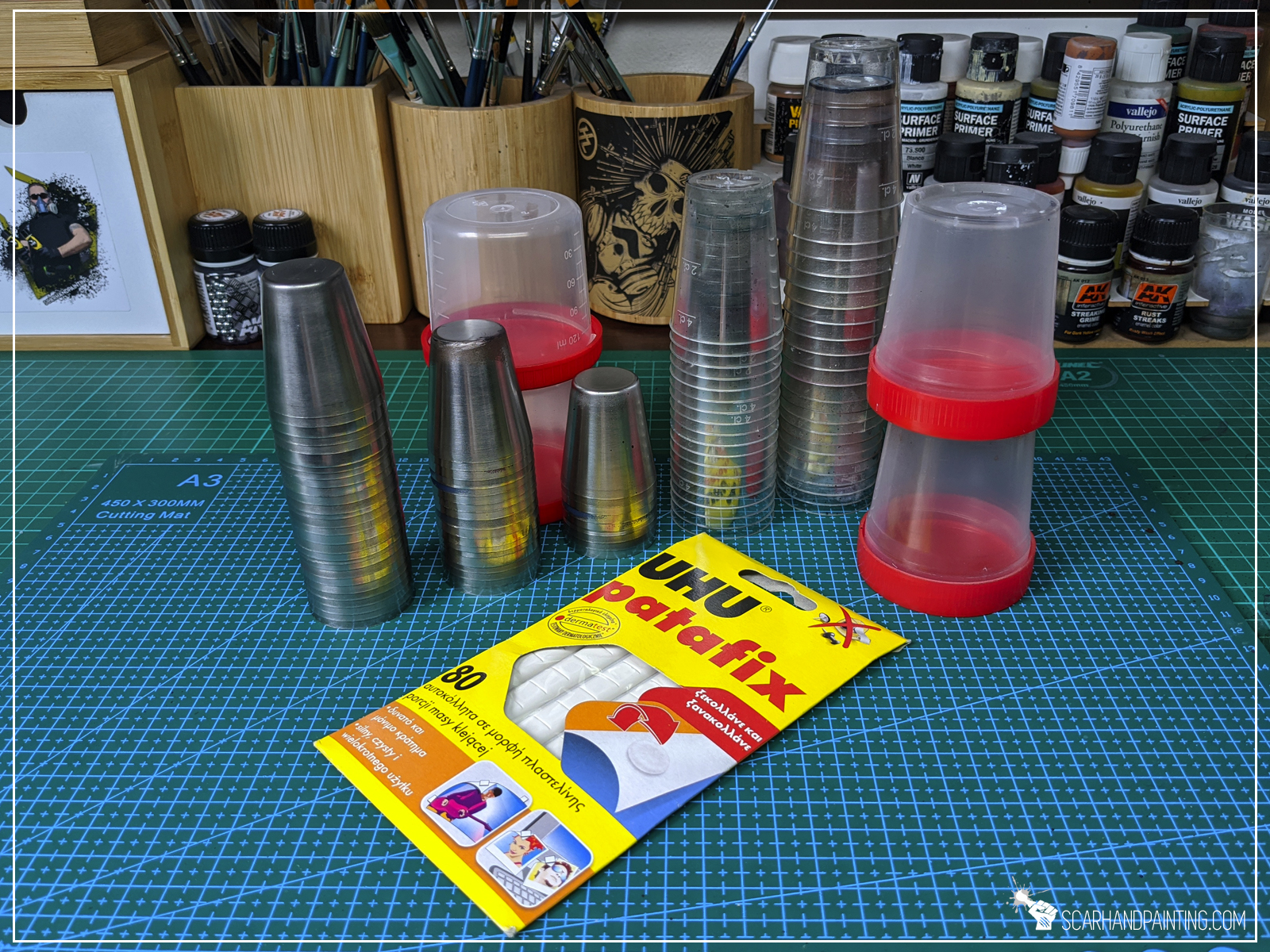
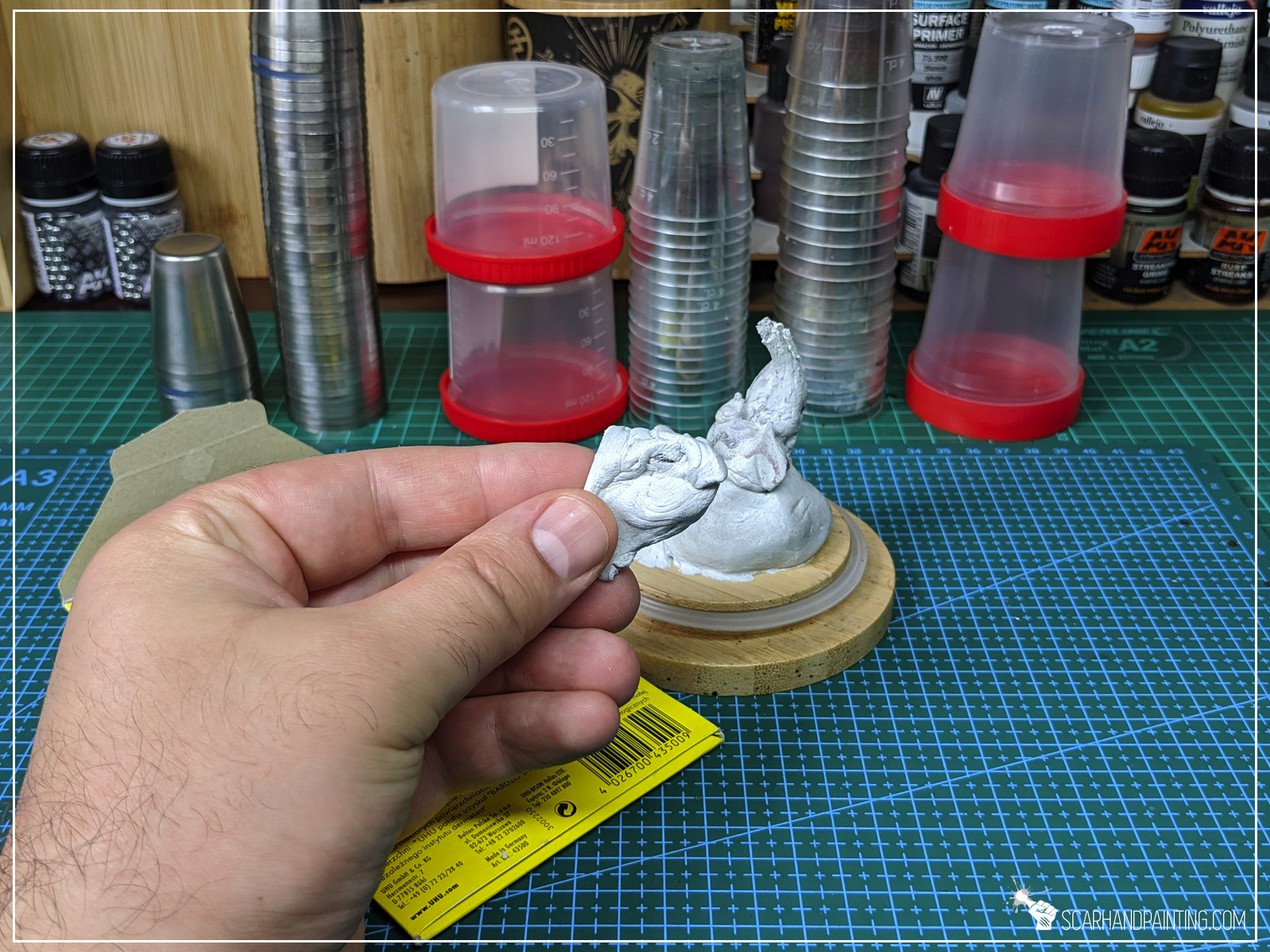
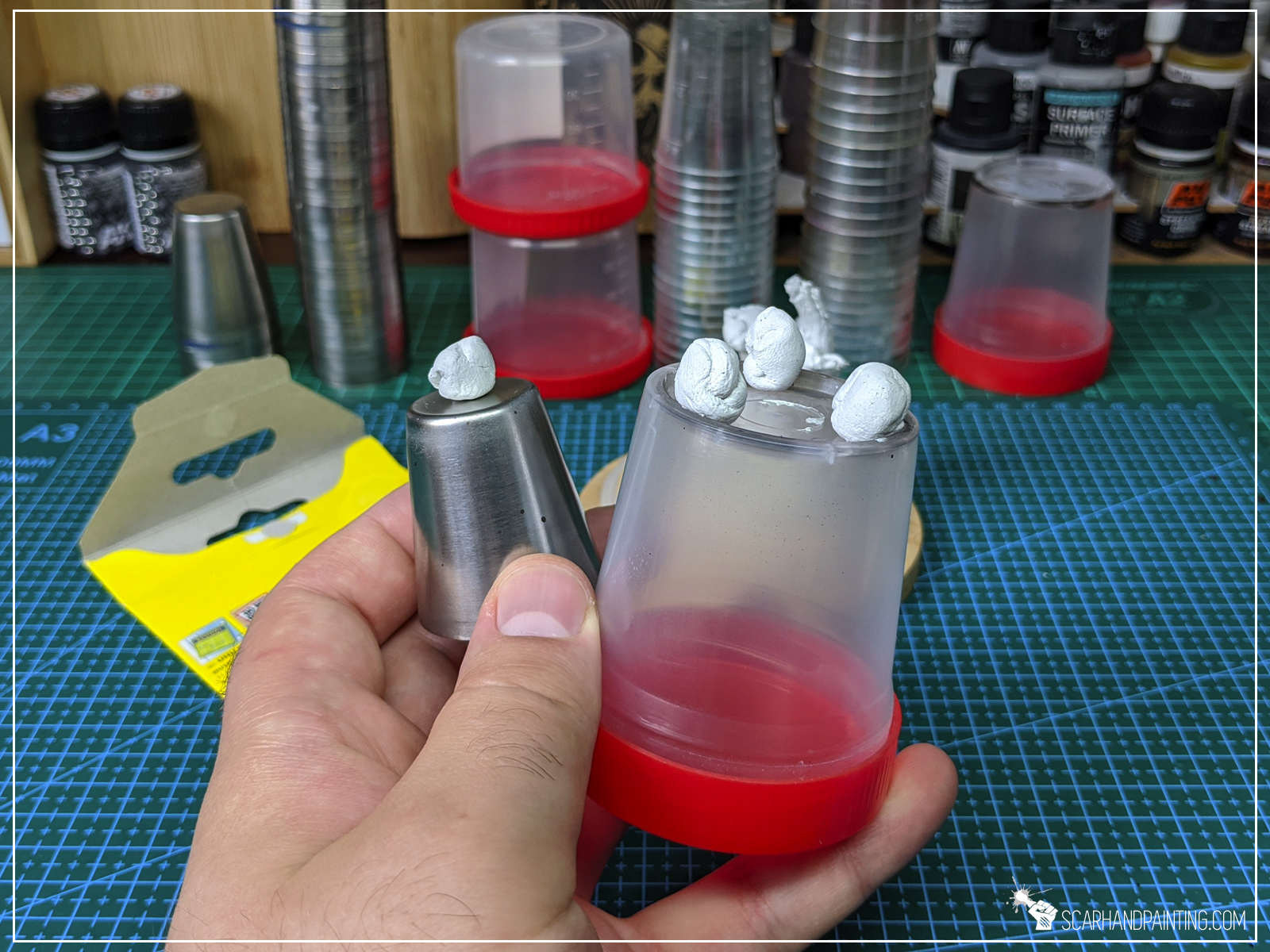
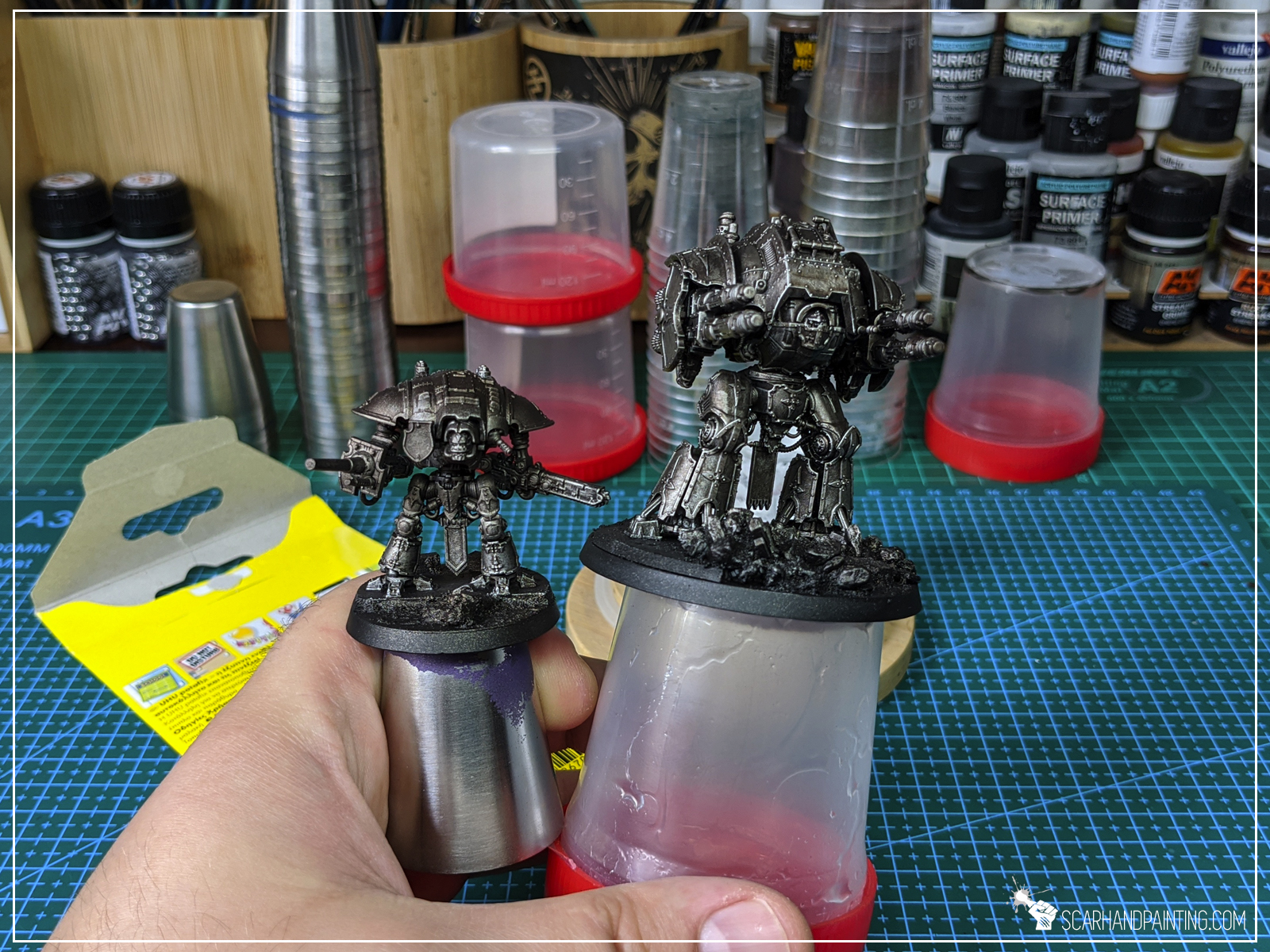
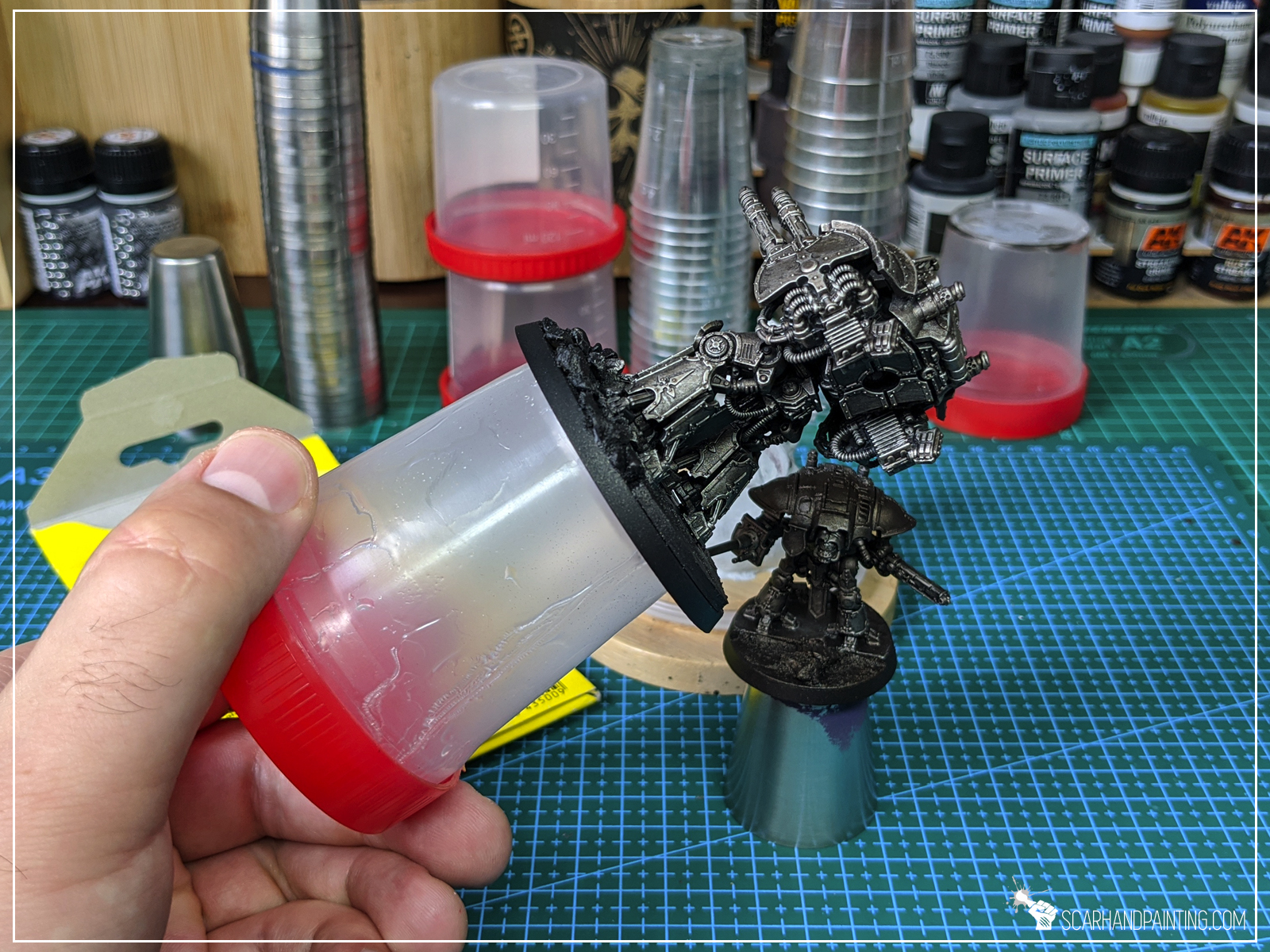
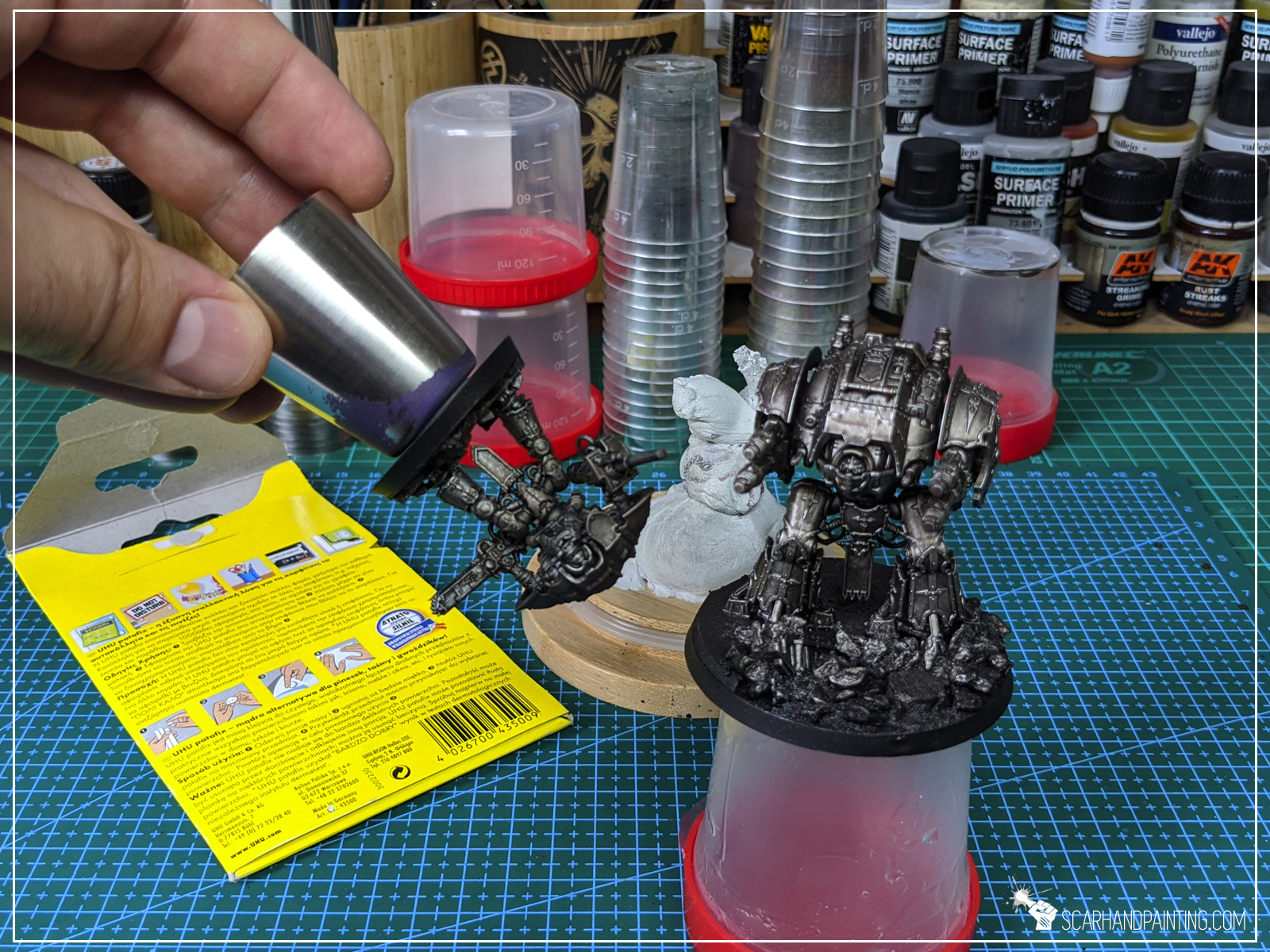
* No, if properly mounted the miniature would not fall off. I have painted hundreds of plastic/metal miniatures like this and none have ever fell off the Holder.
* When choosing items to be used as holders – stay open minded! In my case the revelation of using metal glasses instead of plastic came out of nowhere!
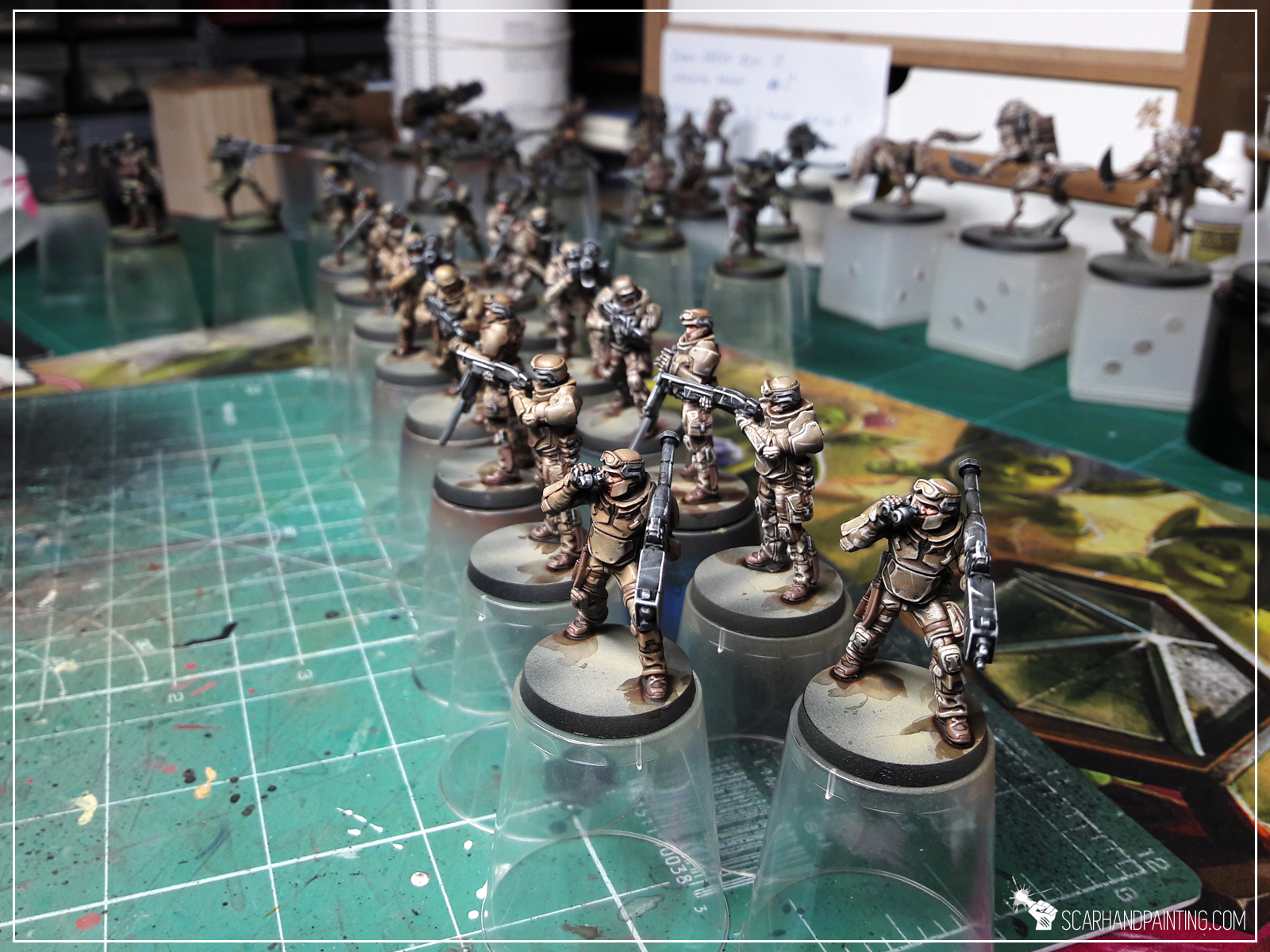
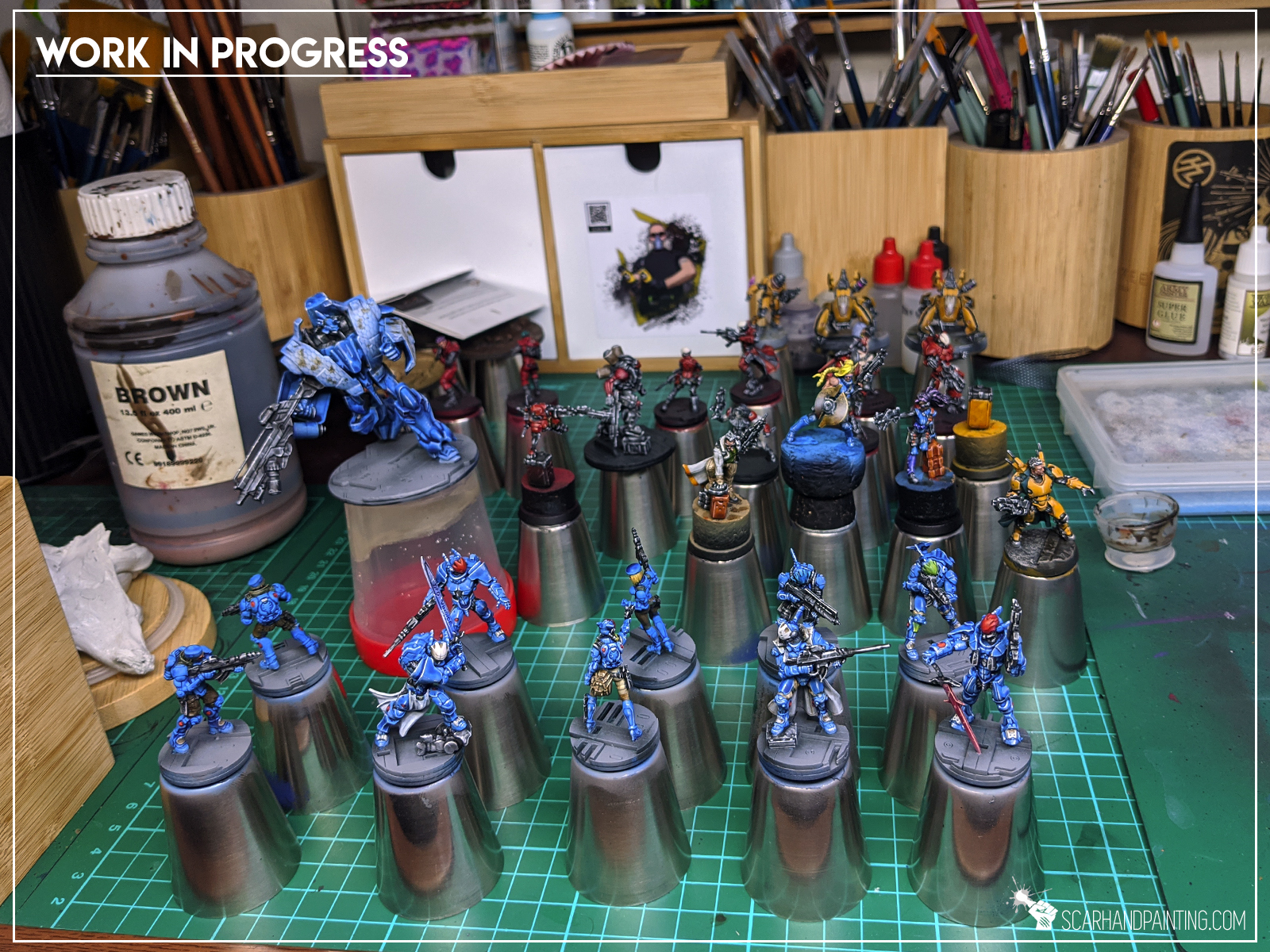


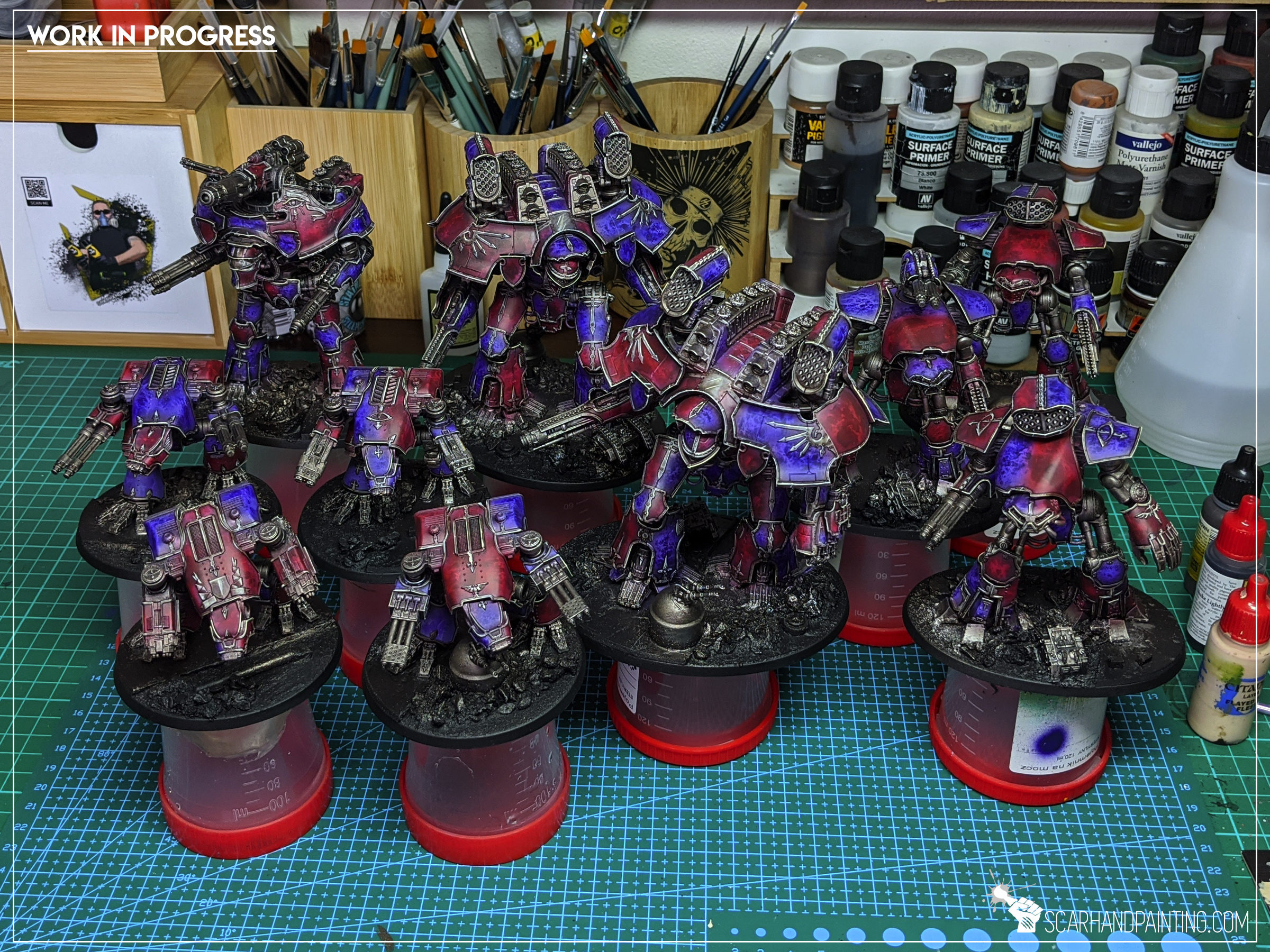

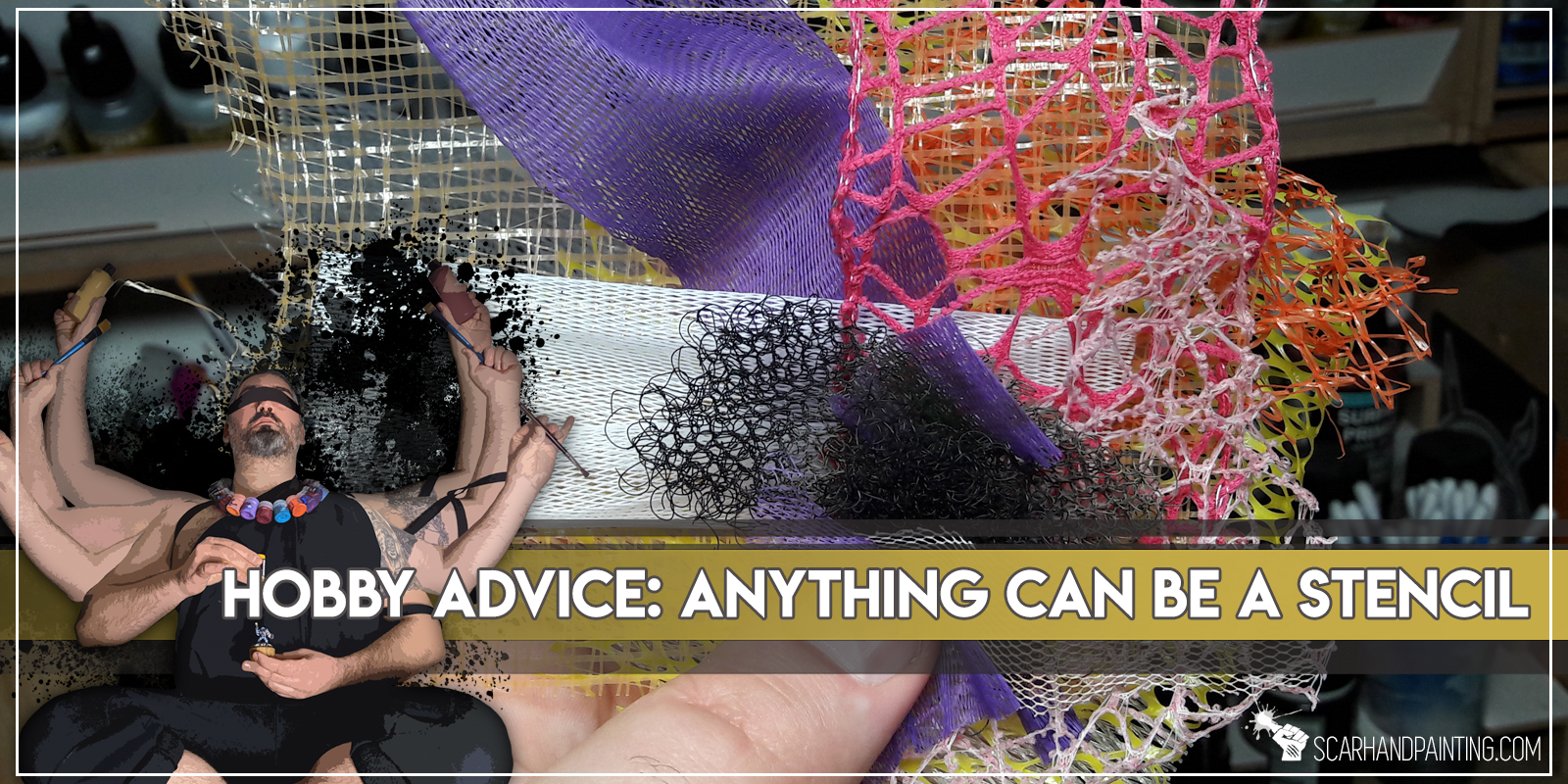
Let’s talk Stencils. There’s just so many awesome airbrush stencils out there. The world around us is filled with them, even though we’re used to pass them by without further notice…
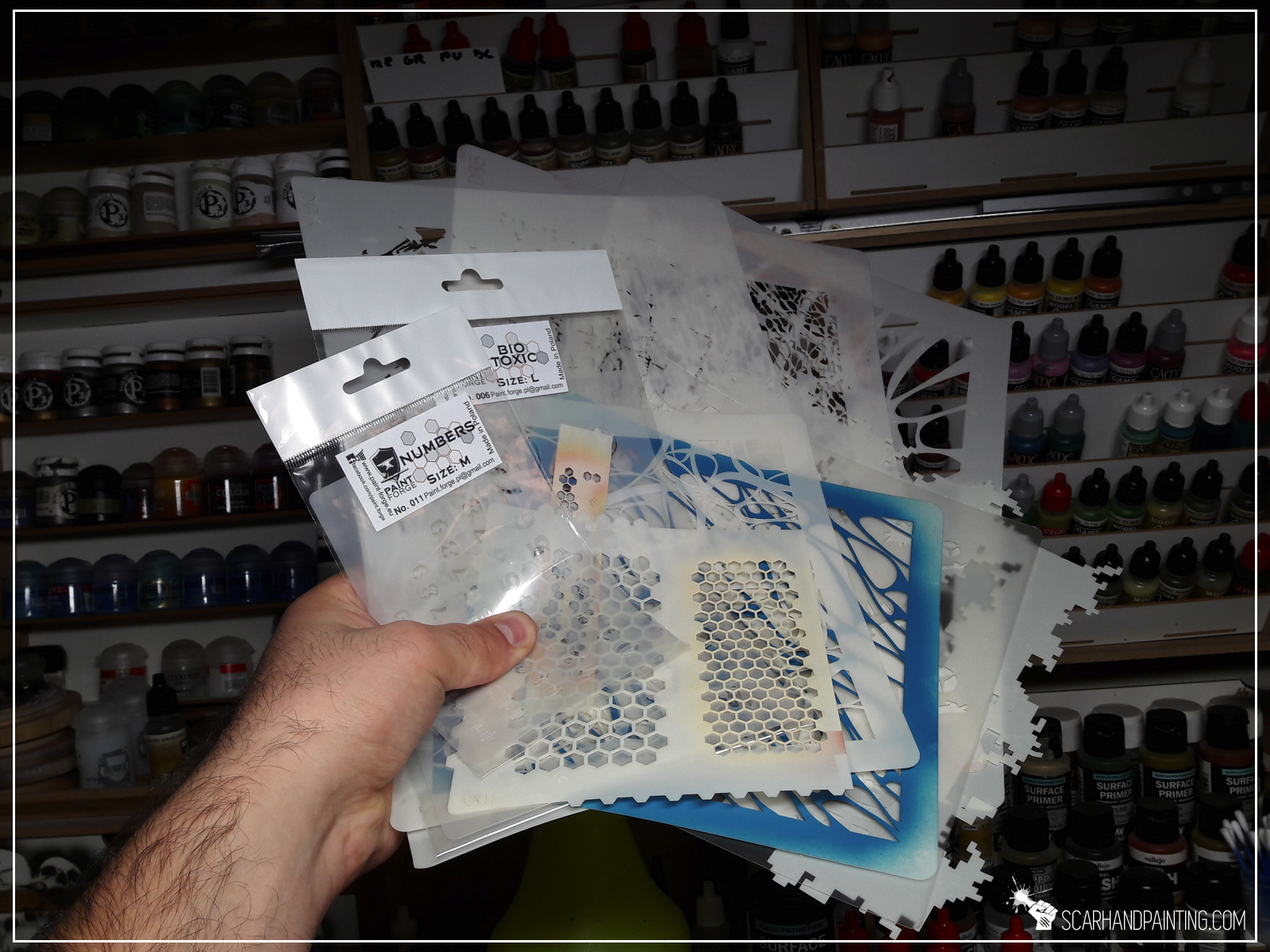
No, I ain’t talking about these! These are all professional stencils, some of which are crazy expensive! Nope – I’m talking about all the stencils that you might already have at home and not know about it! Some may be found in the kitchen, some inside your bathroom, some can even now be in your reach, across the hobby desk!
“But Maciej, you resourceful genius” I hear you say “how come?!”
Here’s the thing: “Anything can be a stencil!” Still don’t believe me? Check these out!
Dirty, dusty effect – why not?

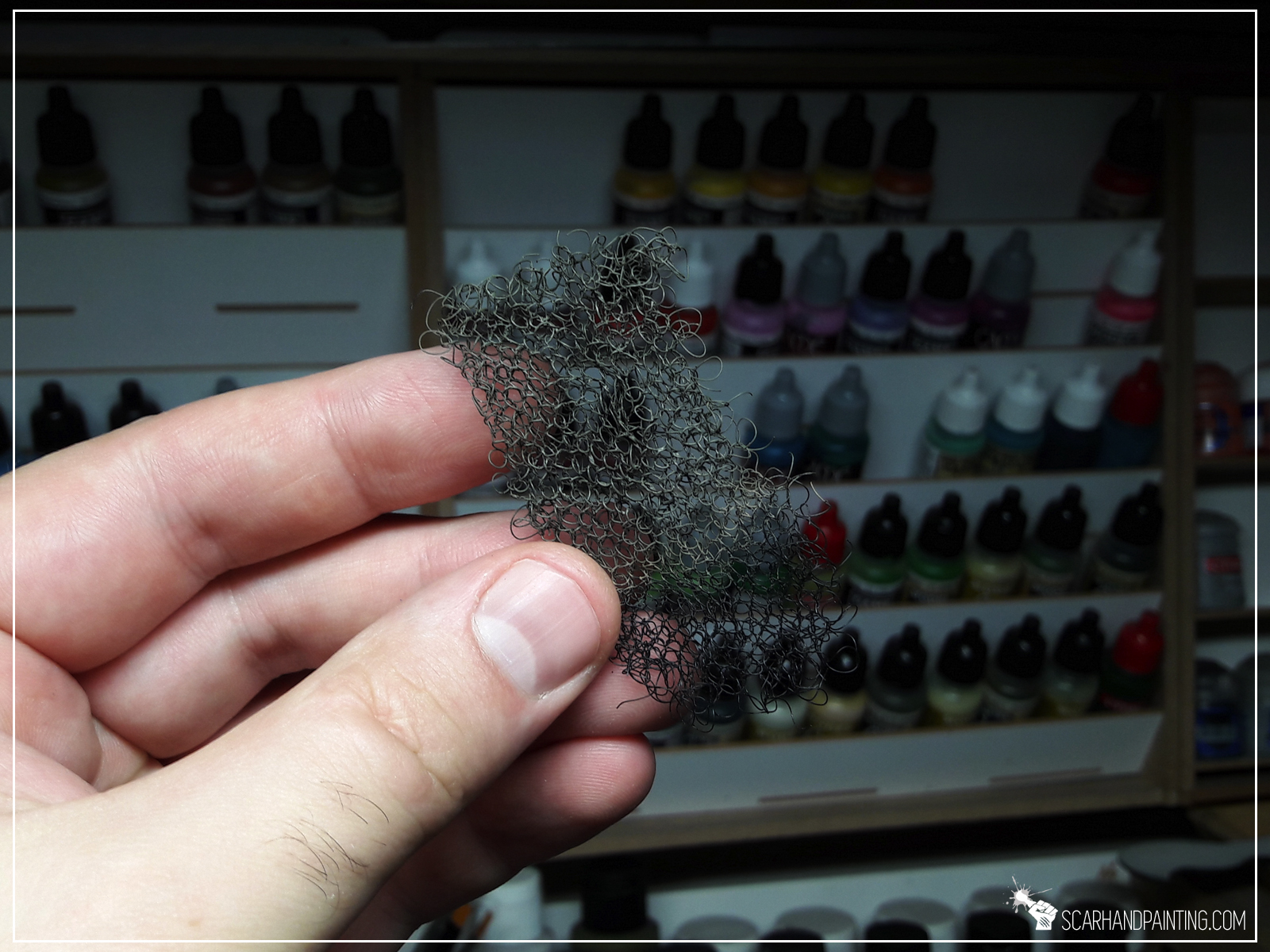
Still haven’t used, but I know there will come a time to do it 😛
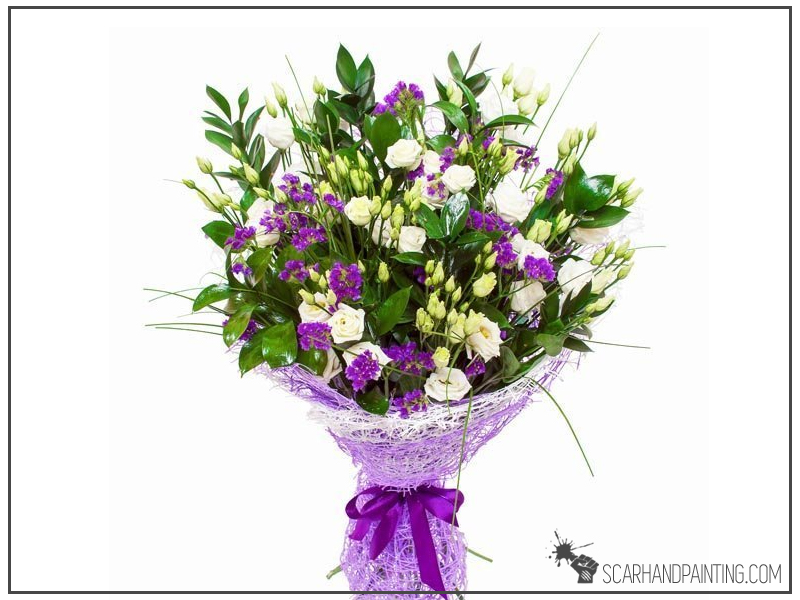
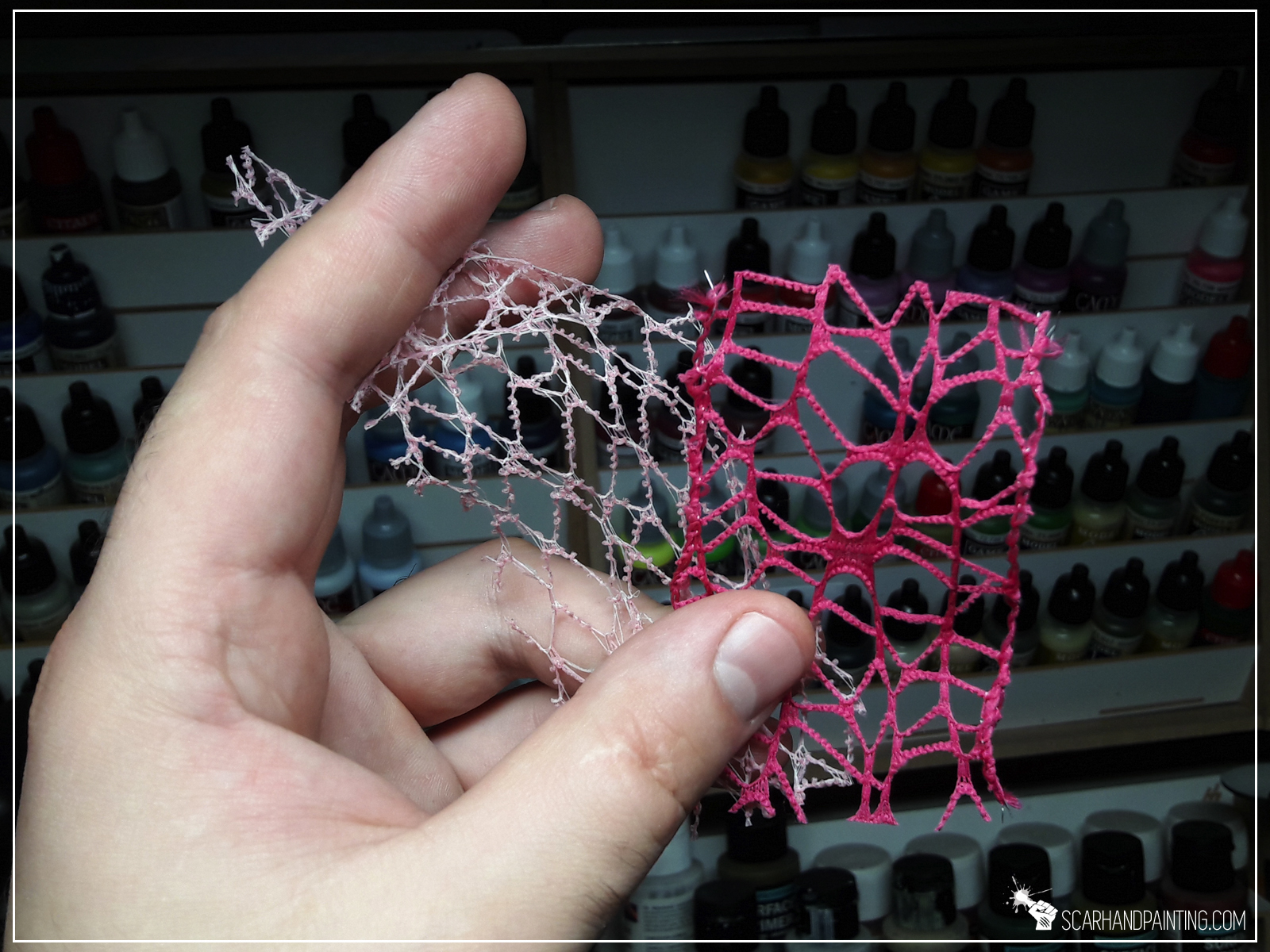
Cuz there’s never enough hex in your life!
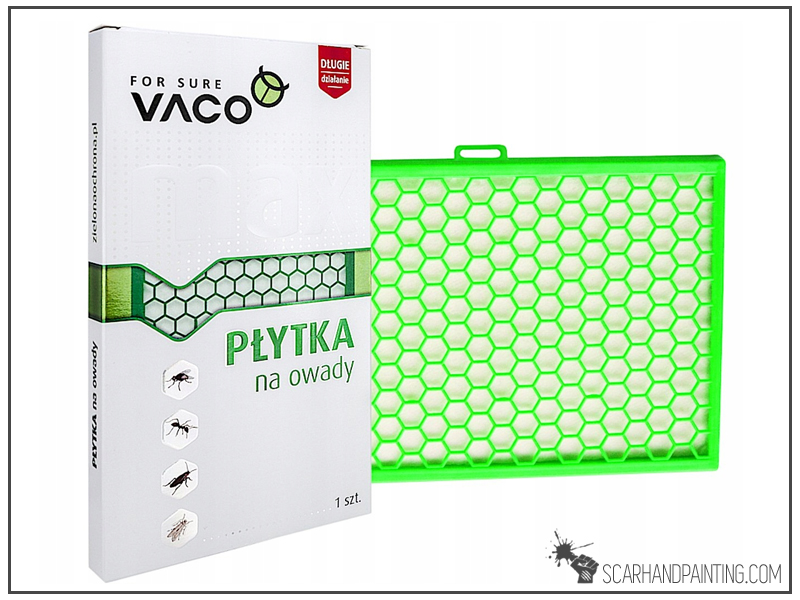
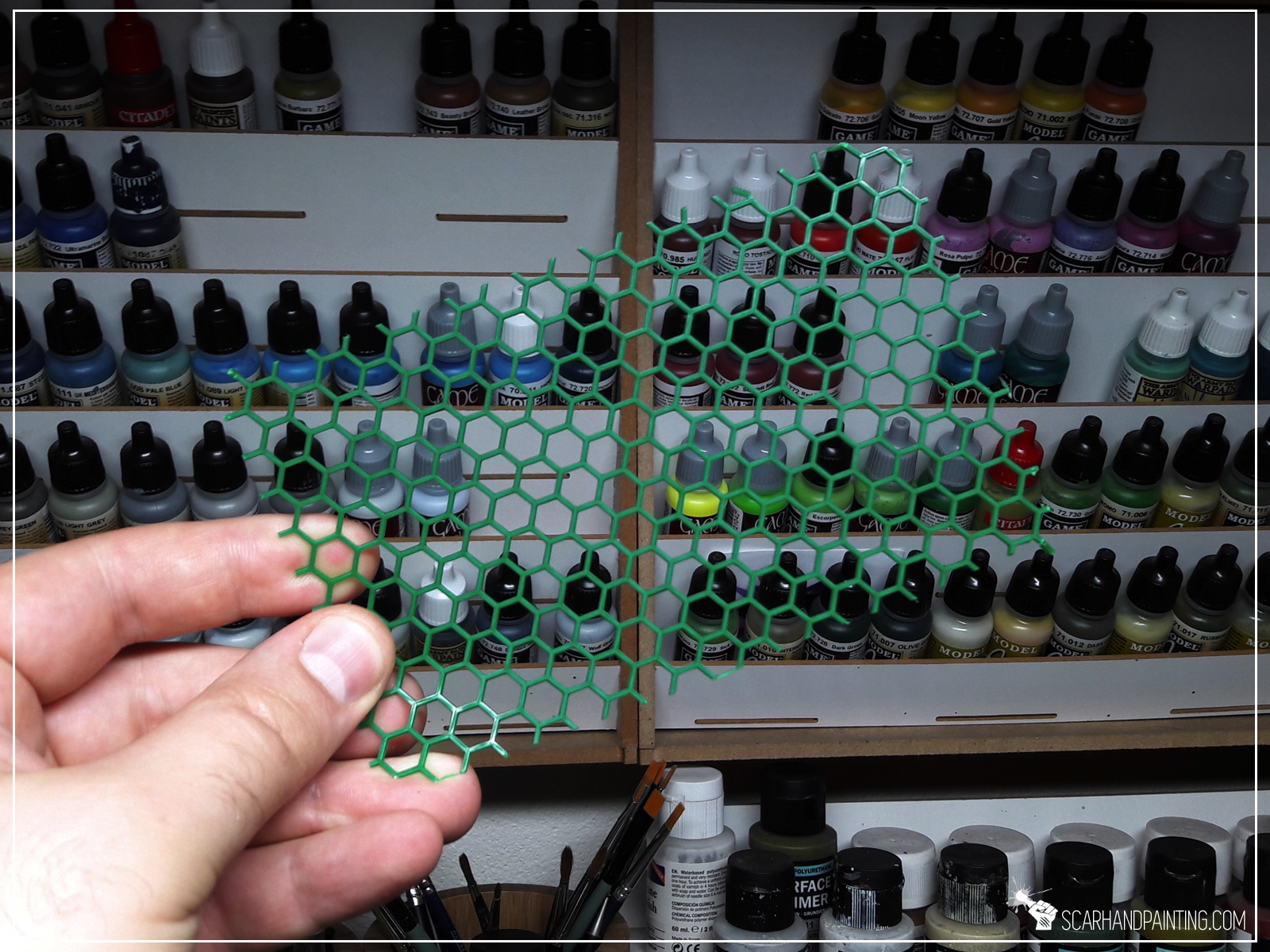
I call upon thee God of Thunder!


Not a stencil, but totally worth consideration 😉
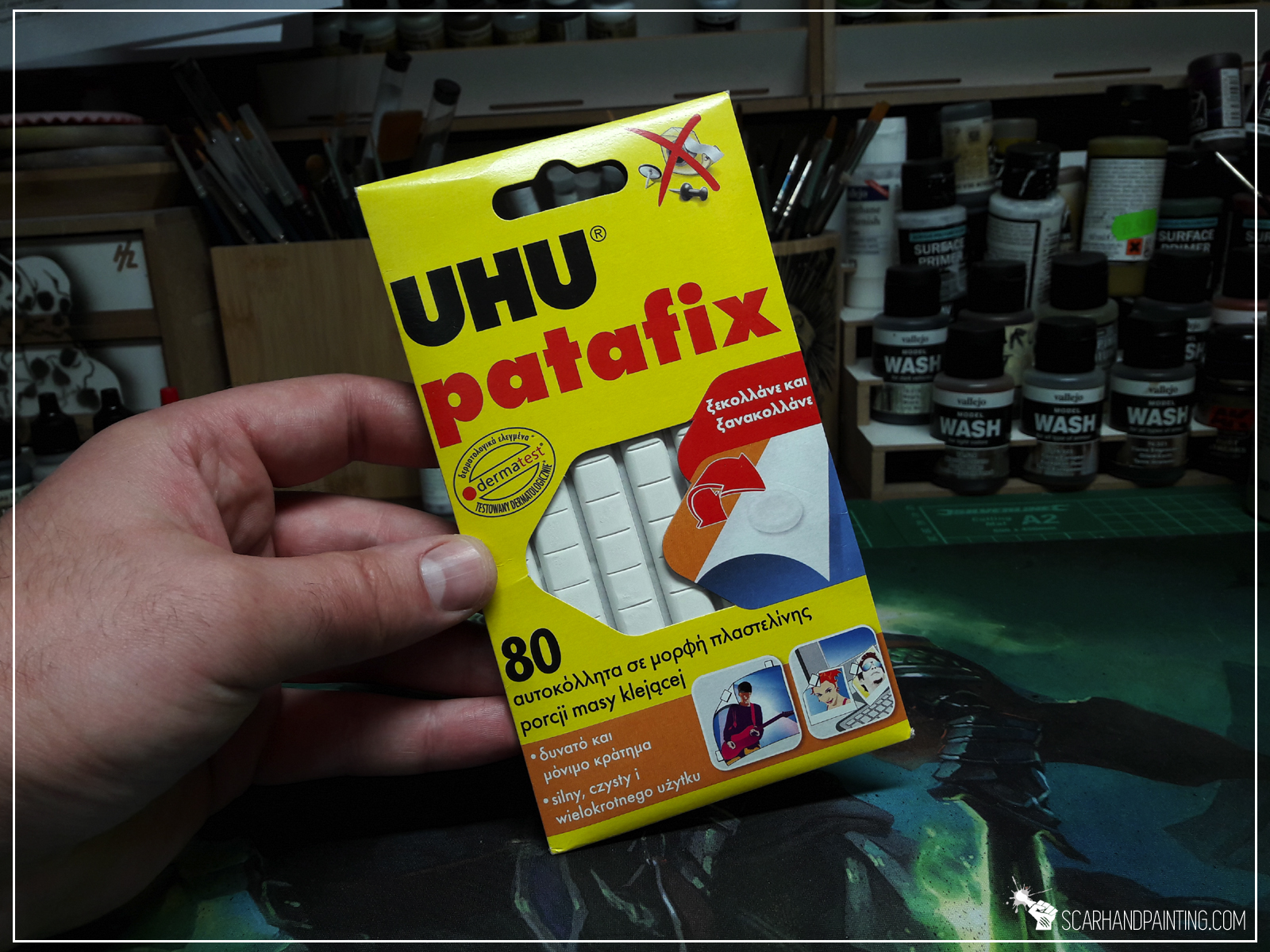
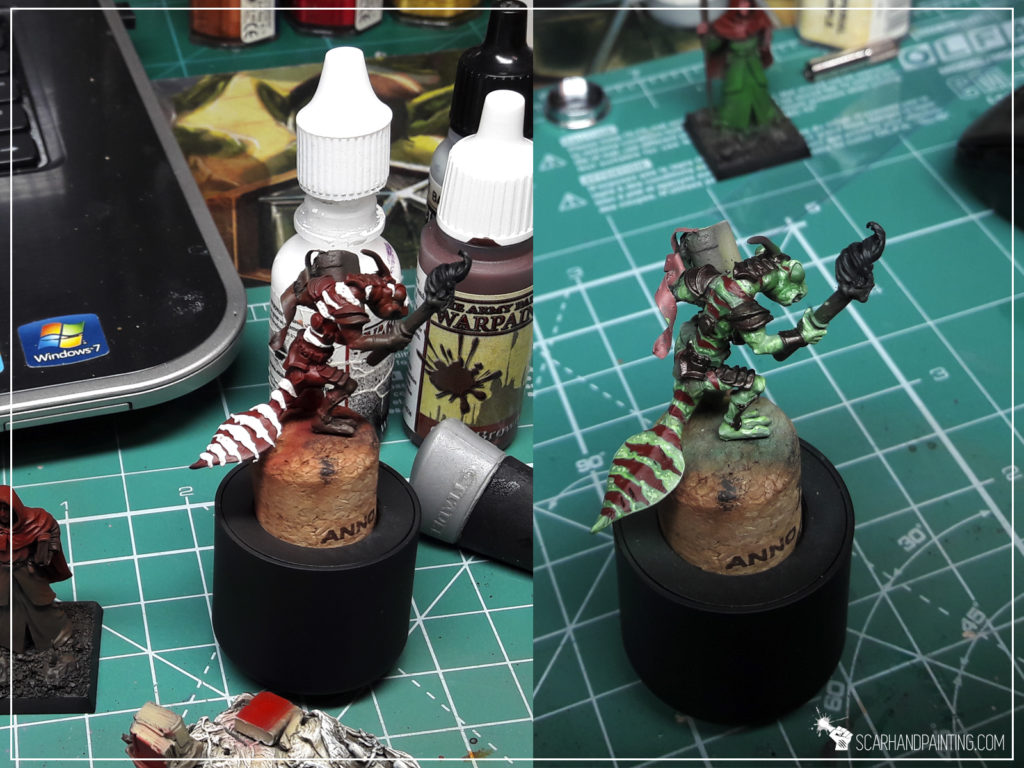
My favorite source of elastic, detailed stencils.

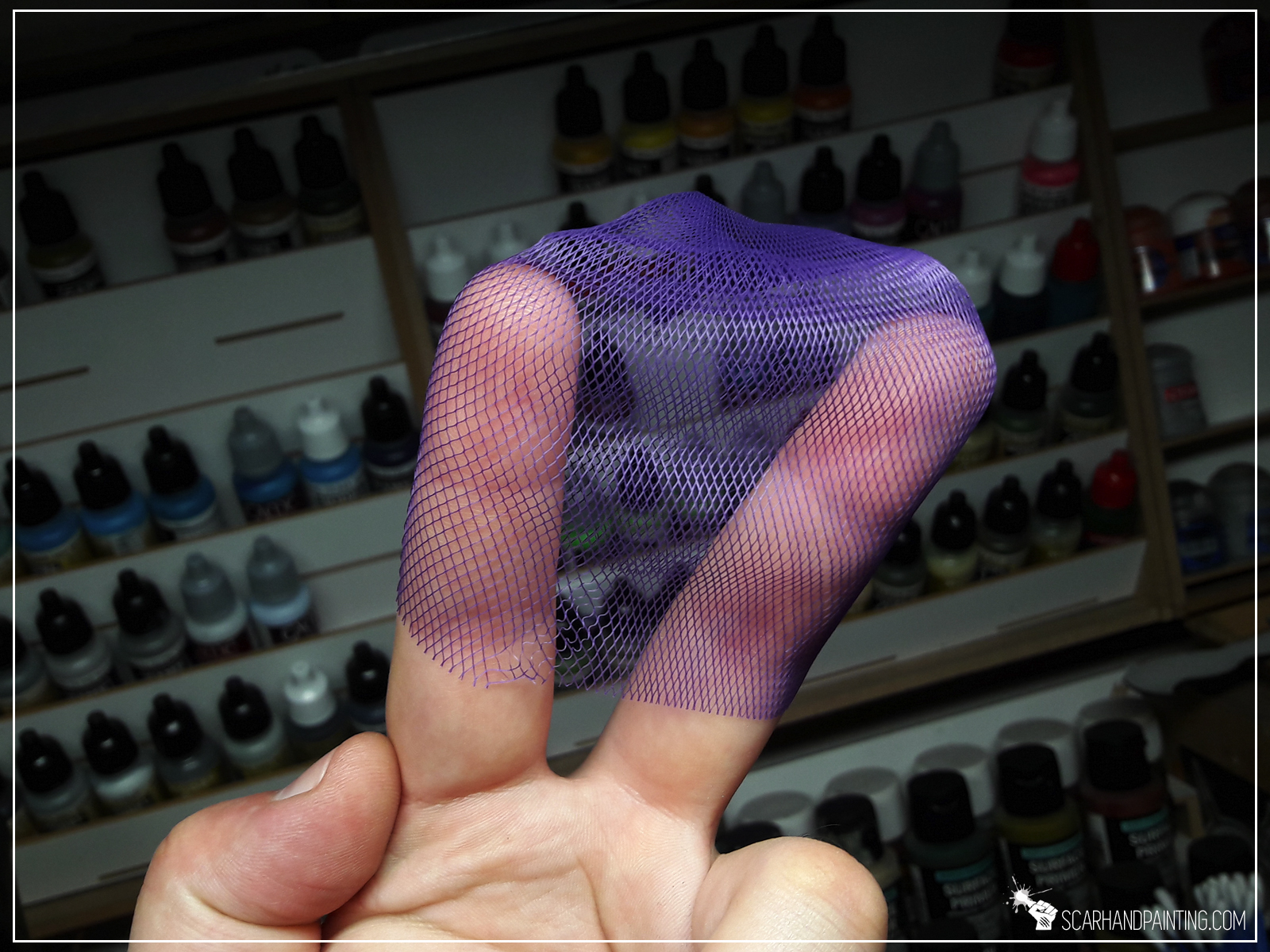
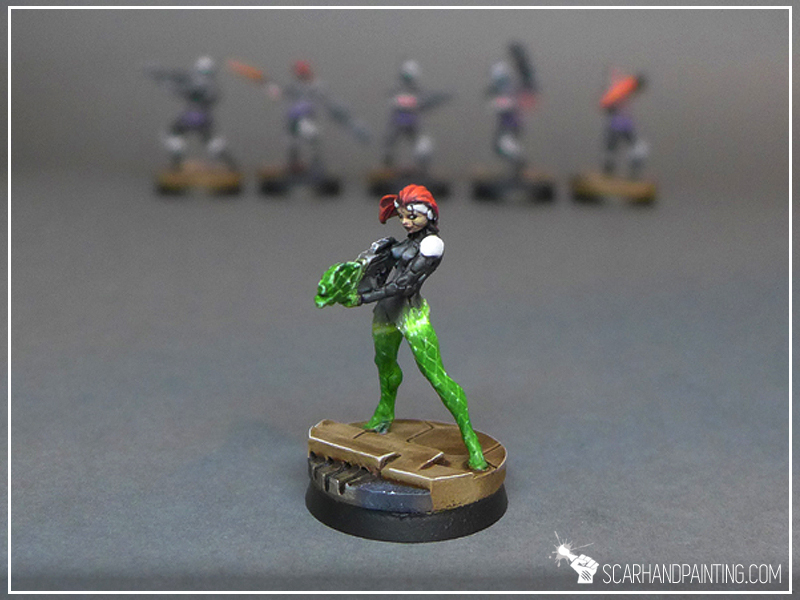
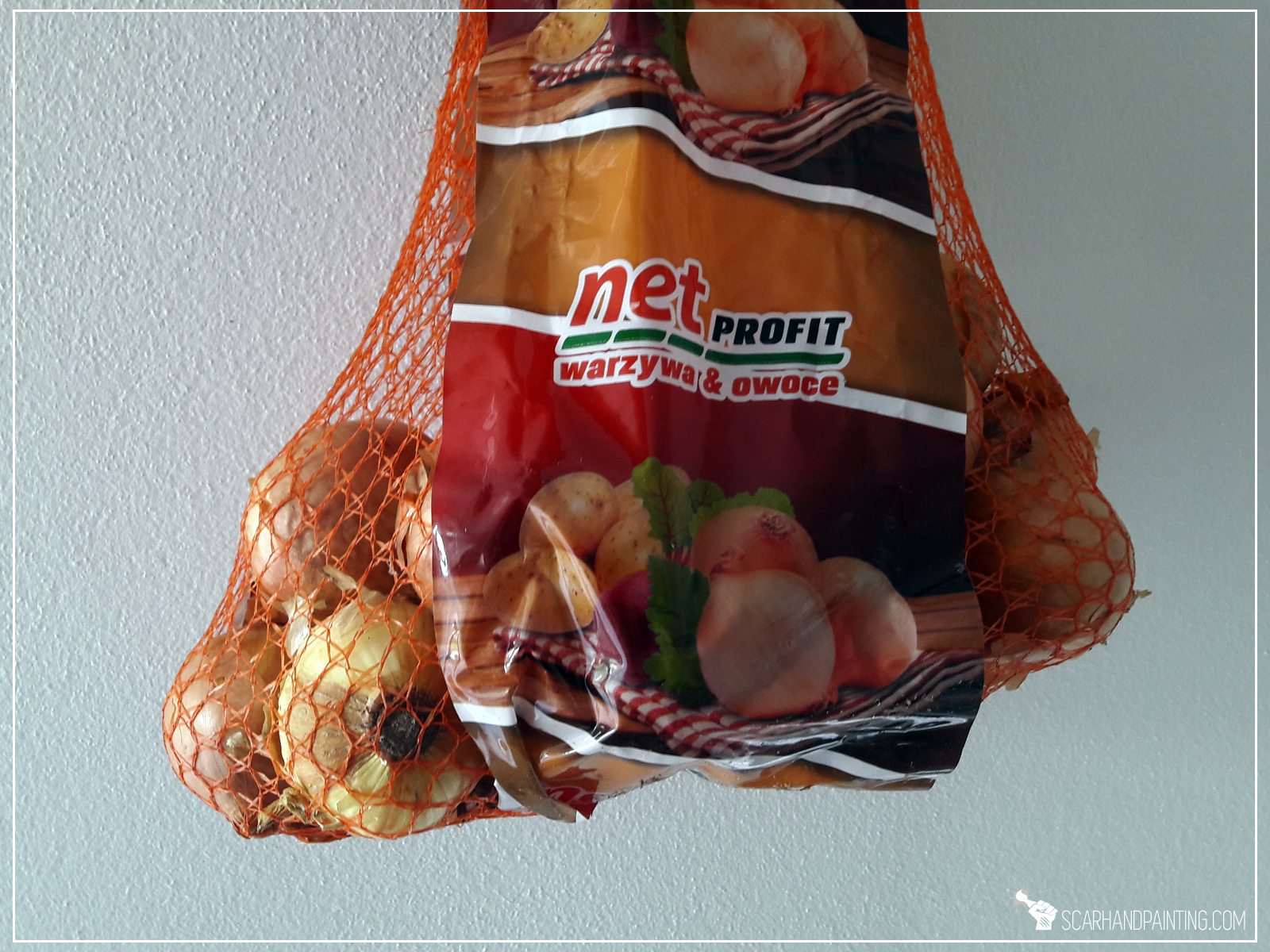
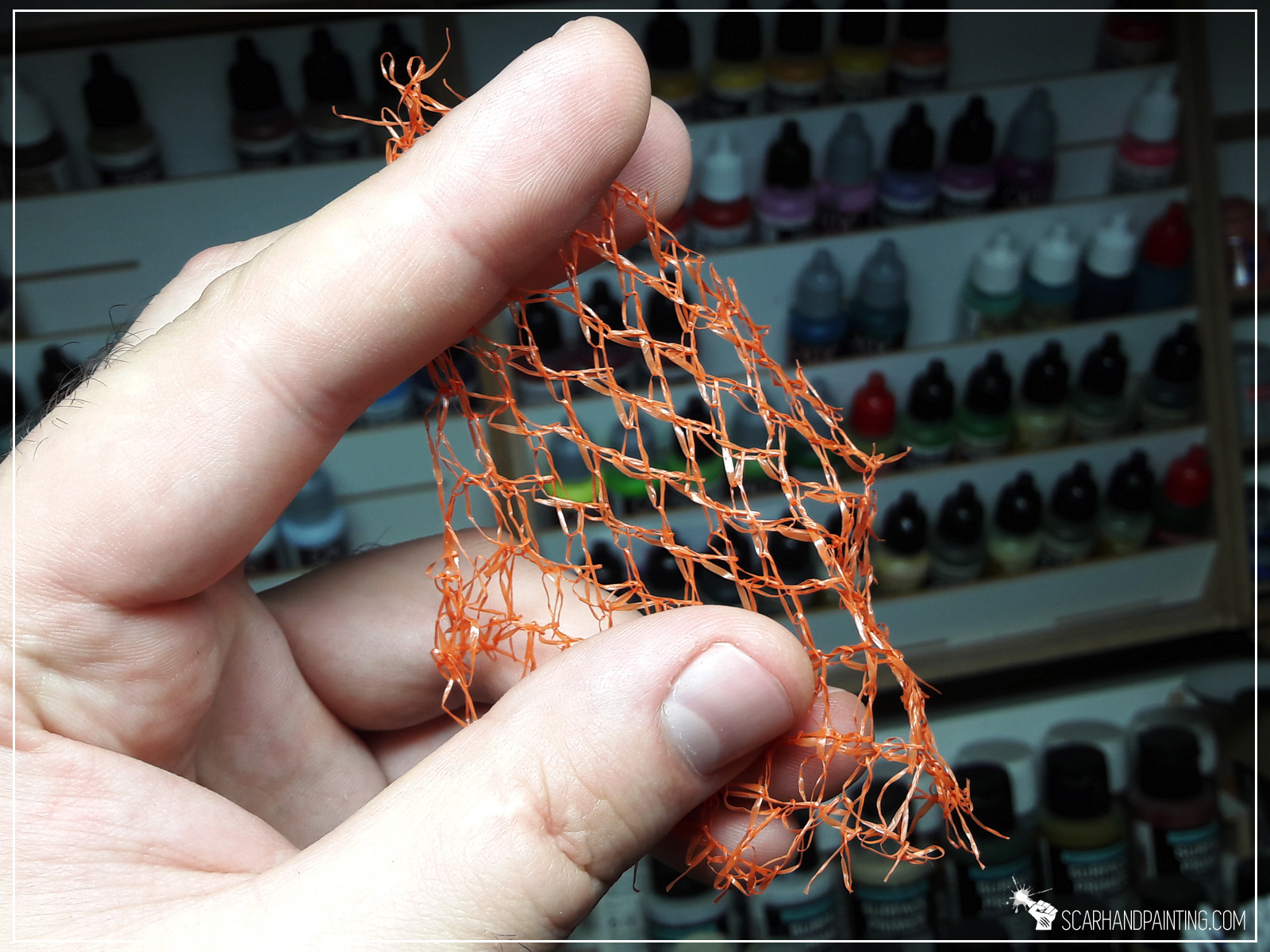
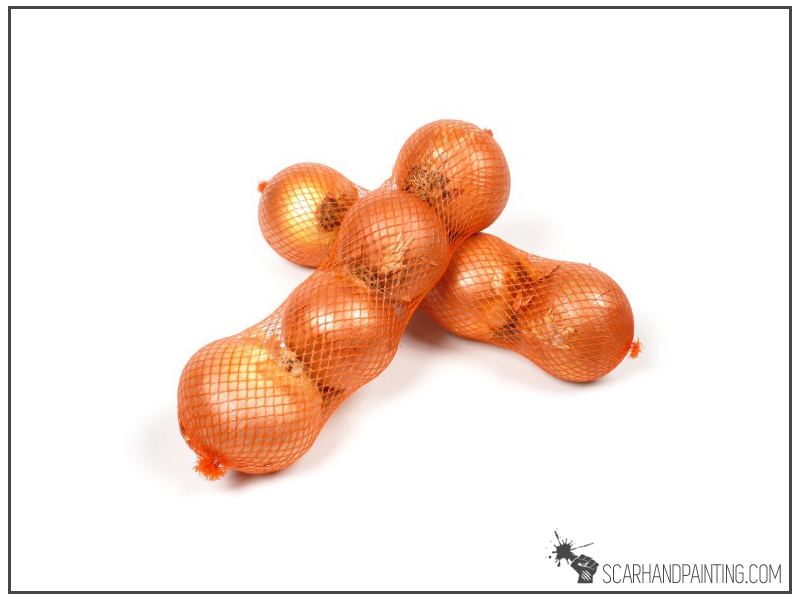

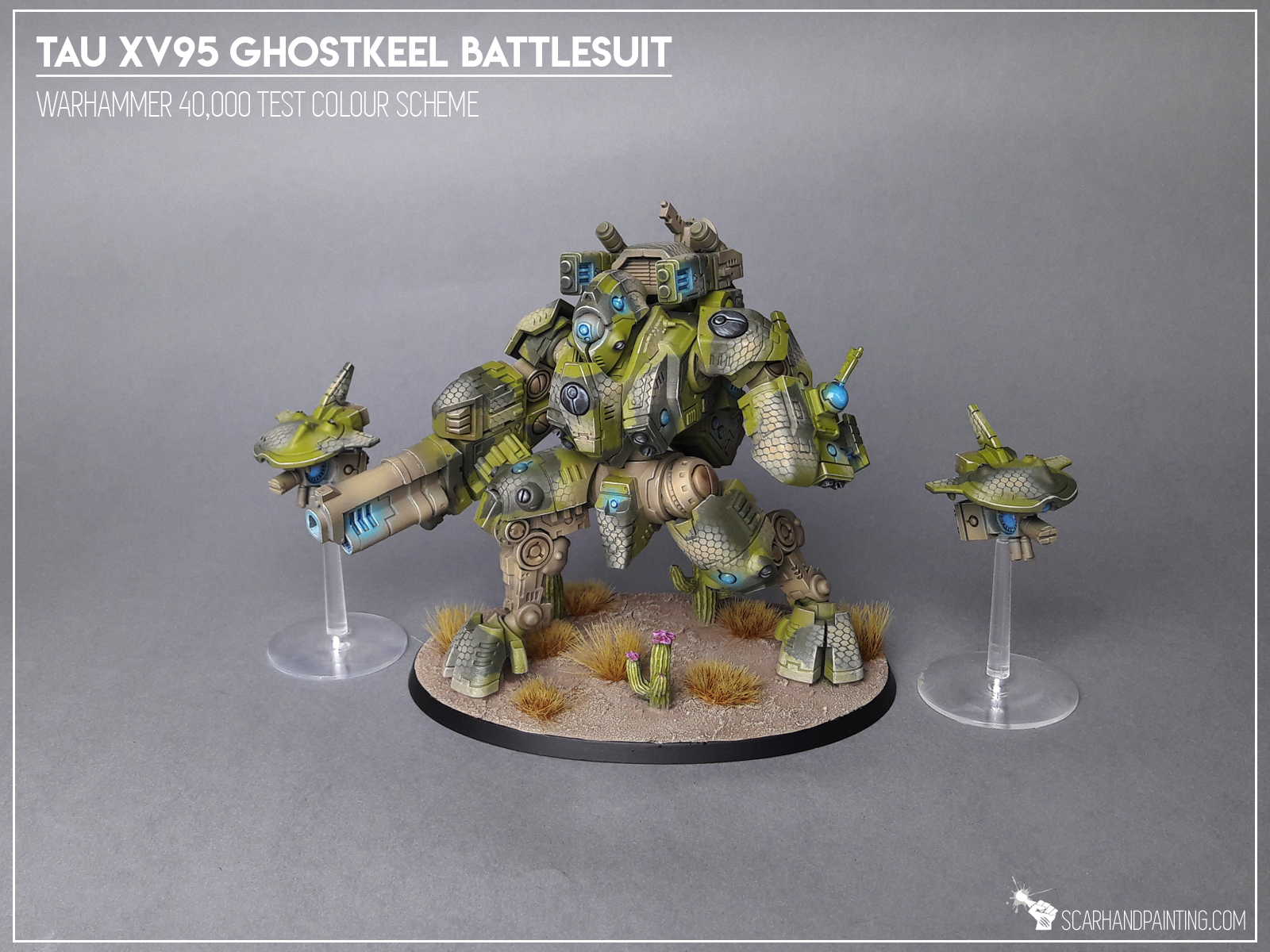
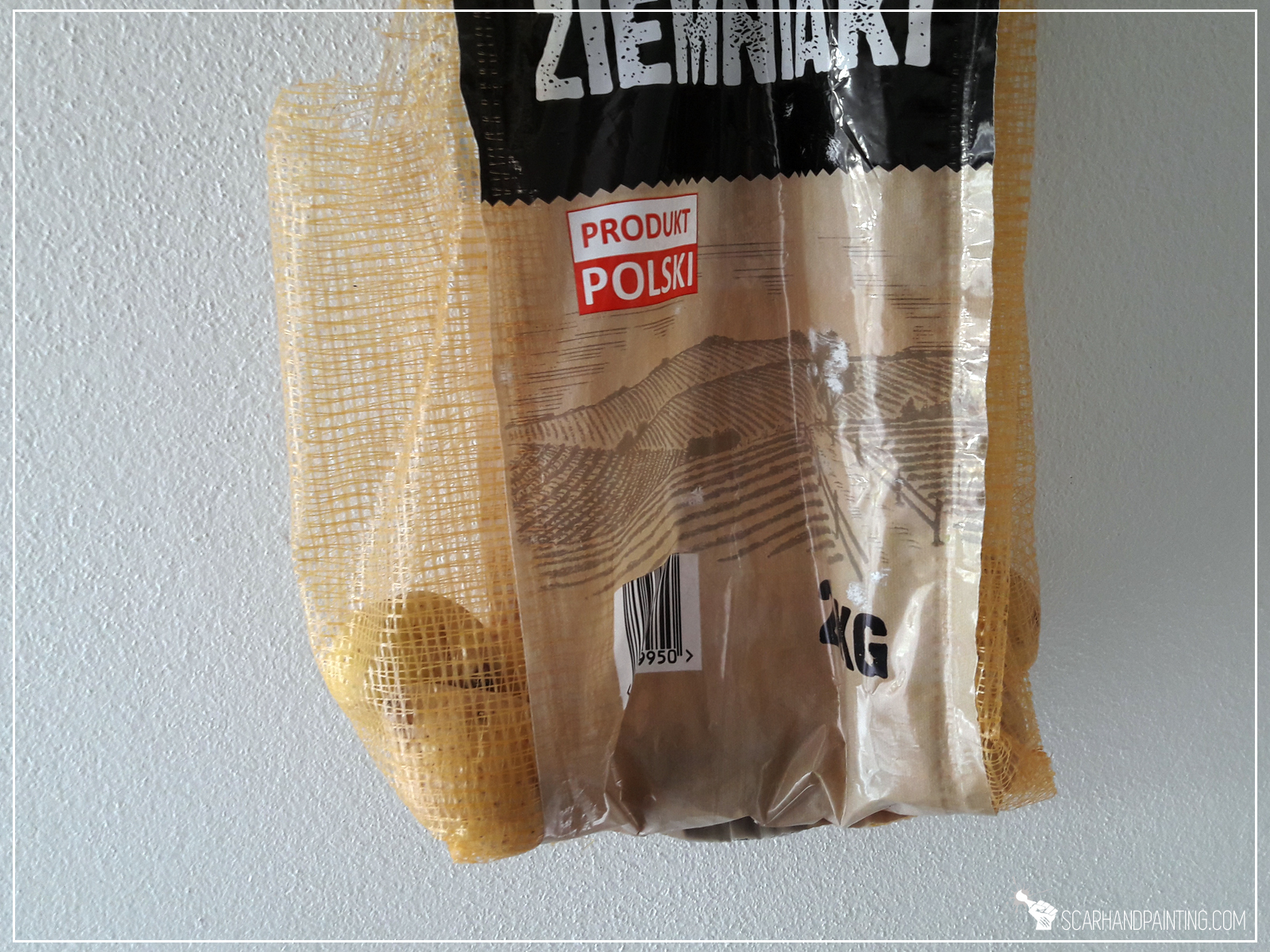



Feel inspired to rampage across your home and try to find as many stencils as possible? Feel like “gonna catch them all!”? I wish you good hunt!
PS: What are yours favorite DIY stencils? Let me know in the comments or under THIS facebook post 😉

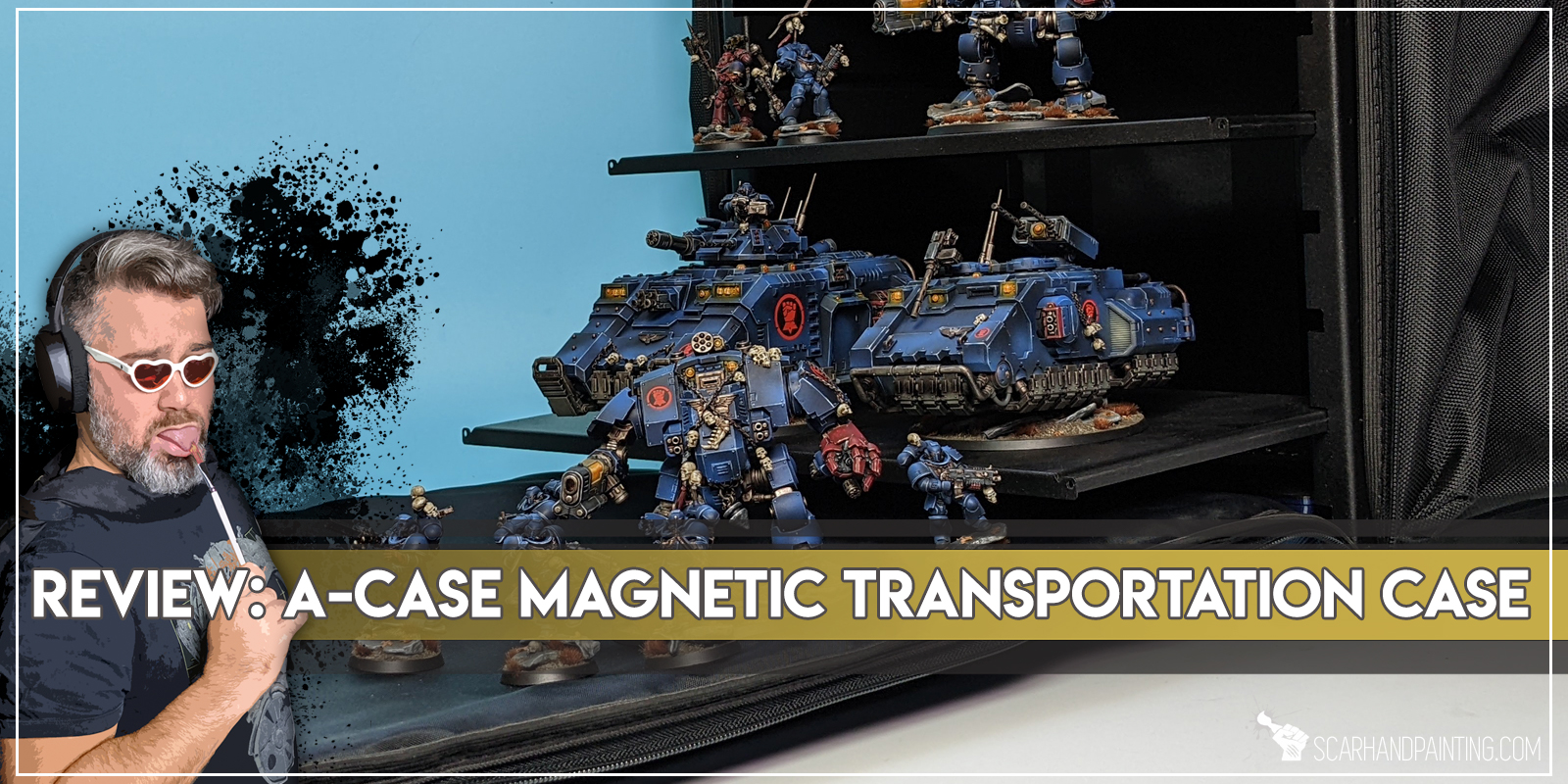
Moving painted miniatures to a tournament or painting competition can be a real challenge. I bet that every single miniatures painter had one or more miniatures damaged while being transported. Sad truth is that no matter what we do, situations like these happens. Still, when it comes to safe transportation of our beloved miniatures, we’re not completely helpless.
In the world of miniatures painting there are two well established ways of professional miniatures transportation, both with their own pros and cons: Foam Bags and Magnetic Bags. Today I would like to talk a bit about the latter and present to you the A-Case Hybrid Series from A-Case, one of the leading companies in the market.

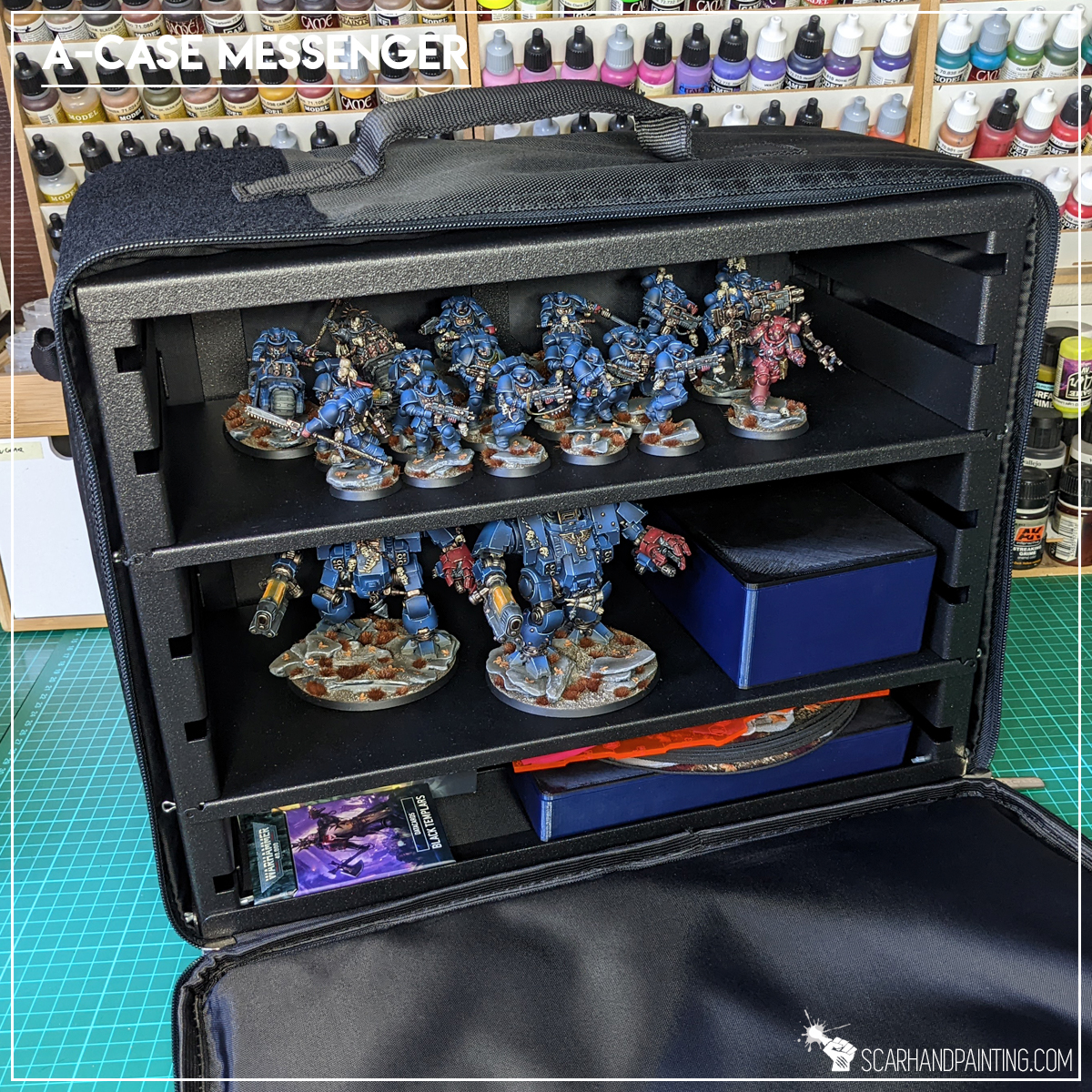
During my years as a hobby store manager and a hobbyist, I’ve seen my share of transportation bags. This imho allows me to say that when it comes to quality A-Case is king. Everything fits, everything is smooth, no thread going wild along the stitches, inner metal casing of great quality plus the overall feel of an exclusive product.
New A-Case Hybrids saw a lot of improvements compared to previous series, such as a much sturdier construction, reinforced trays, strapped side pins to keep the trays in place and more.
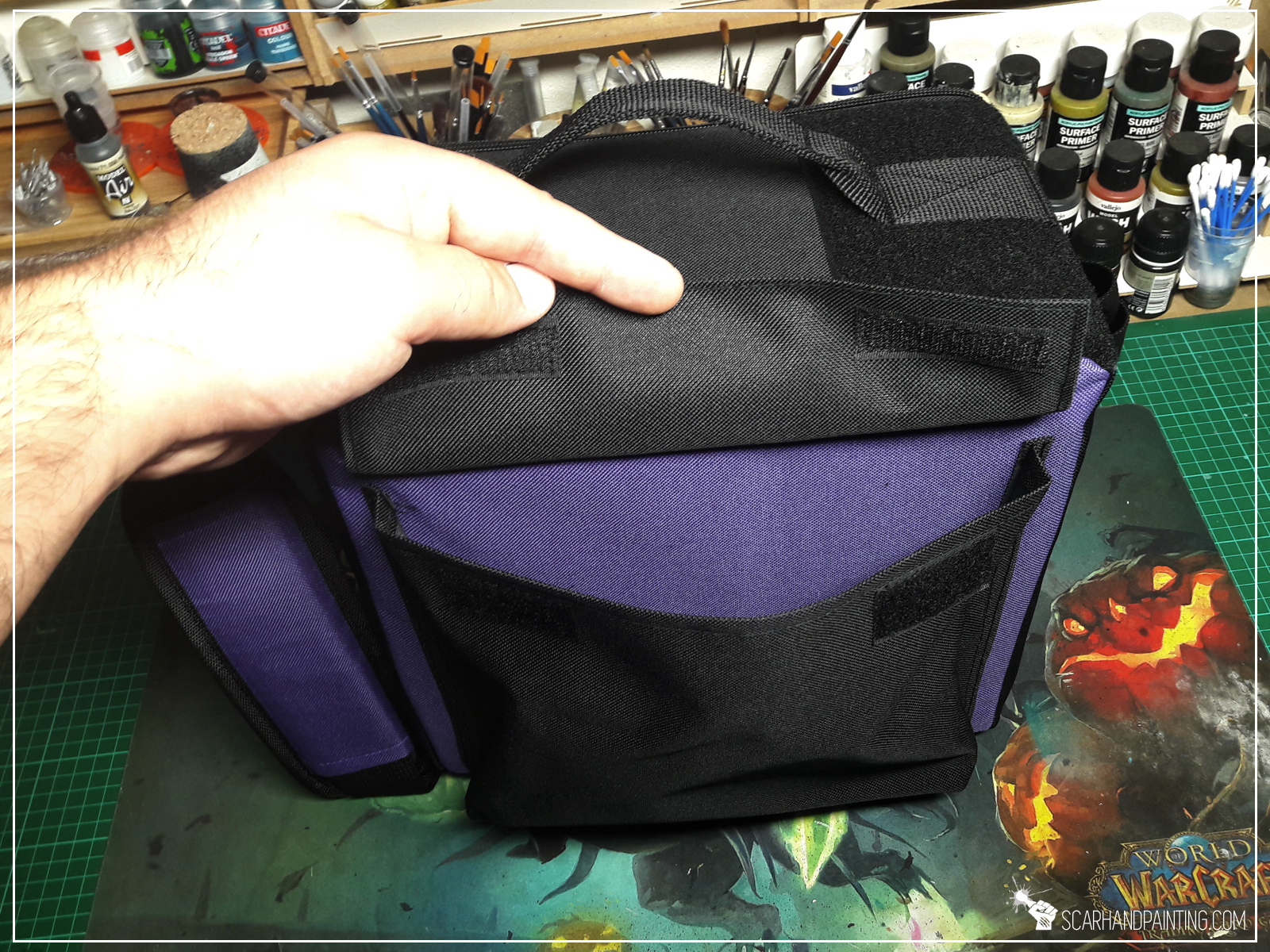
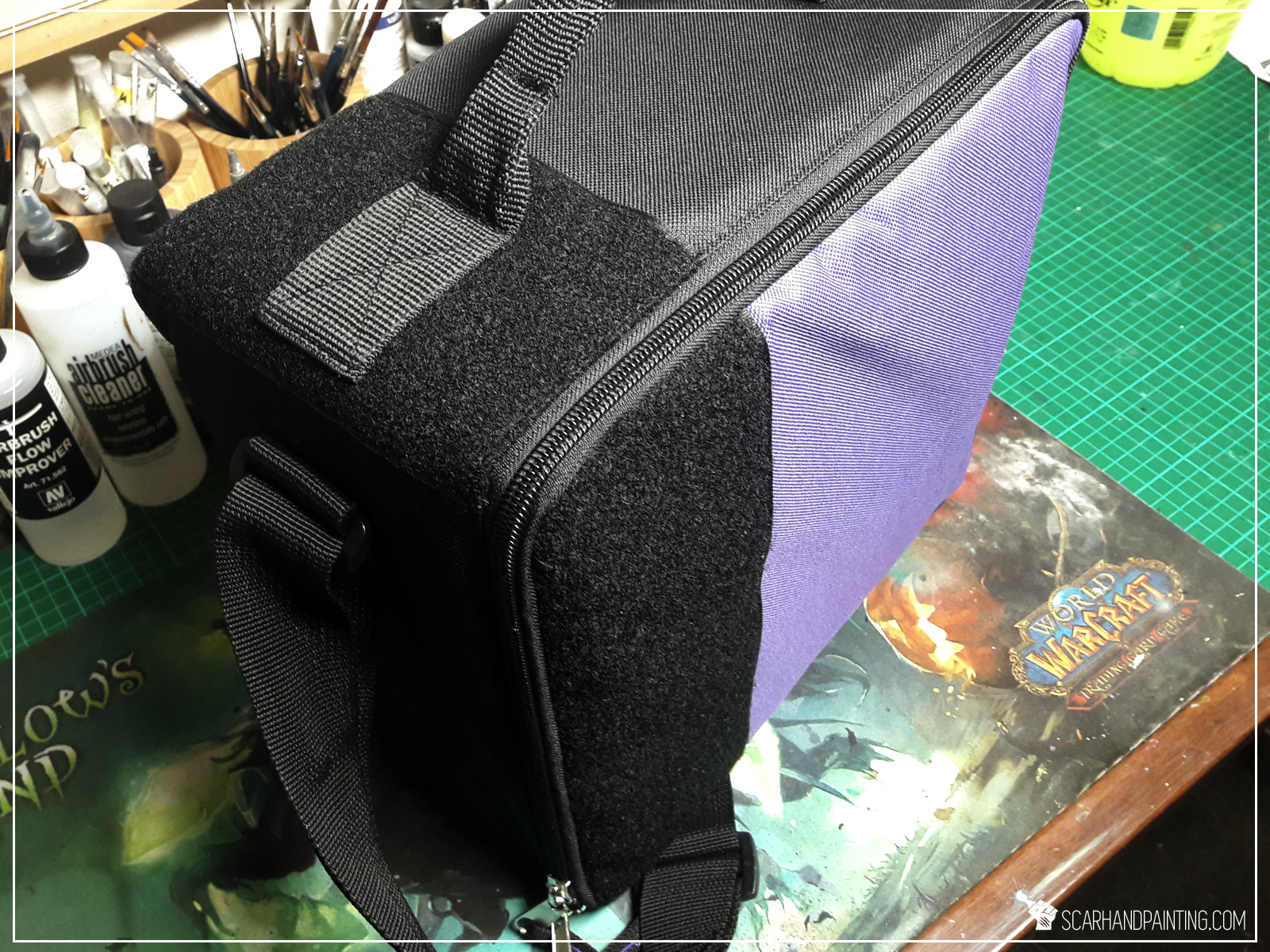
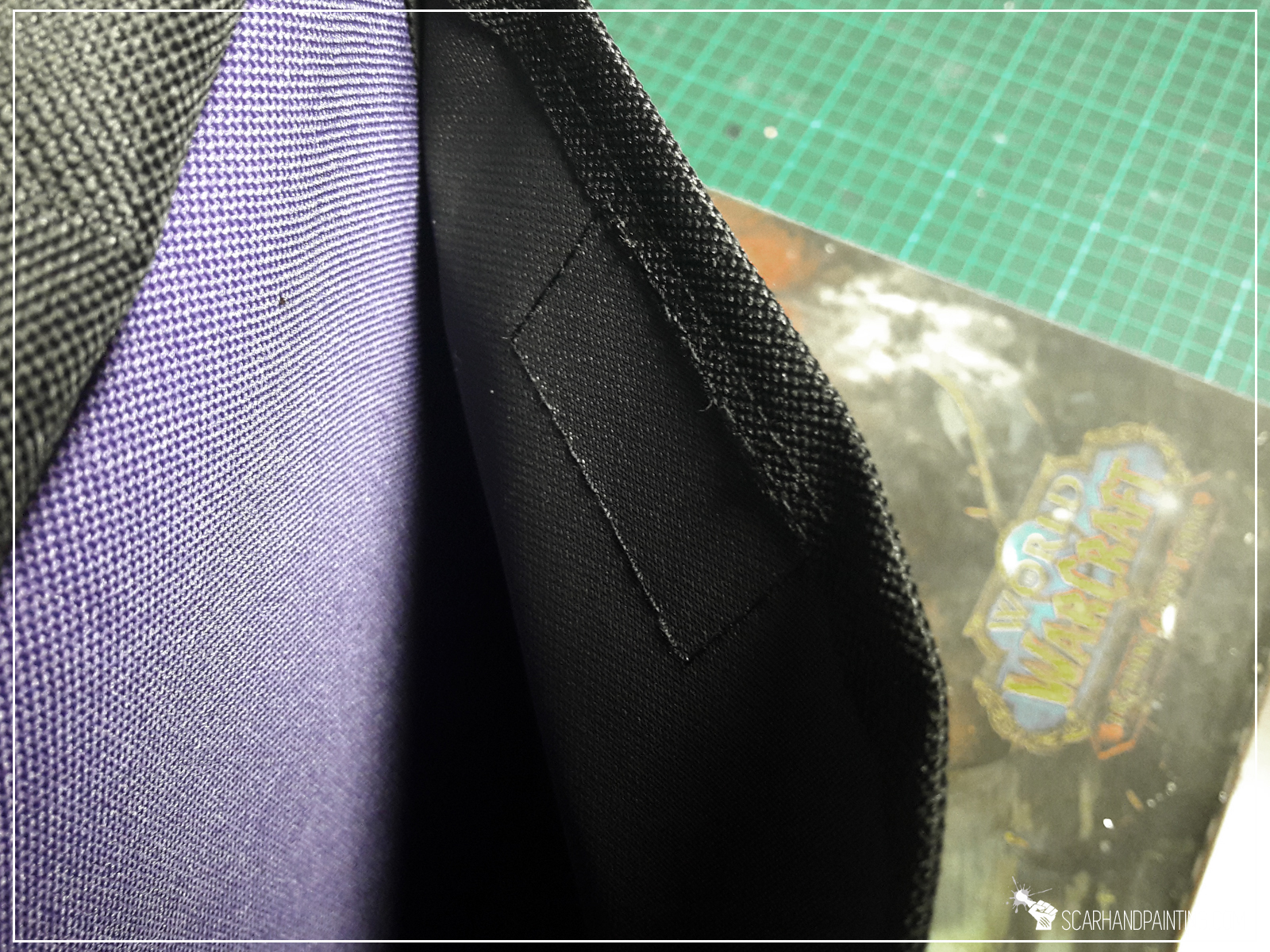


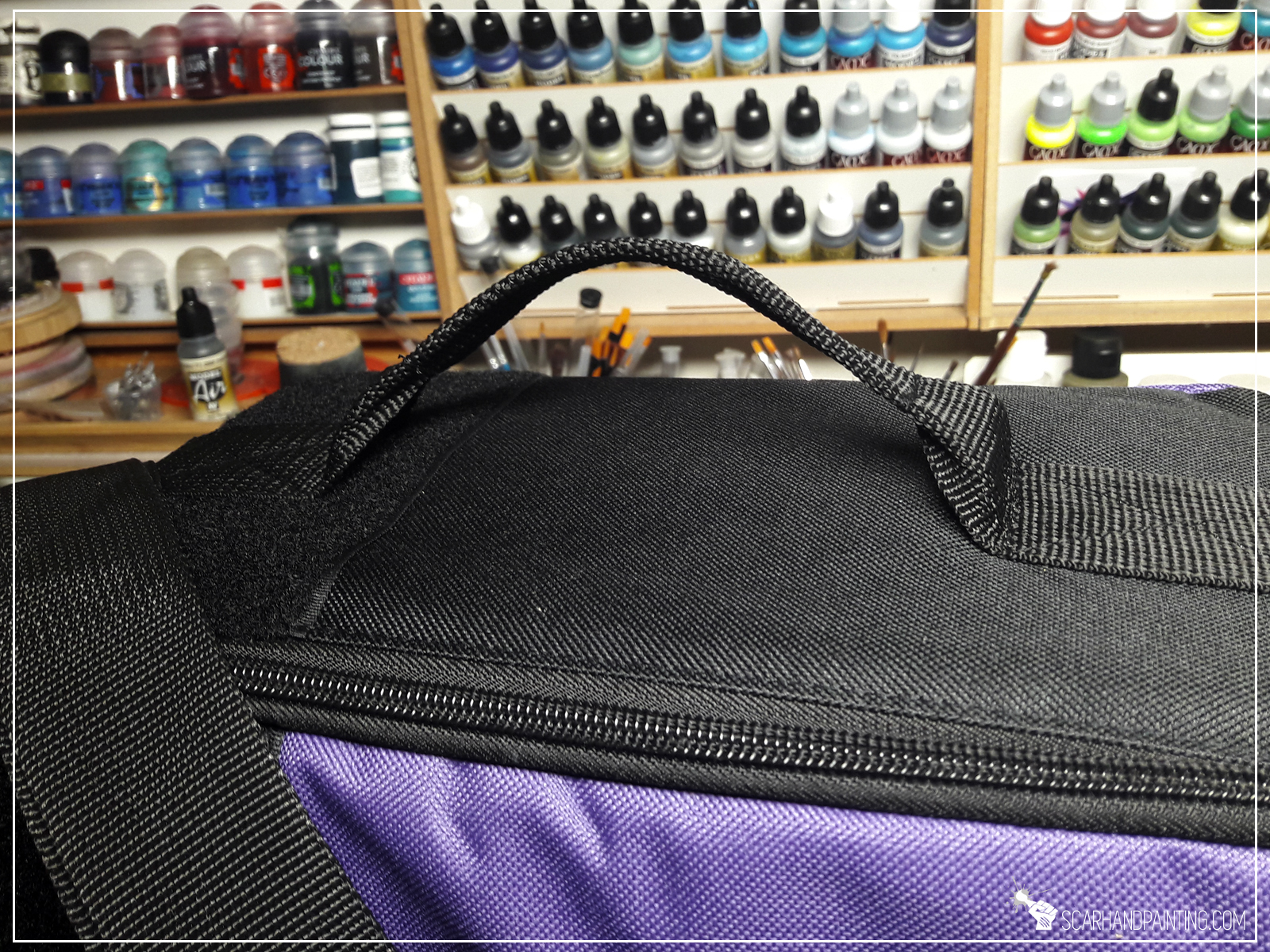
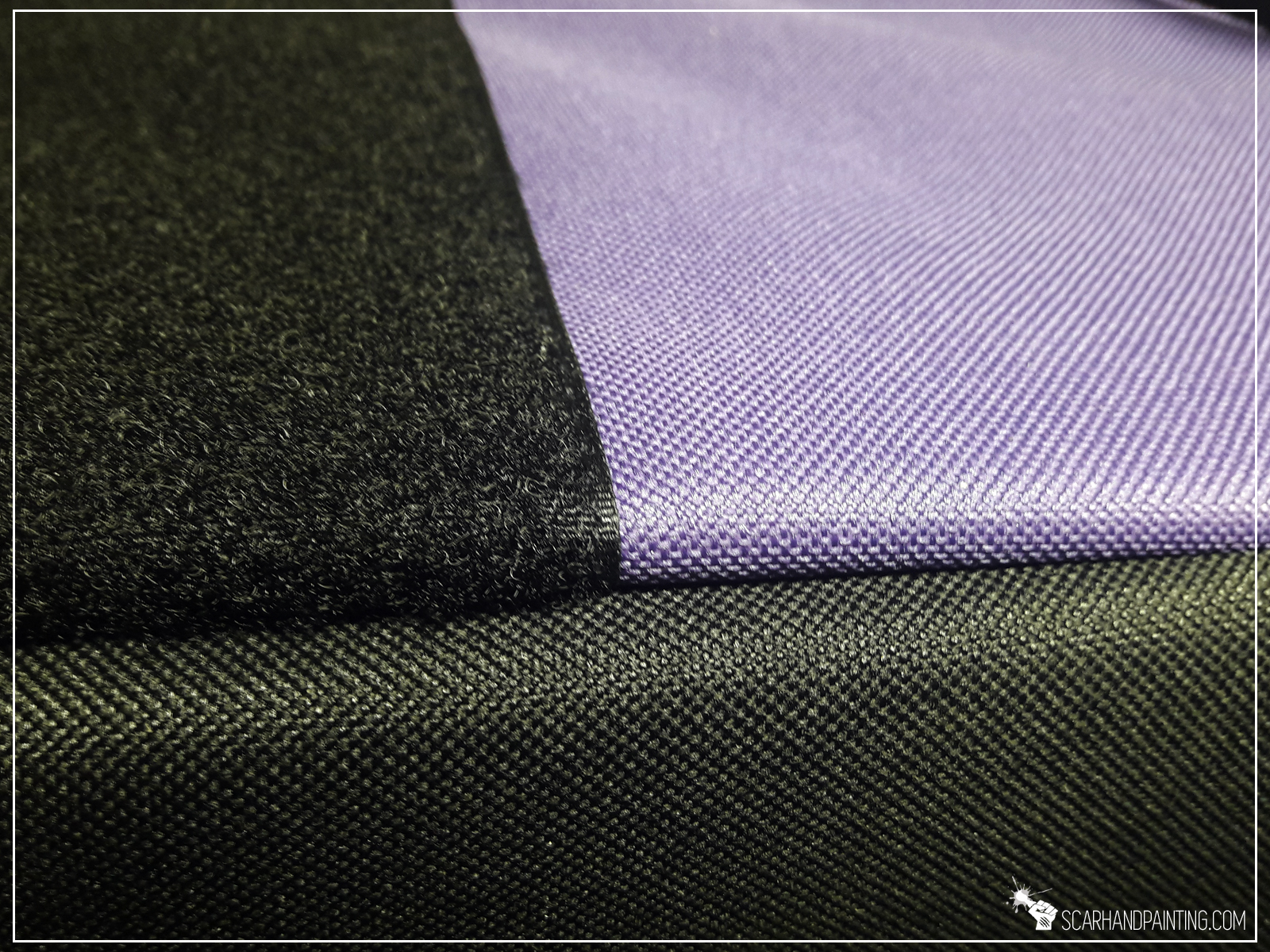
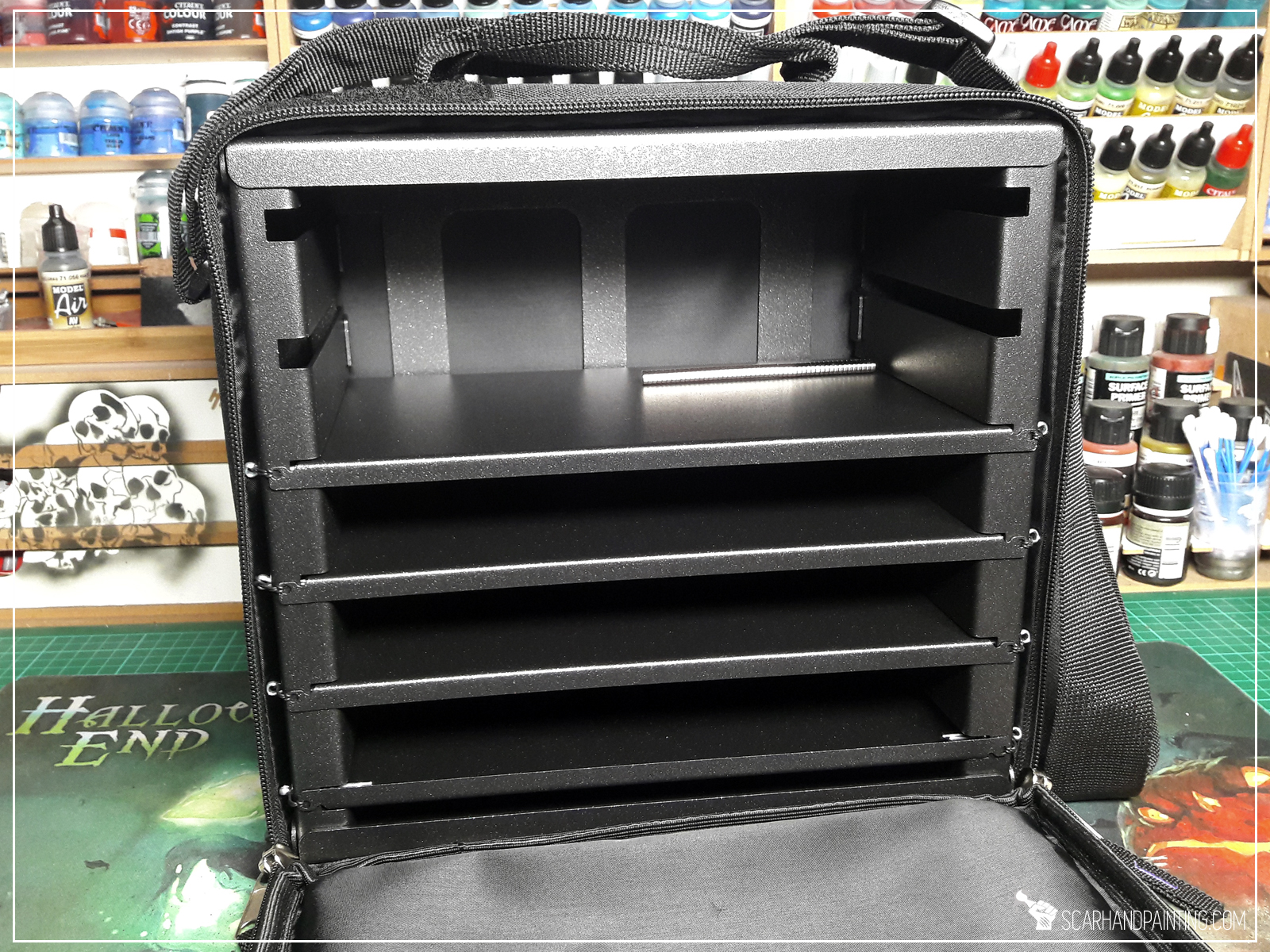
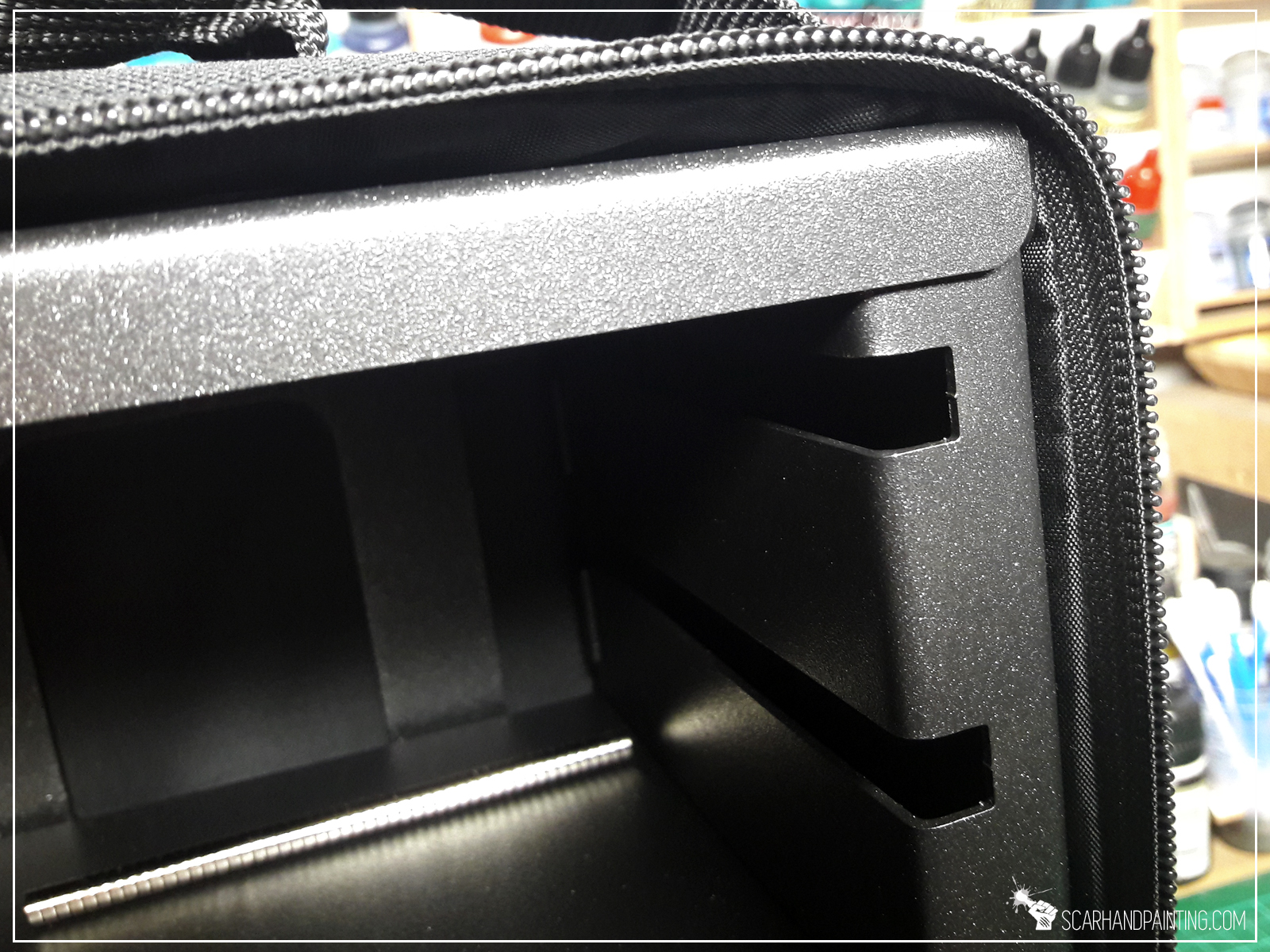
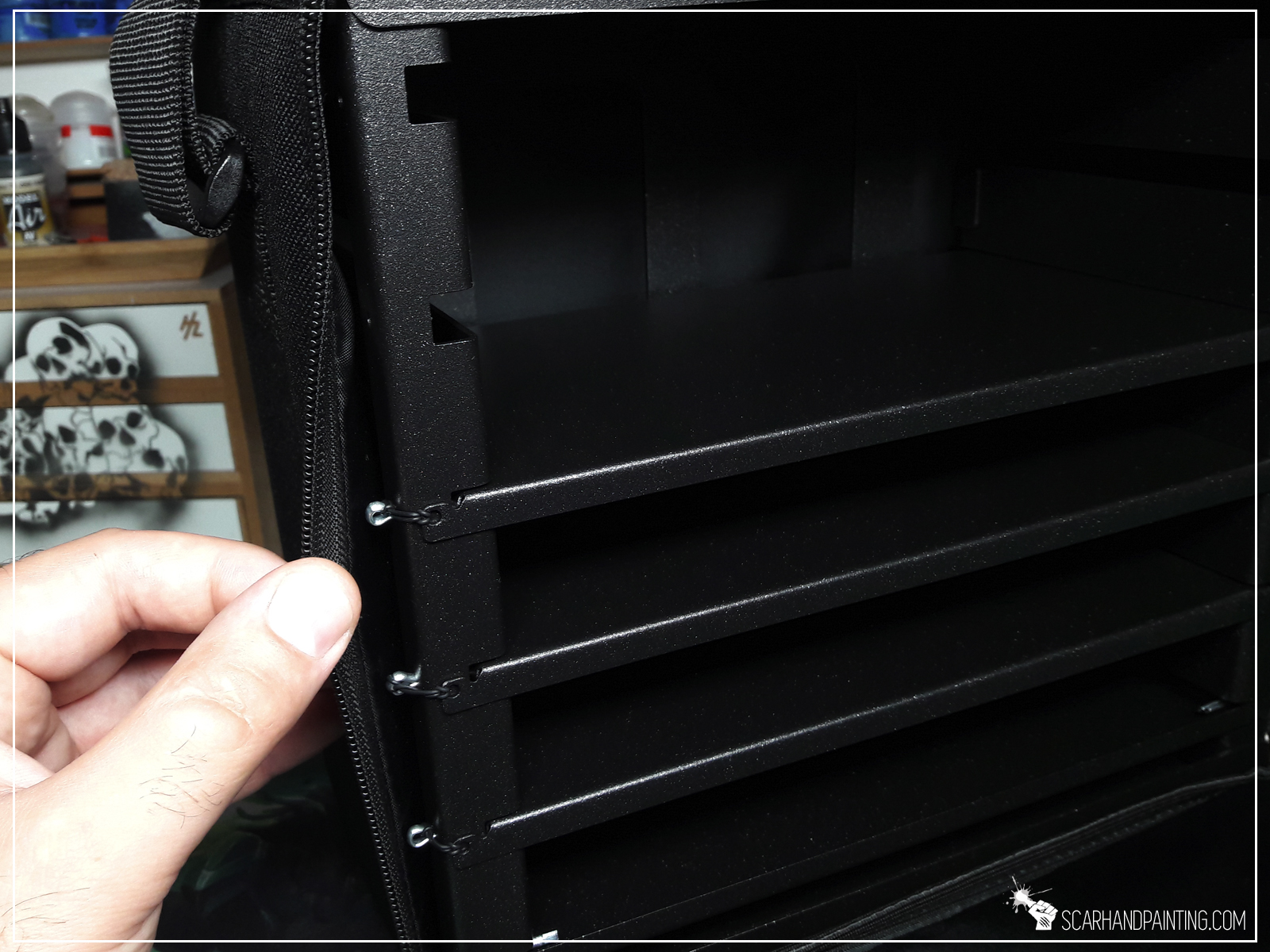
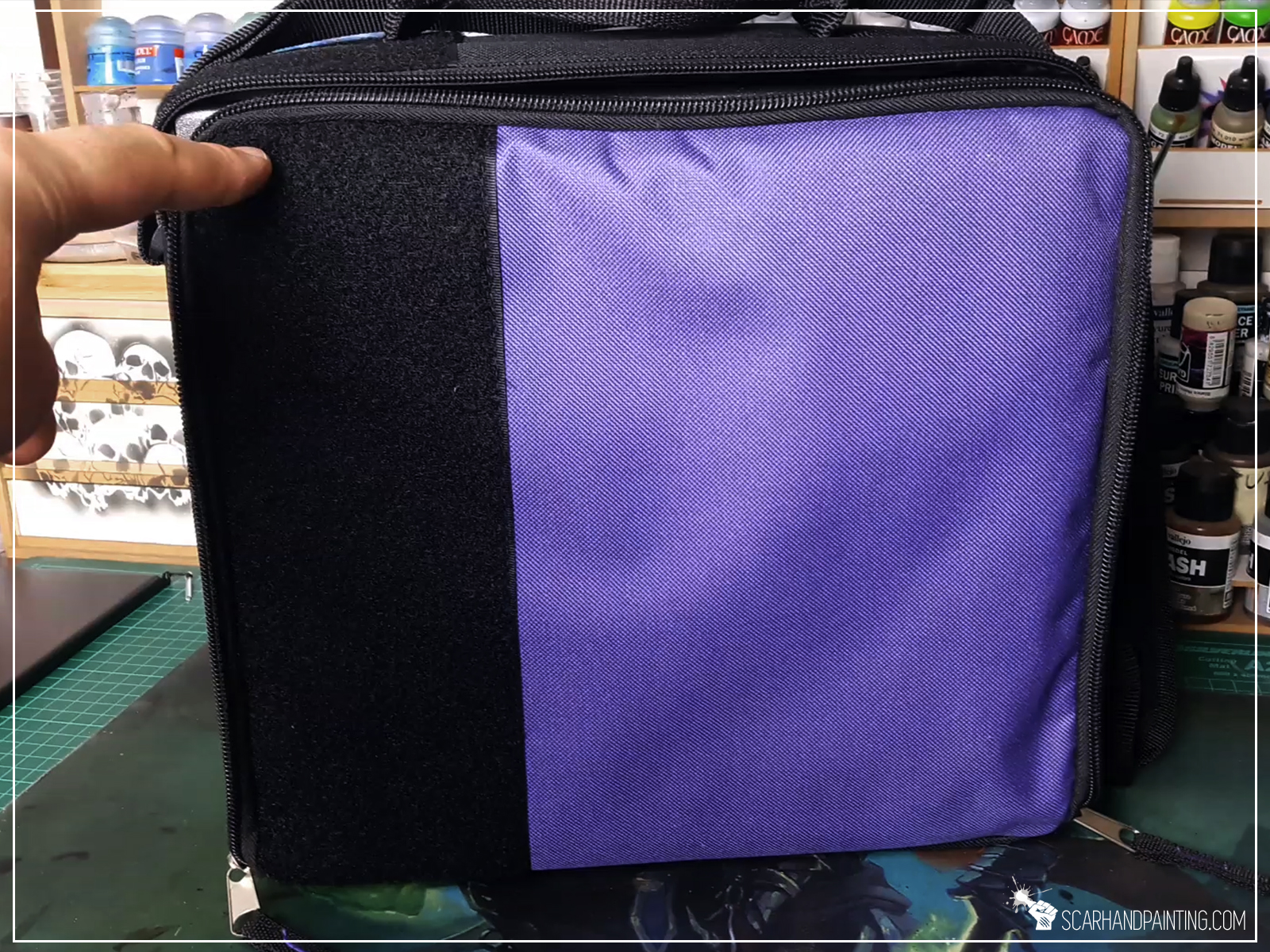
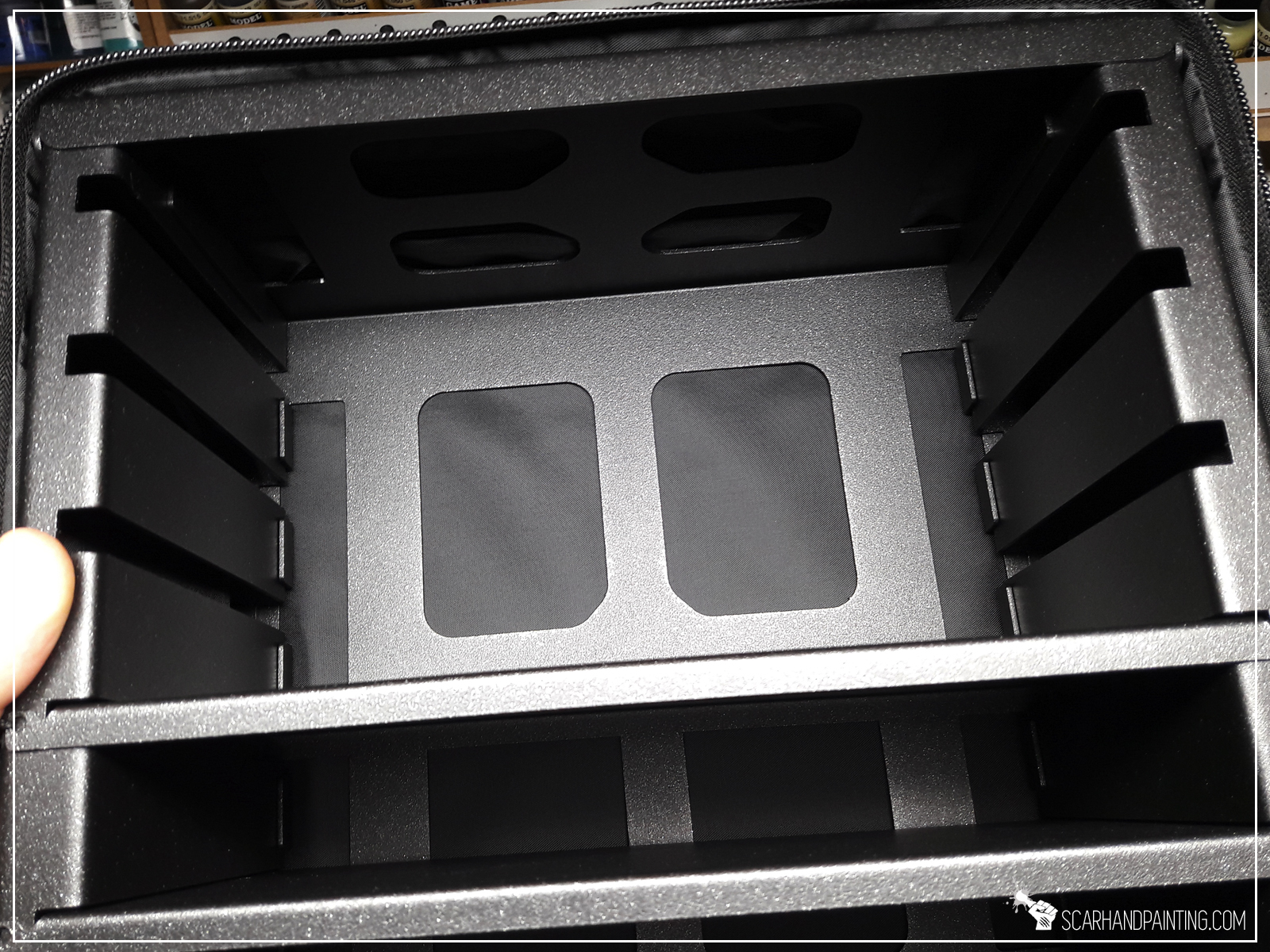
I know this part is totally subjective, but Dayum! The new case looks so good! Everything from design, through quality makes it feel prestigious, both in the inside and the outside. To be fair the sole look is what made me crave a Magnetic Case of my own when I scrolled through facebook and saw it time and time again. Just couldn’t resist. At least now you know why I’m so hyped about it.
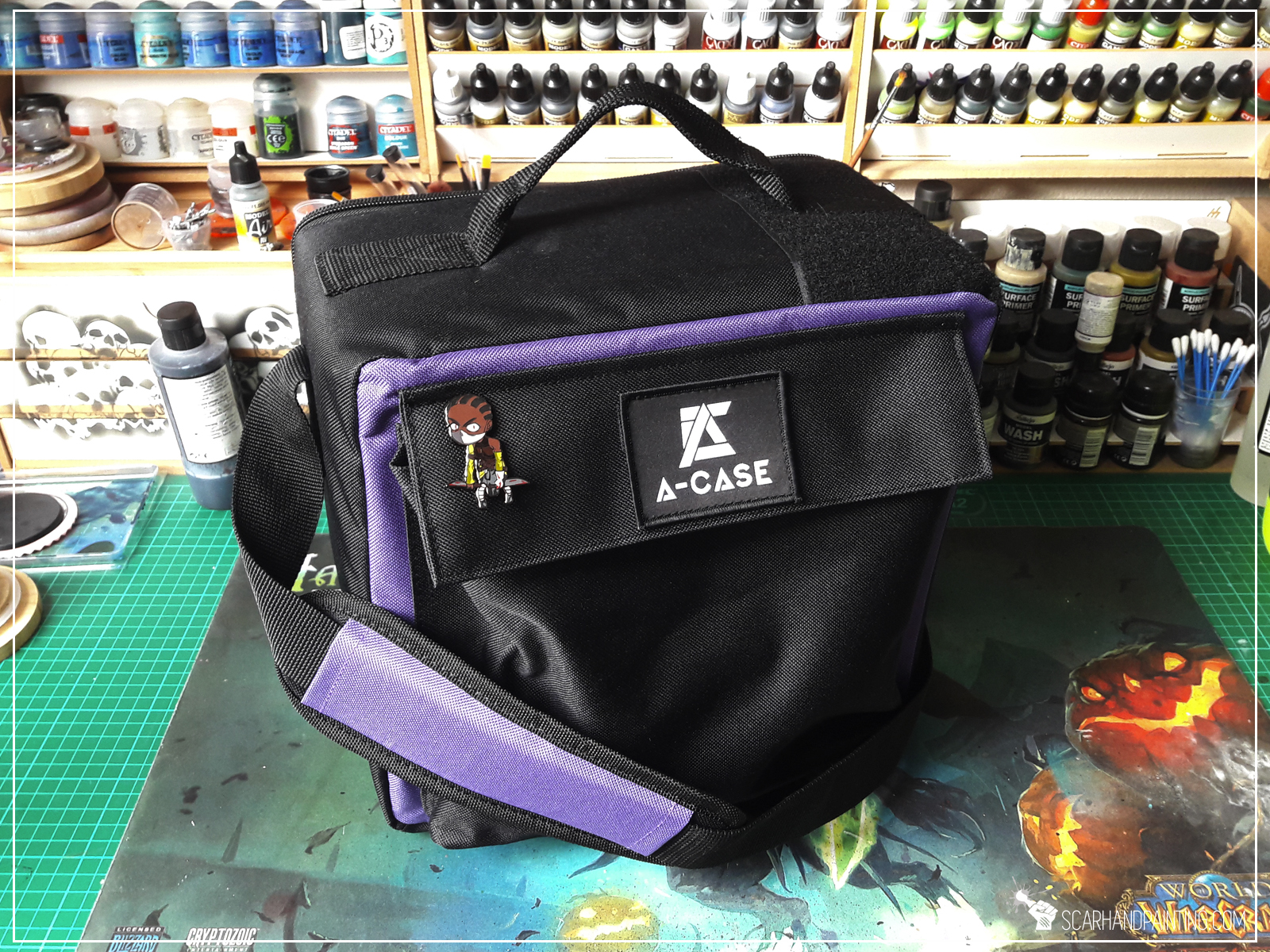



Coming from a position of an orthodox foam fan I have thoroughly tested this carrying case during last month. Apart from obvious features like light weight, comfort of use, adjustable strap with a shoulder pad, handle, large pocket and removable trays the Hybrid has some cool features that improve on the case’s functionality. A Velcro strap on top and at the front allows to attach badges, while water resistant material will keep your miniatures safe in case of bad weather. My favorite though are side pins to immobilize the trays in place. In previous series these might get lost but now attached with flexible straps they will follow the trays around.
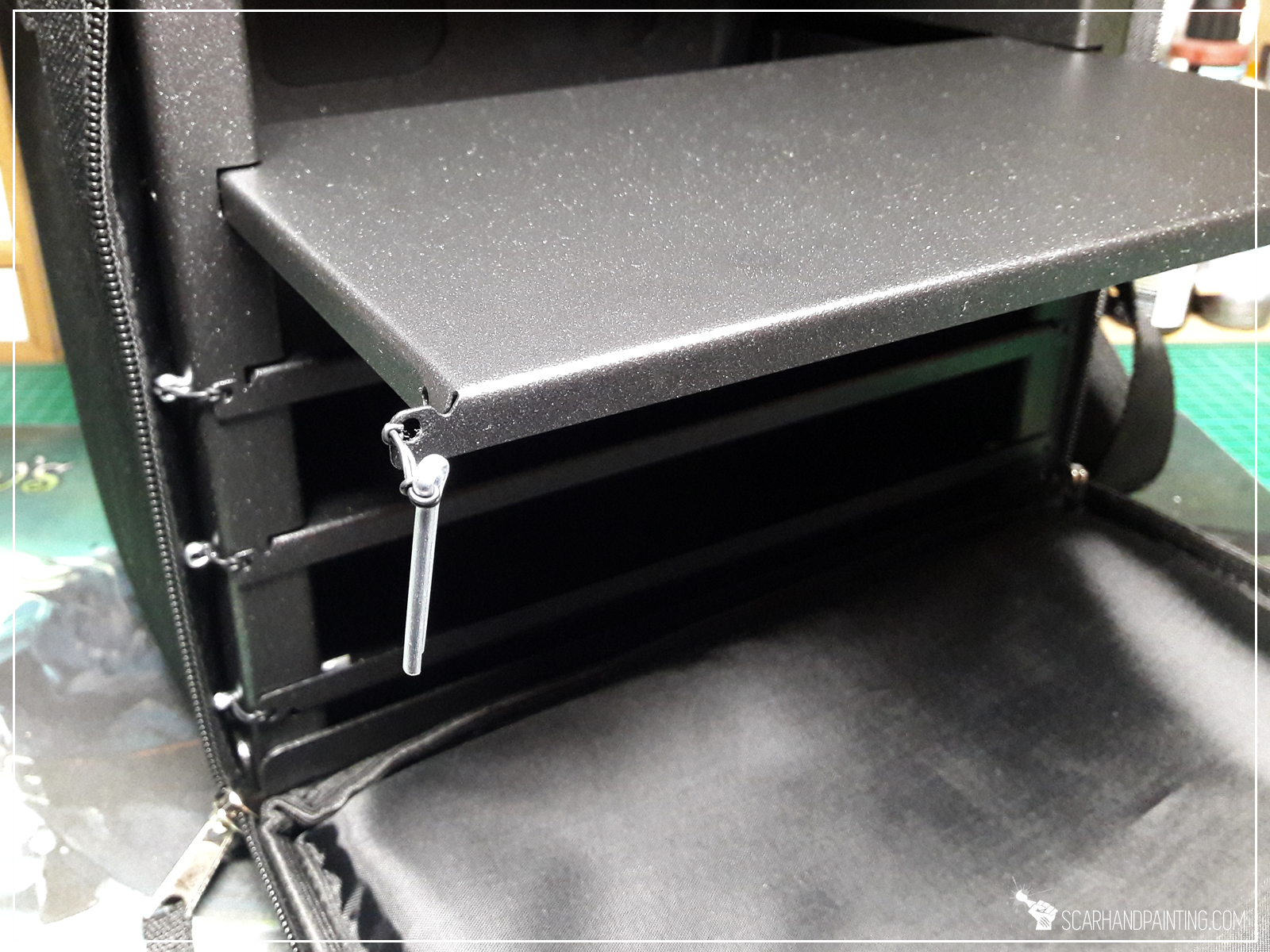
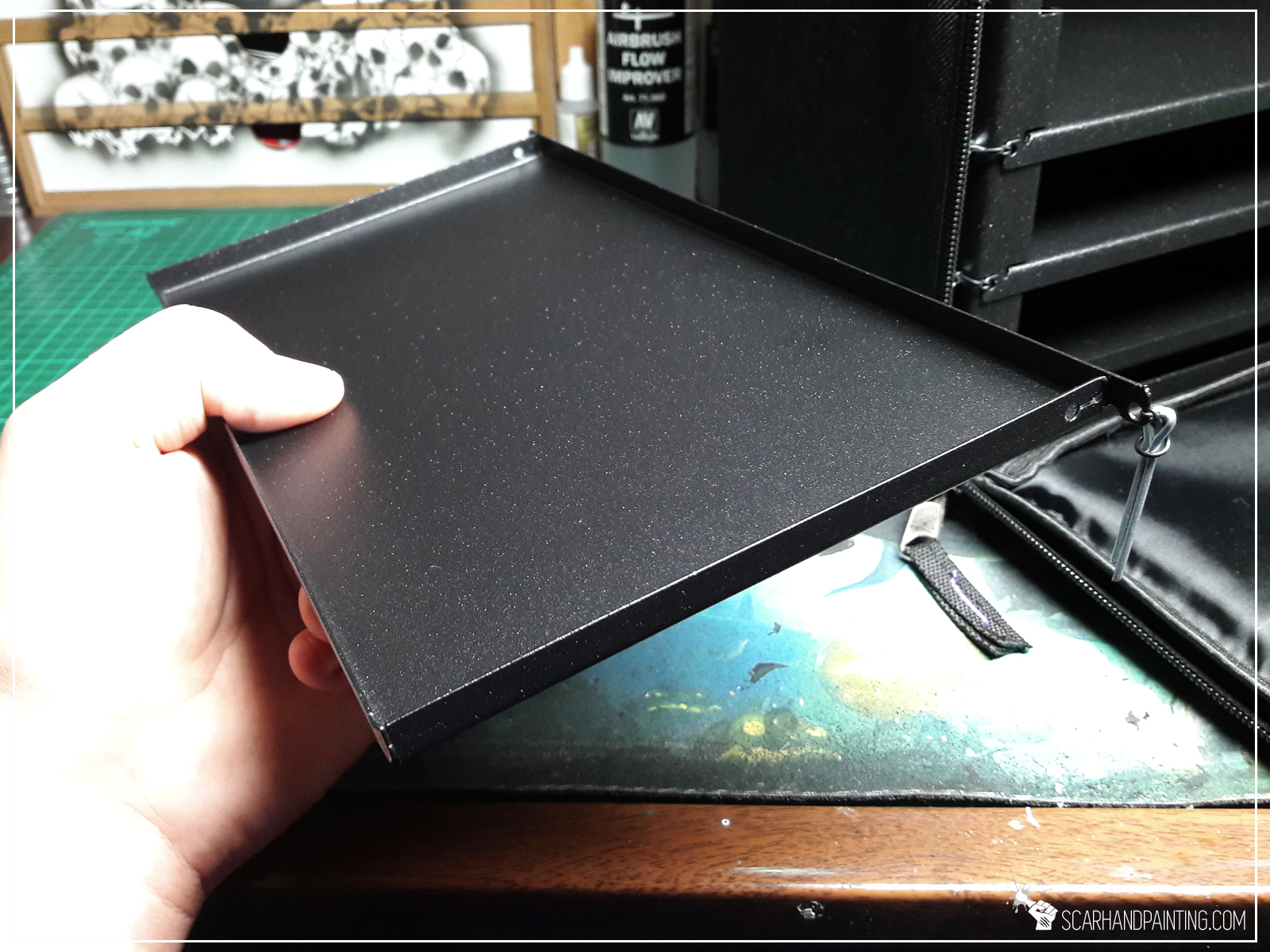




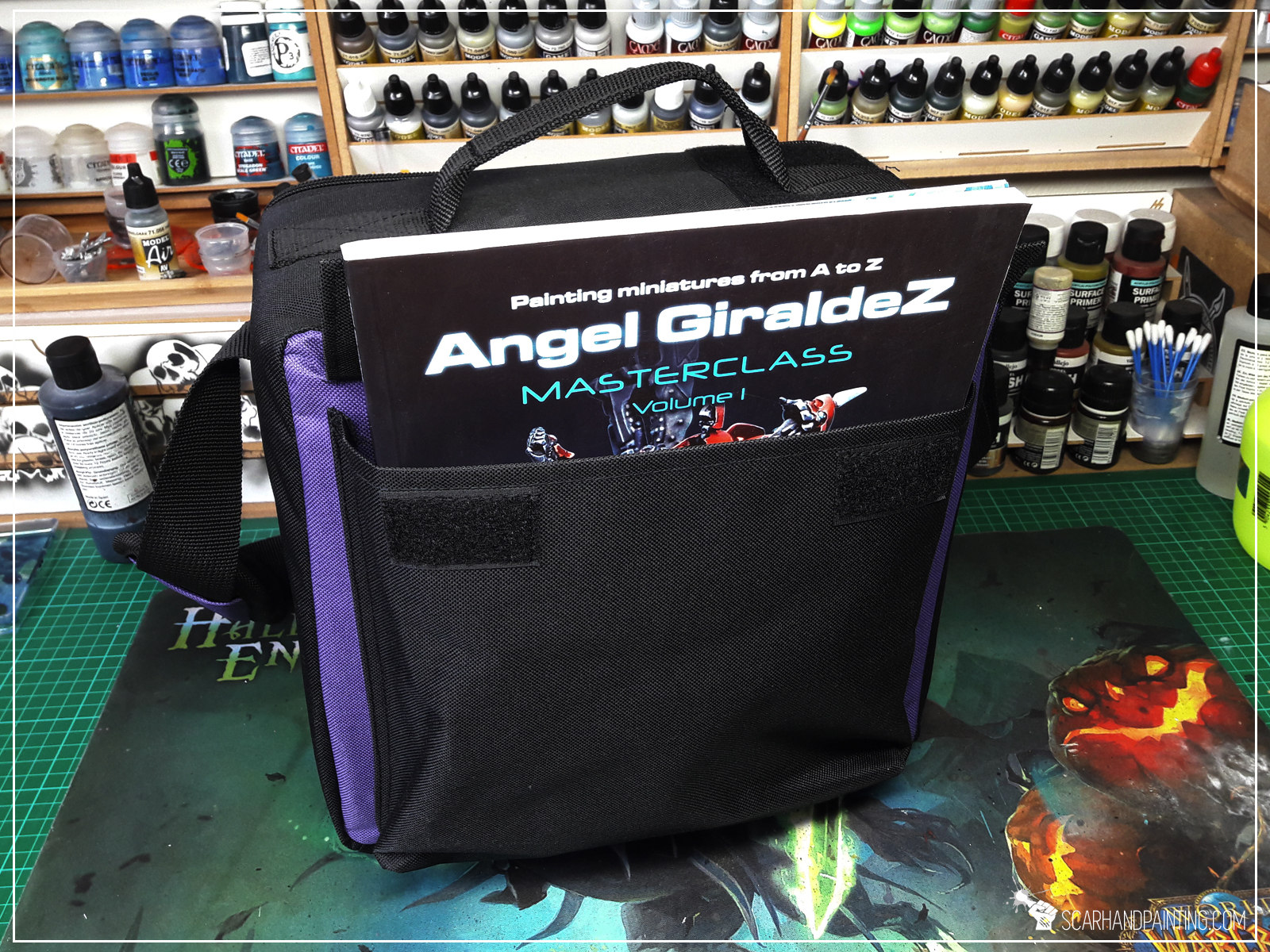
It’s not easy to compare A-Cases to other transportation cases as there’s really no high tier competition in the market. Yes, there are some magnetic cases out there (Battle Foam, Tablewar etc.) but most is just out of this league. The A-Case is more expensive than foam counterpart, but it offers a totally different method of miniatures transportation. One that does not involve your paint job touching anything, even as soft as foam. One that allows you to transport large quantity of miniatures in a rather small bag. Most importantly one that is durable and will last for years to come. In addition A-Case offers free shipping around the world and in some cases (like US) that means huge savings.
For me the pricing of this exclusive product seem fair. Taking the cost of miniatures and time/money spent on painting into consideration, it seems like a reasonable price for solid, comfortable and very aesthetic protection.


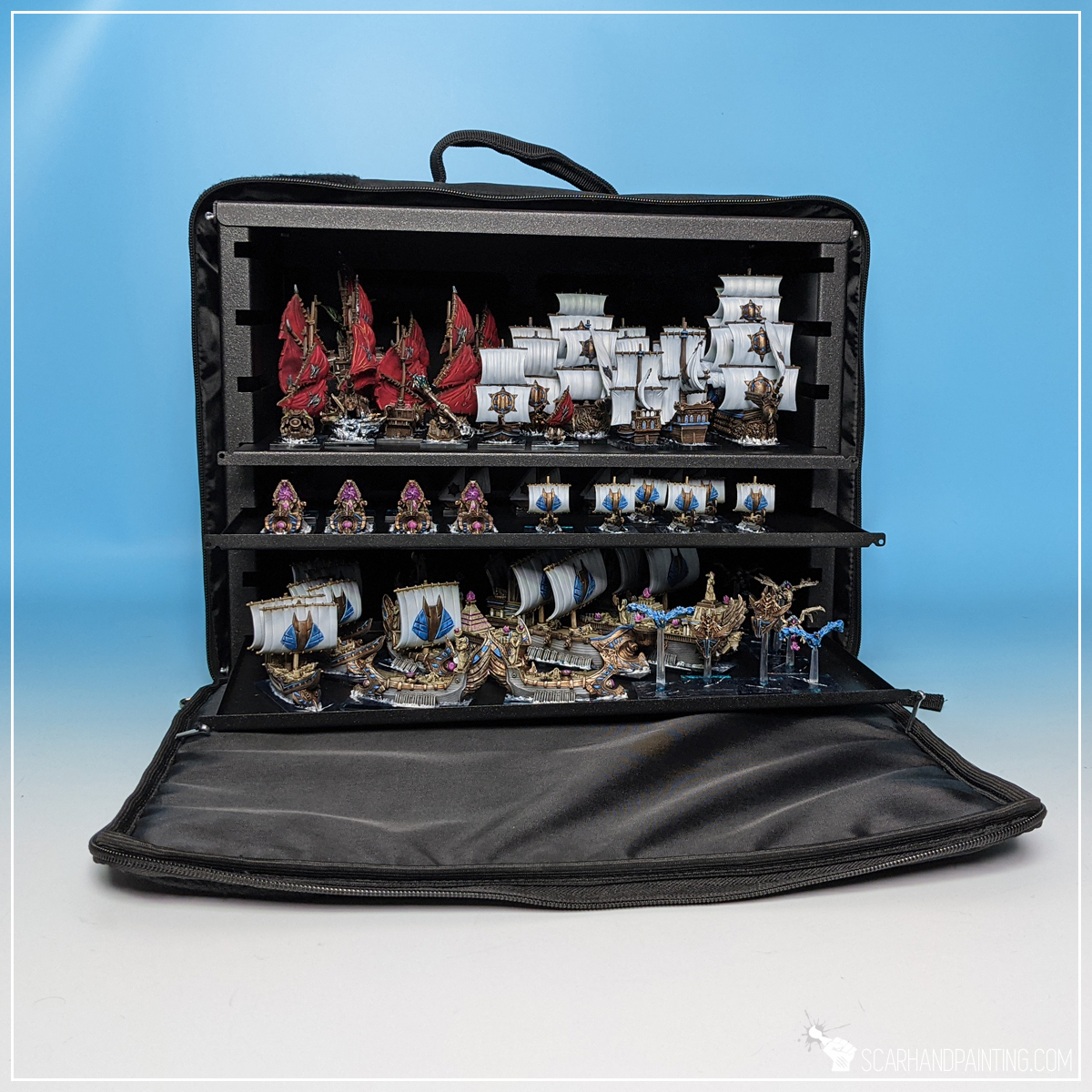
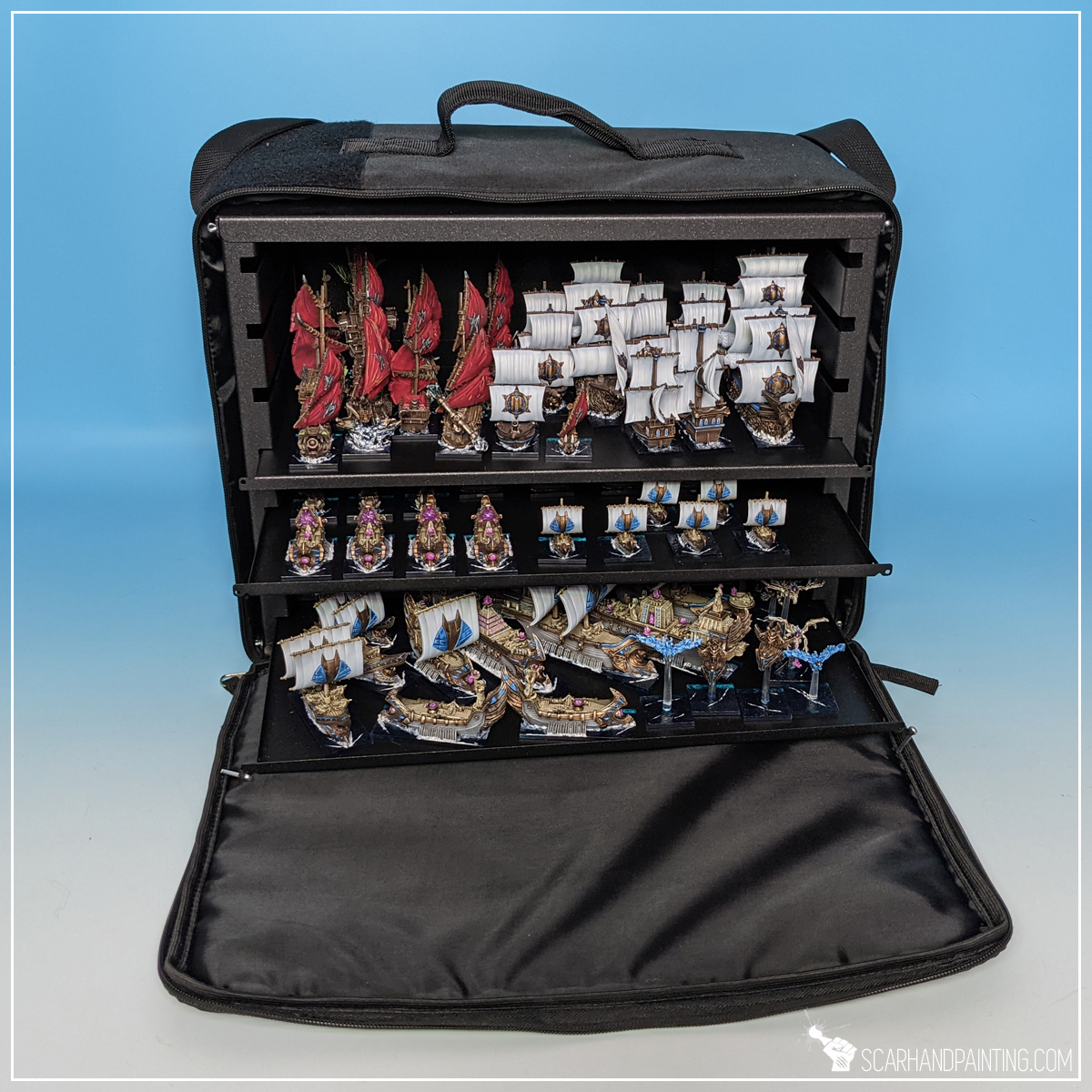
To summarize, if you’re looking for a solid and comfortable way to transport your miniatures – A-Case is the thing. It looks great, it is very comfortable to use, made of high quality materials and with utmost care for detail. A bit on the expensive end of the hobby, although still reasonably priced. Personally I love it, as A-Case totally revolutionized my approach to Magnetic transportation and ended twenty years of my foam addiction.
A-Case Hybrid Series is available at:
A-Case website,
A-Case Facebook,
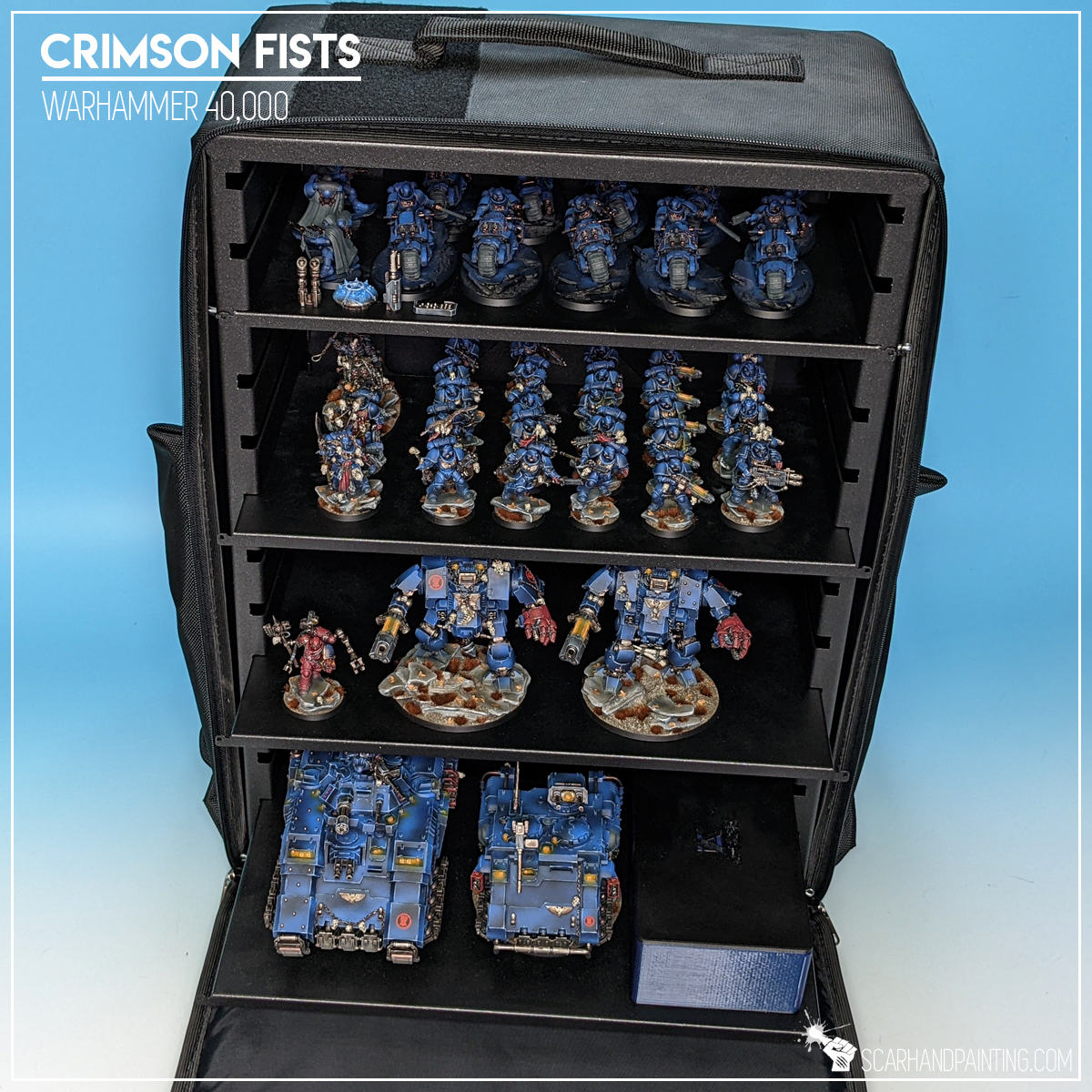
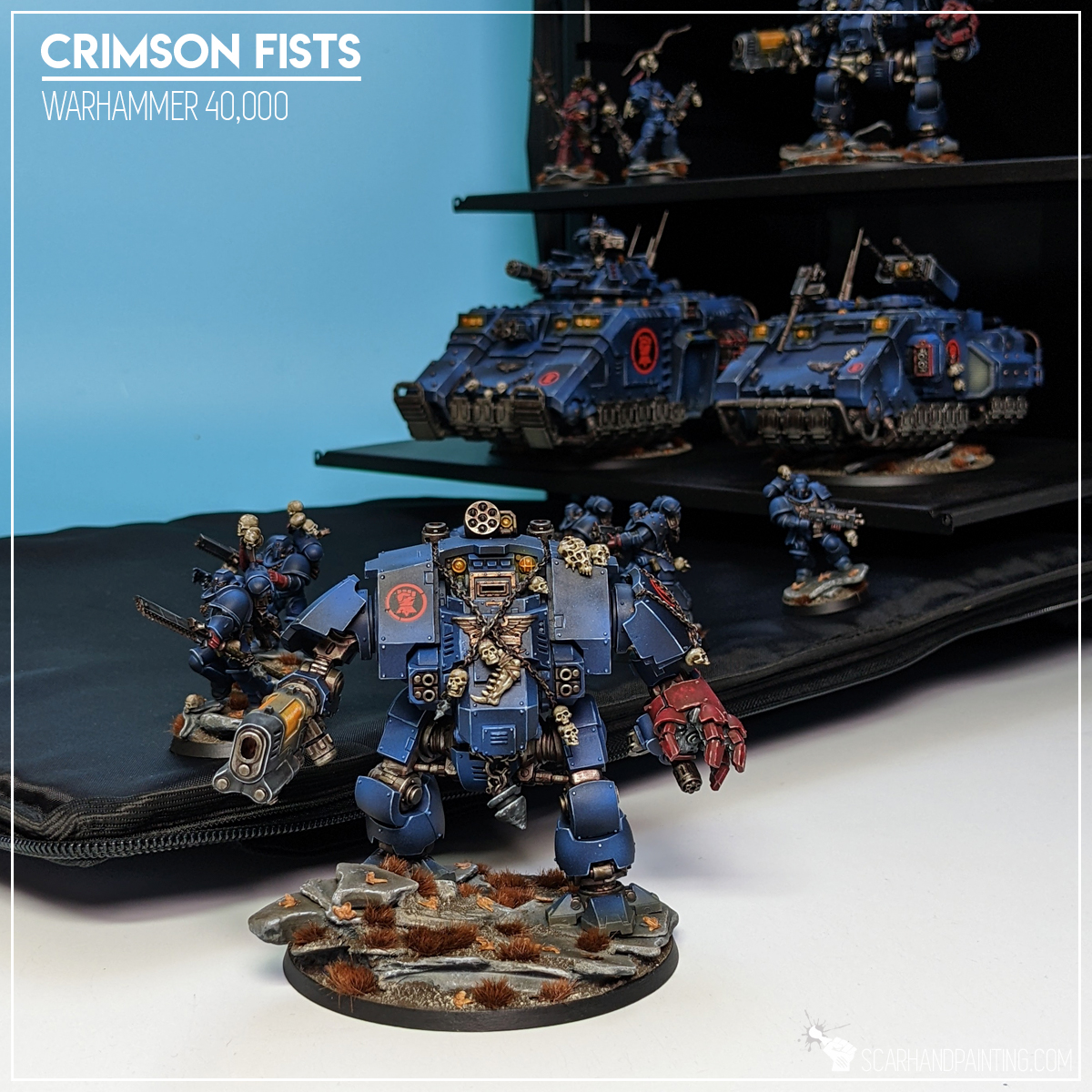
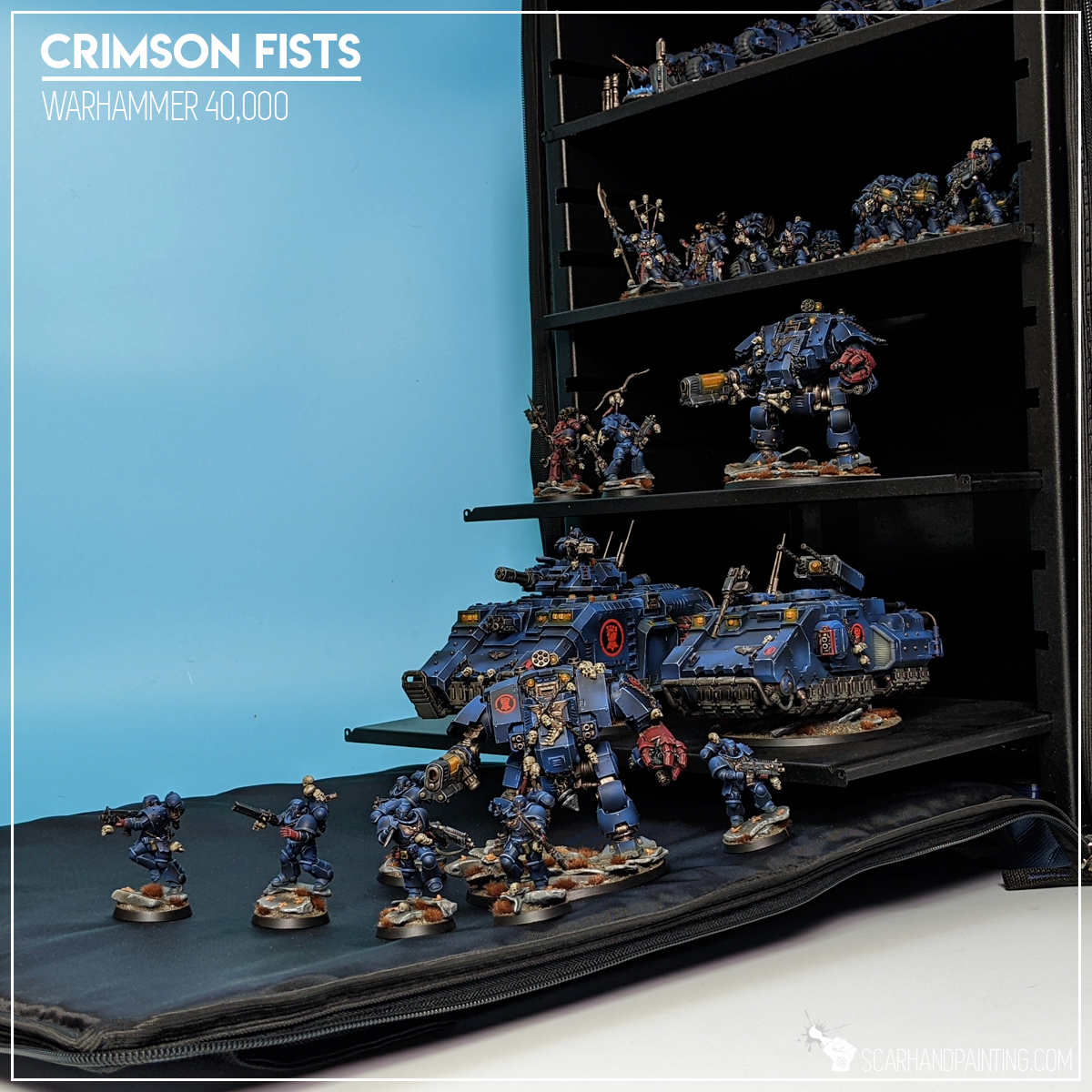

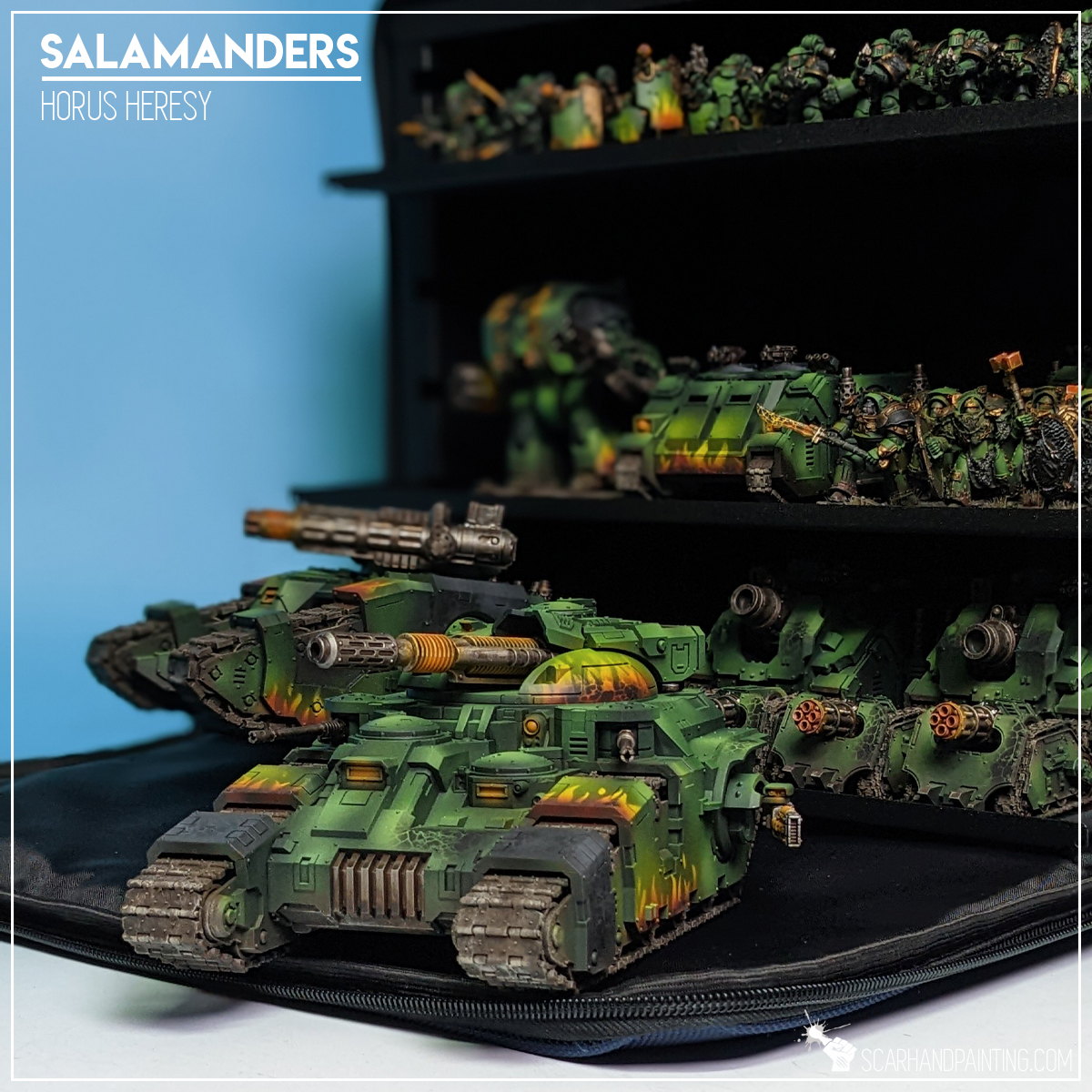
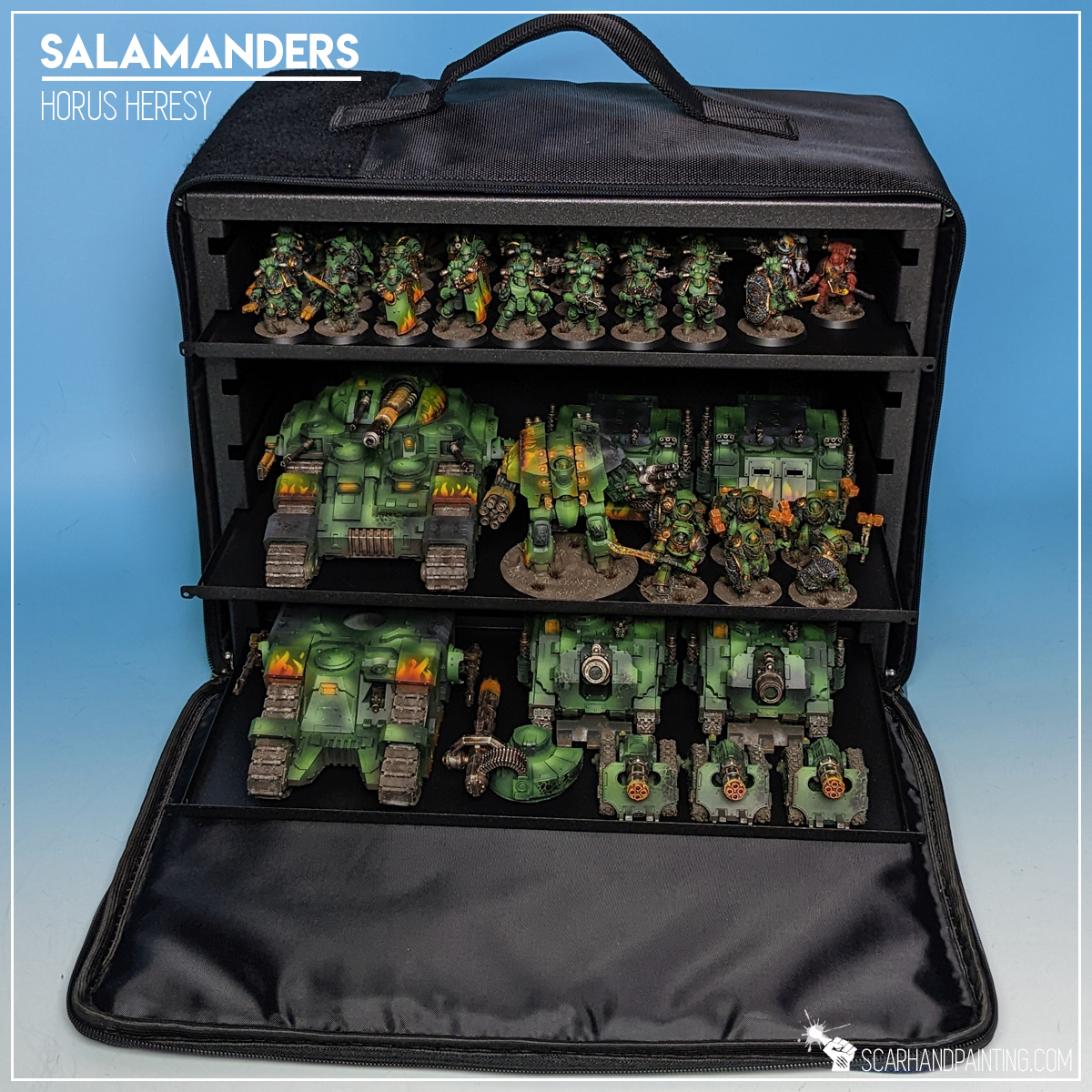
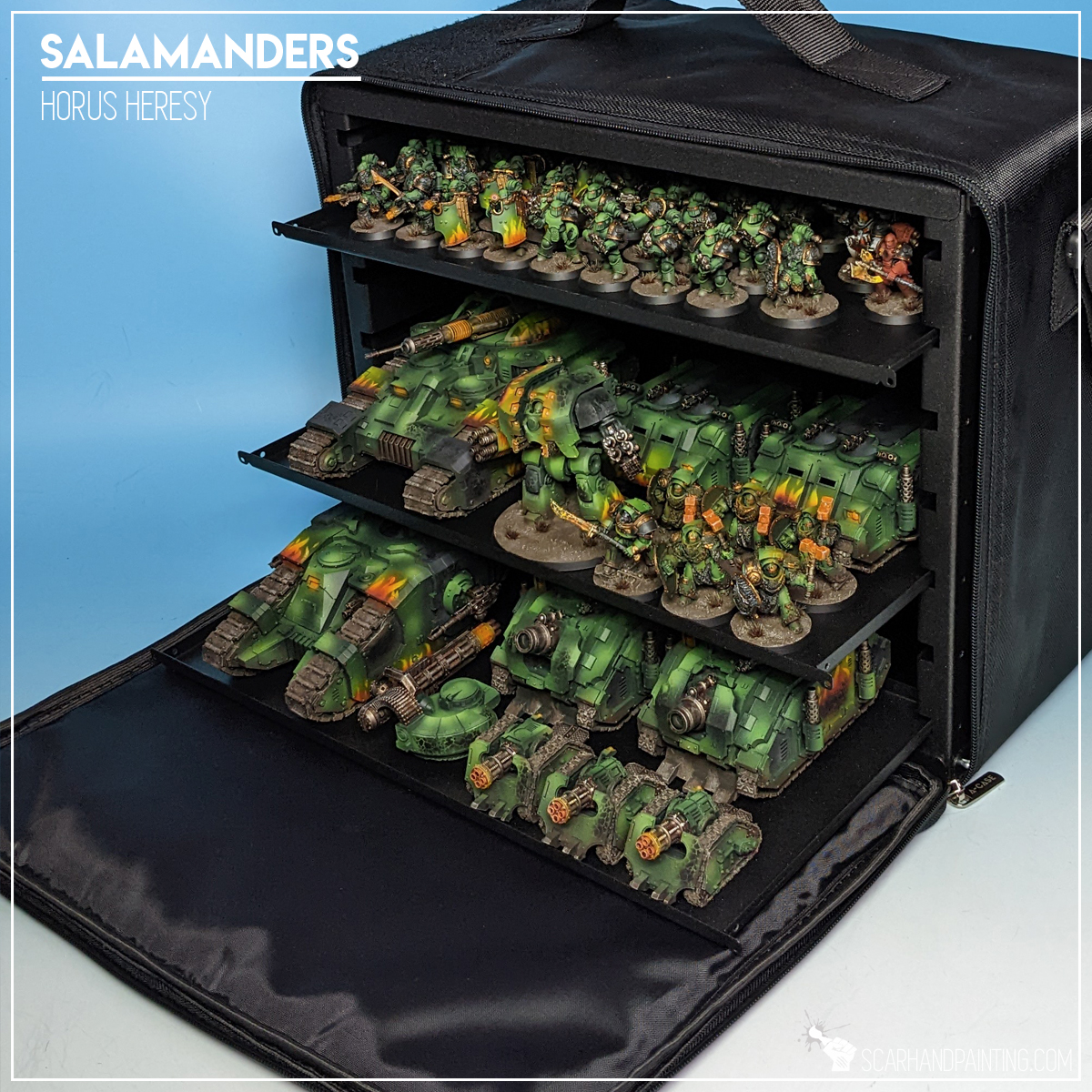

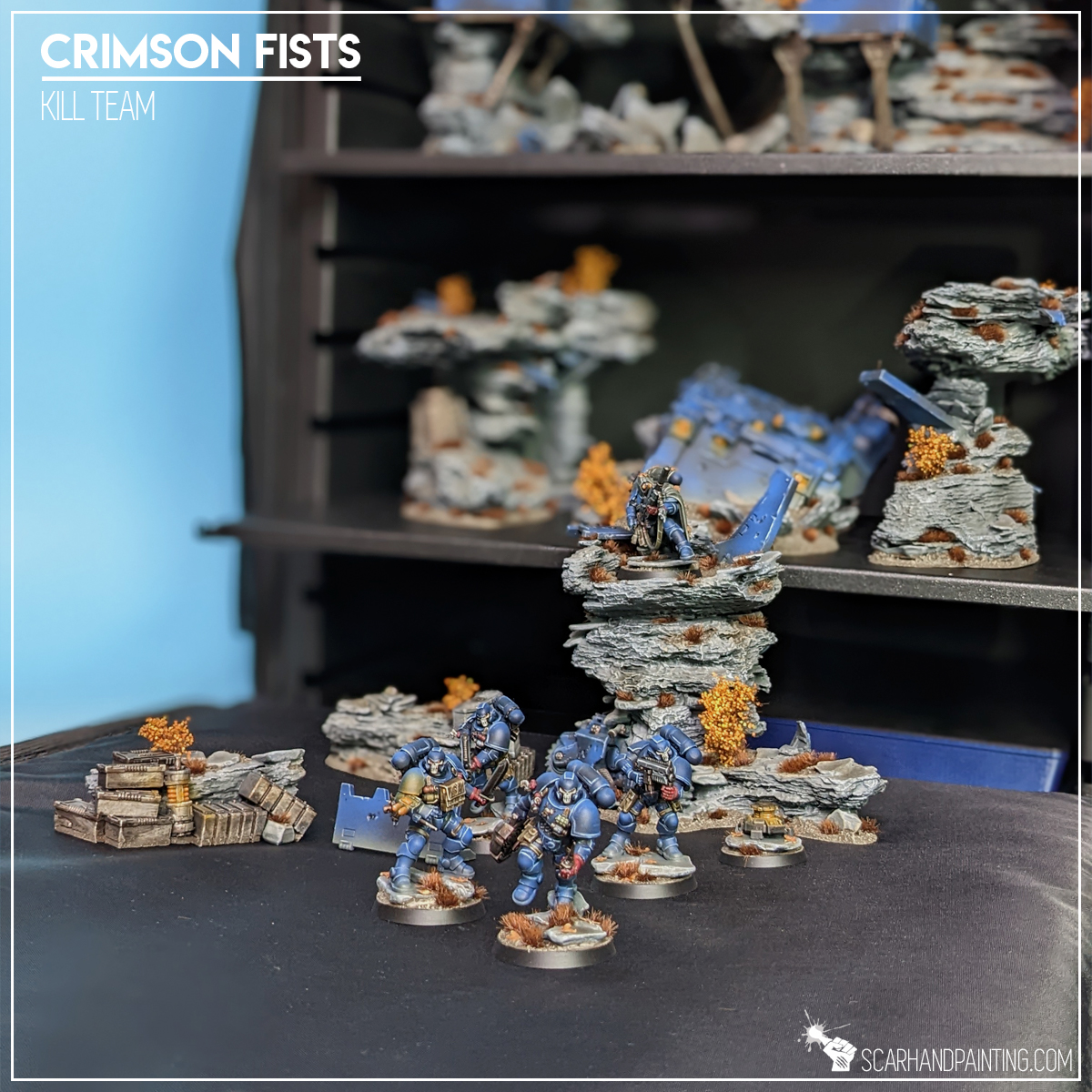
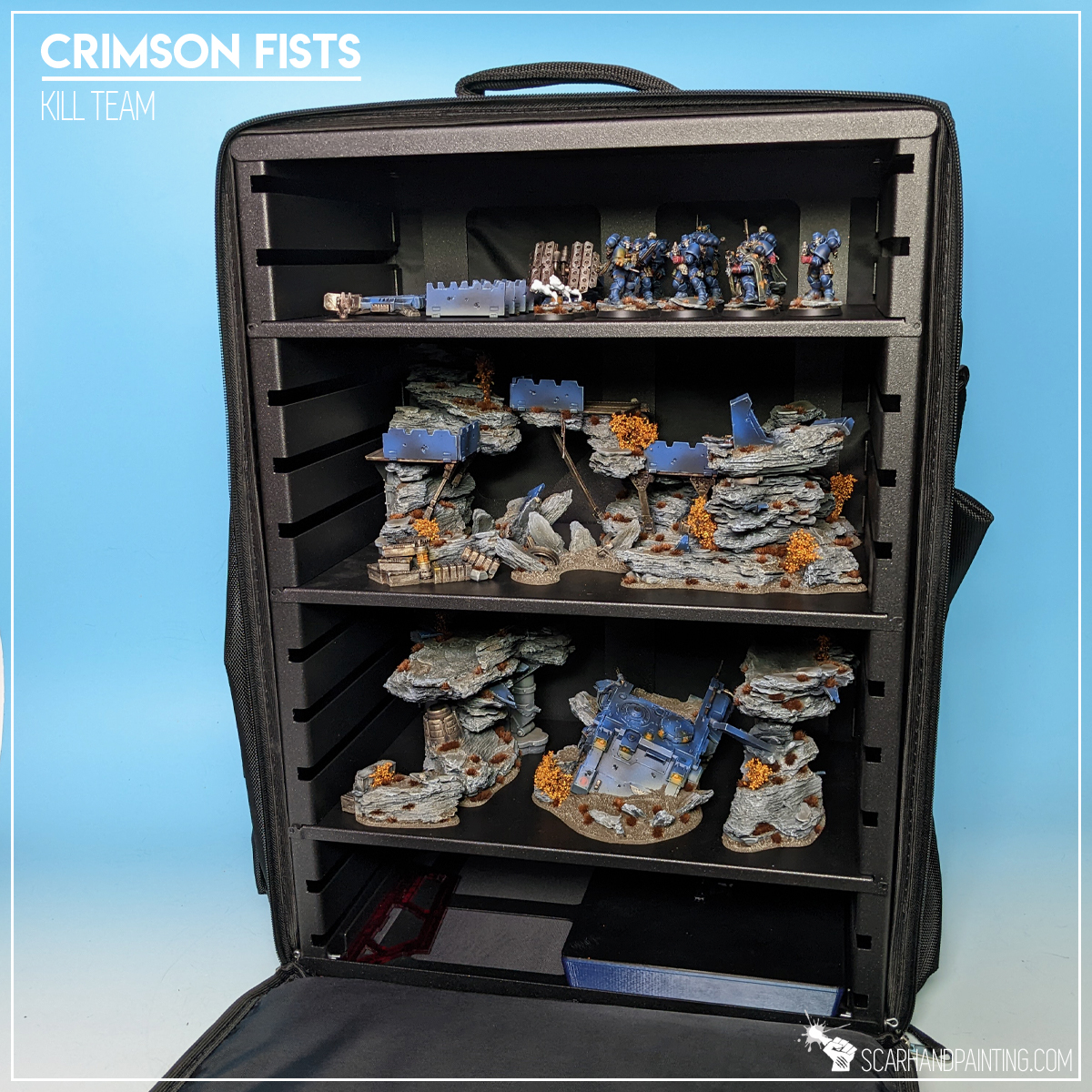
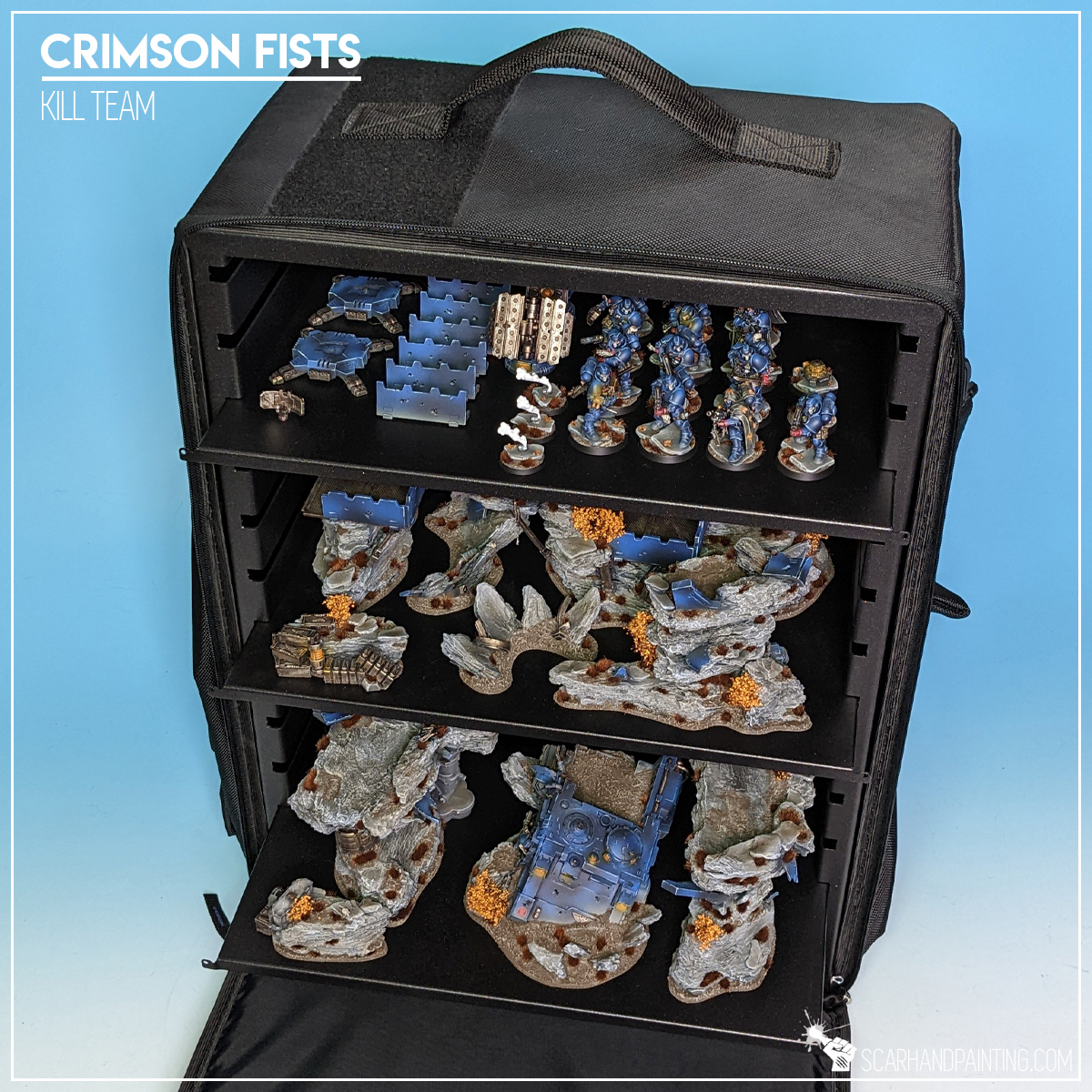

I hope you find this review interesting. Be sure to let me know your thoughts in the comments at Facebook or Instagram. I would also appreciate if you considered sharing this content with your friends, who might find it useful. Finally if you are looking for a professional miniatures painting service, be sure to contact me with this contact form. I always reply within 24 hours, after which please check out your spam folder.

In this step-by-step tutorial I’m going to show you how to base miniatures.

Basing miniatures is an overall easy thing, still every now and then I stumble upon hobbyists asking on how to properly do it. Let’s start the answer with: “There’s no one proper way, but there are certainly plenty of bad ways to base miniatures.” A quick example of a “bad way” would be if you glued irregular sand on top of a base and tried to glue a miniature on top of it with cyanoacrylate glue. Glue would go on a rampage all over the sand while it won’t hold the miniature in place due to insufficient area of contact. Another example of a “bad way” would be gluing a miniature on top of a painted base without a pin resulting in miniature being glued to paint rather than the base. This can only end badly for the miniature and your paint job. Ok, so what are the “proper ways”? Here’s three major techniques I use:

Some miniatures seem stable and have a large, flat area at the bottom be it giant feet, or an underside of a robe. In this case I usually go with with no pin at all and trust in the vast area of contact to keep the miniature in place.
Here’s how I go about it:
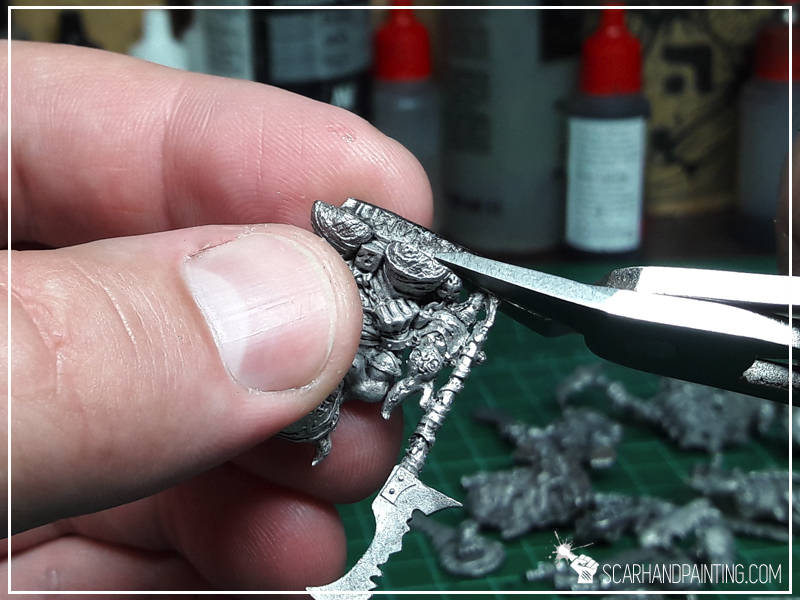
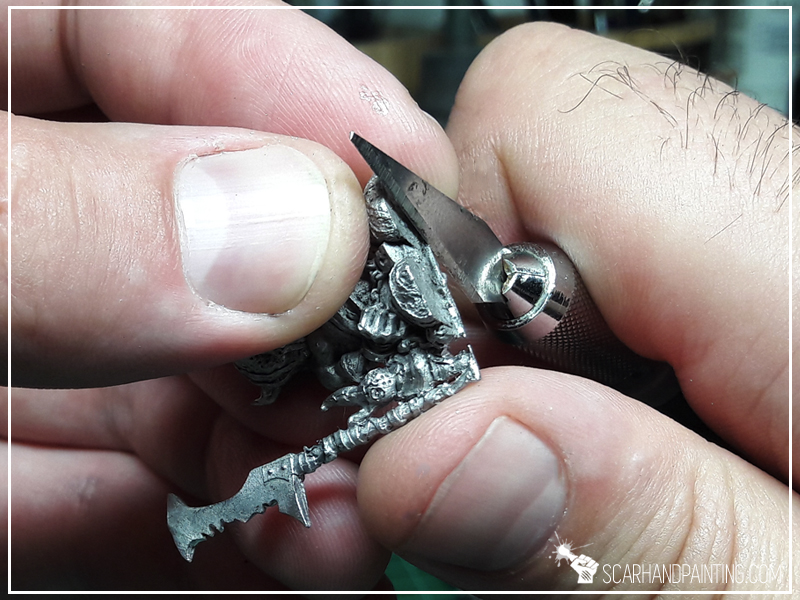
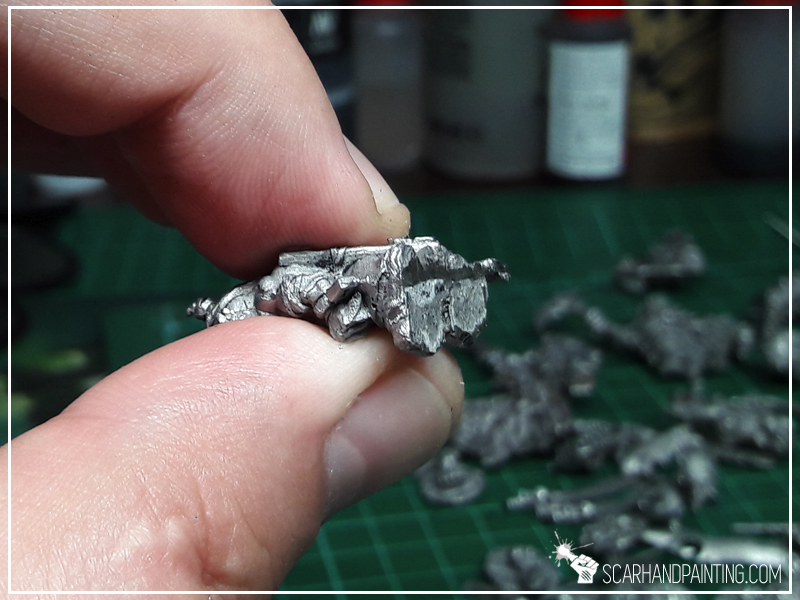
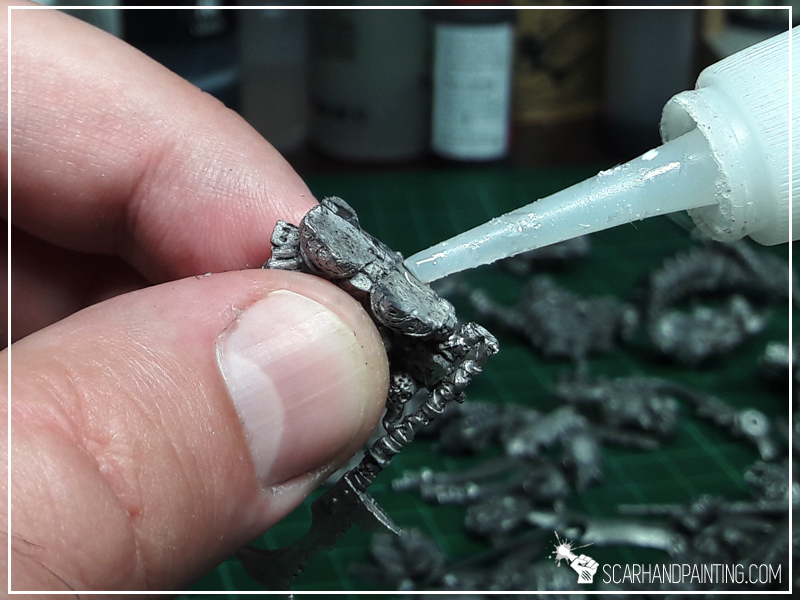
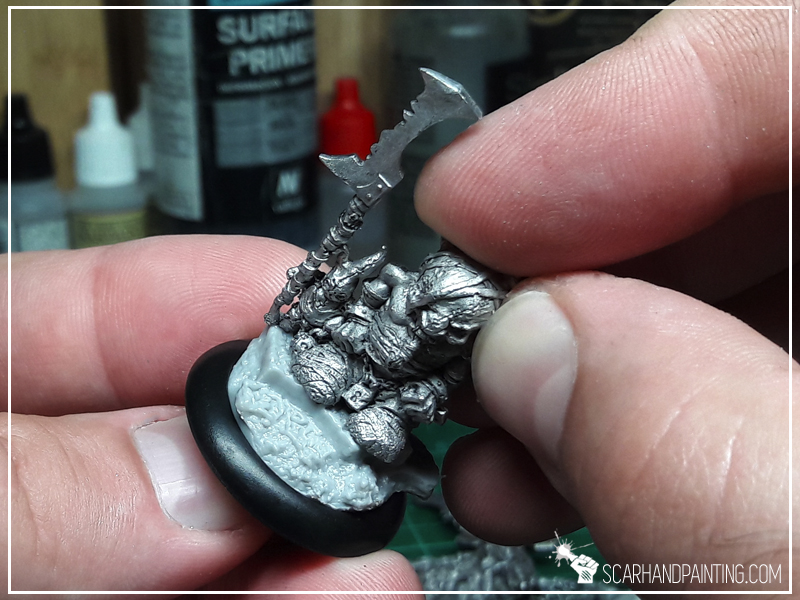
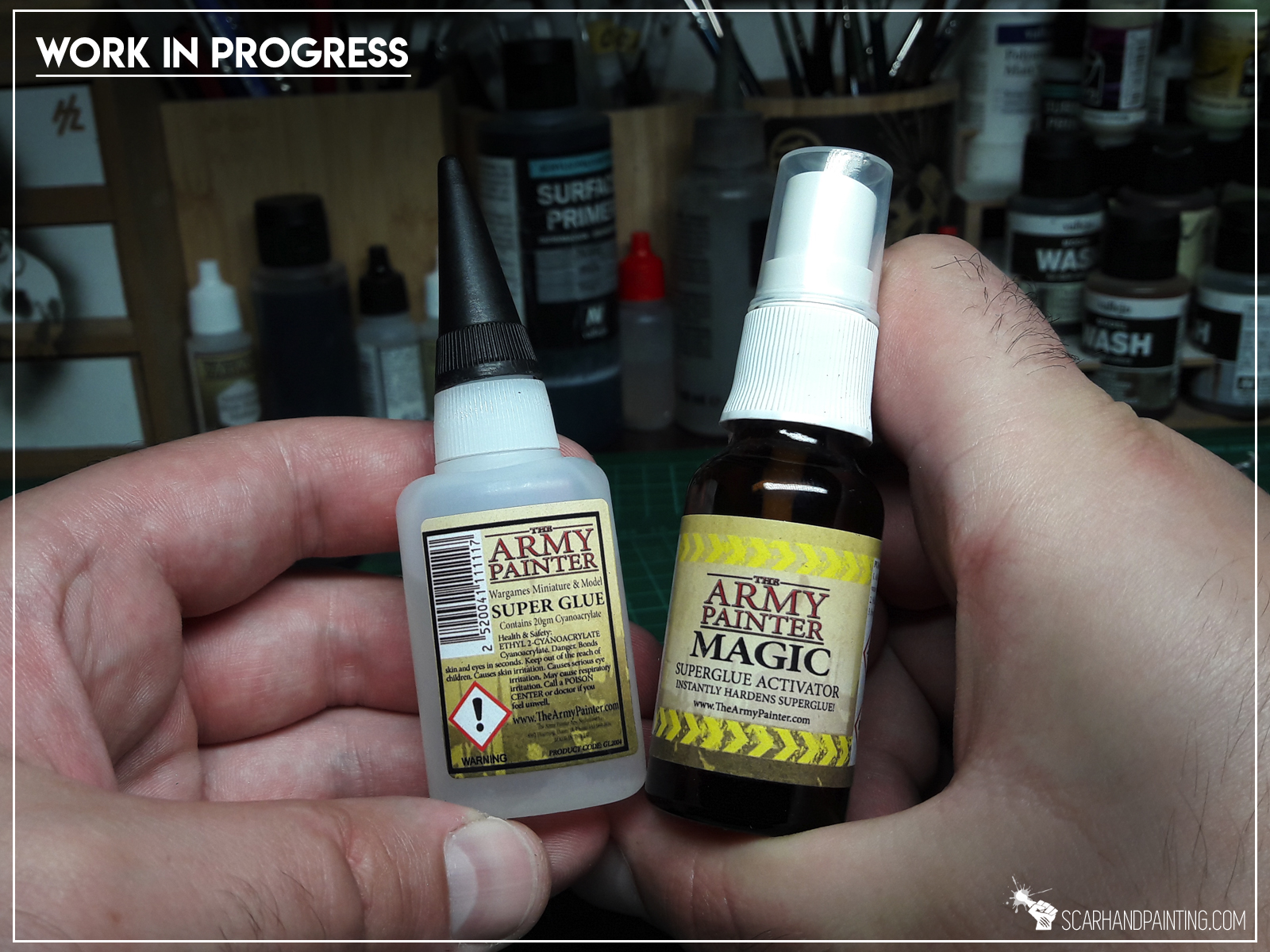
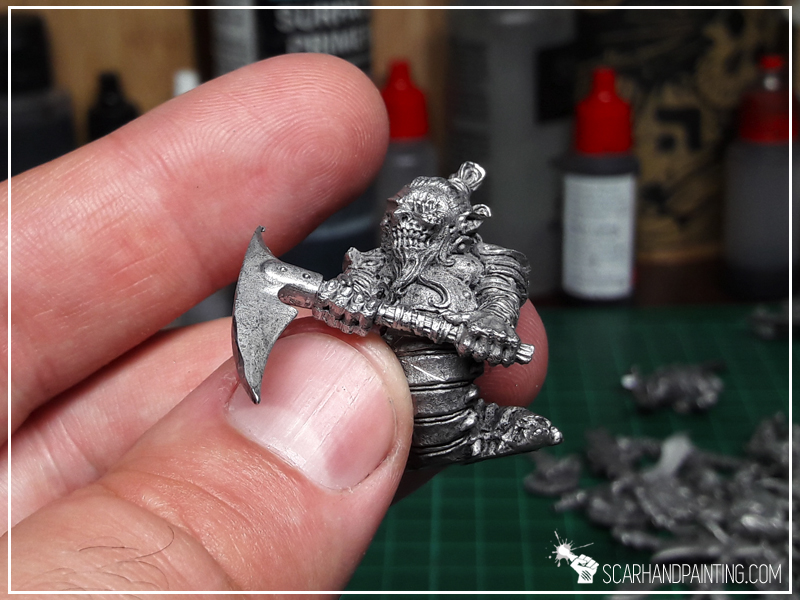
I use this method in case of wobbly miniatures with small area of contact that for some reason don’t have the rail. Such miniatures require to be pinned to the base to ensure their safety and durability. Note that pinning requires additional tools as well as proper pins. Alongside a trusted hand drill you can also purchase original hobby pins, but these are expensive. Depending on how thick is the miniature I use either paperclips or a thin steel wire.
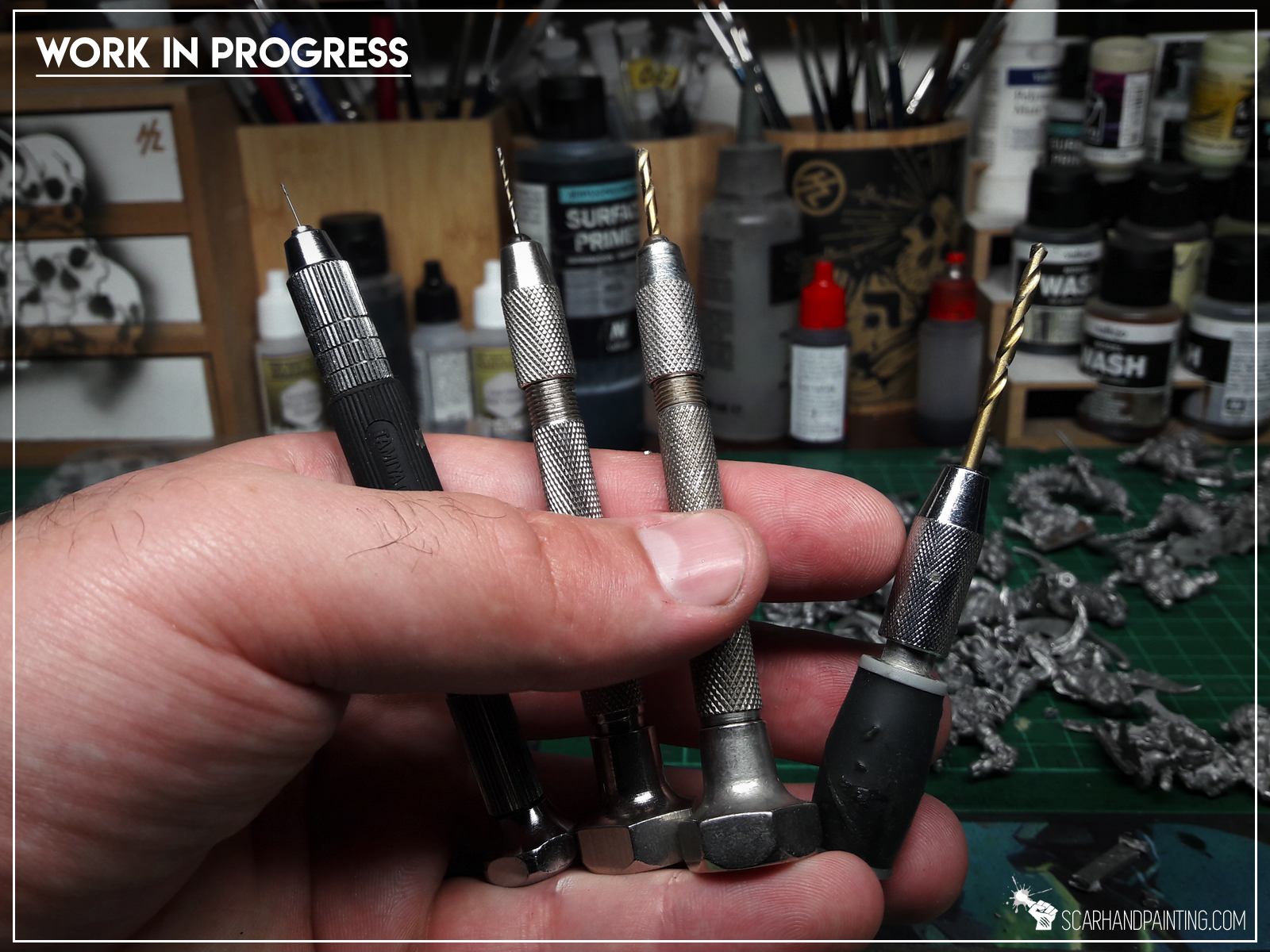

The steps I undertake to pin a miniature:
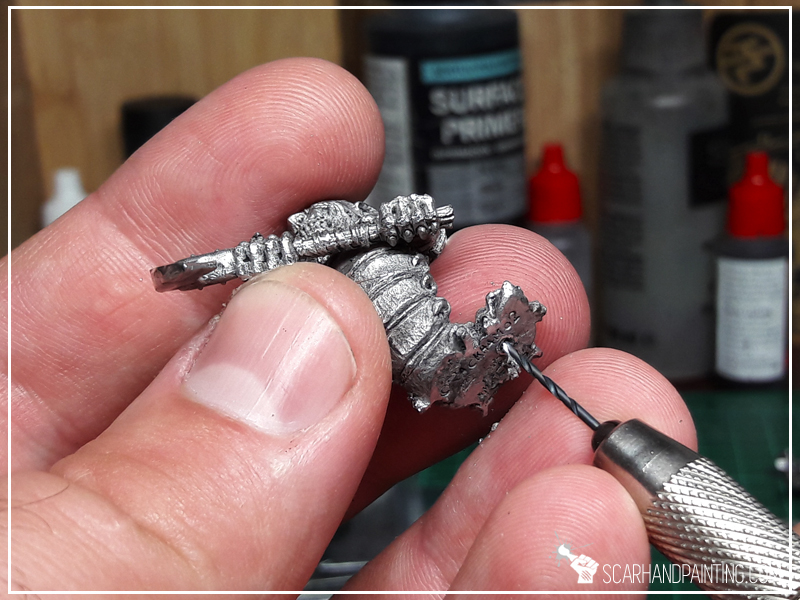
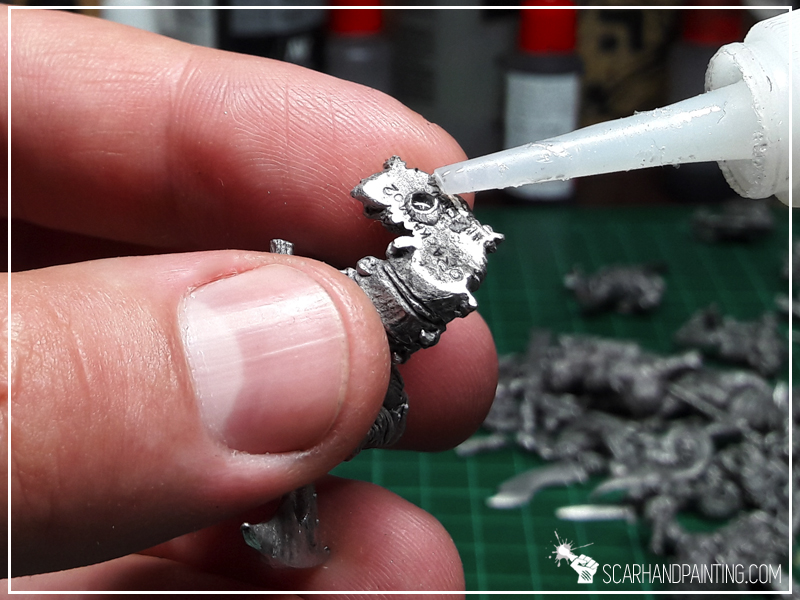
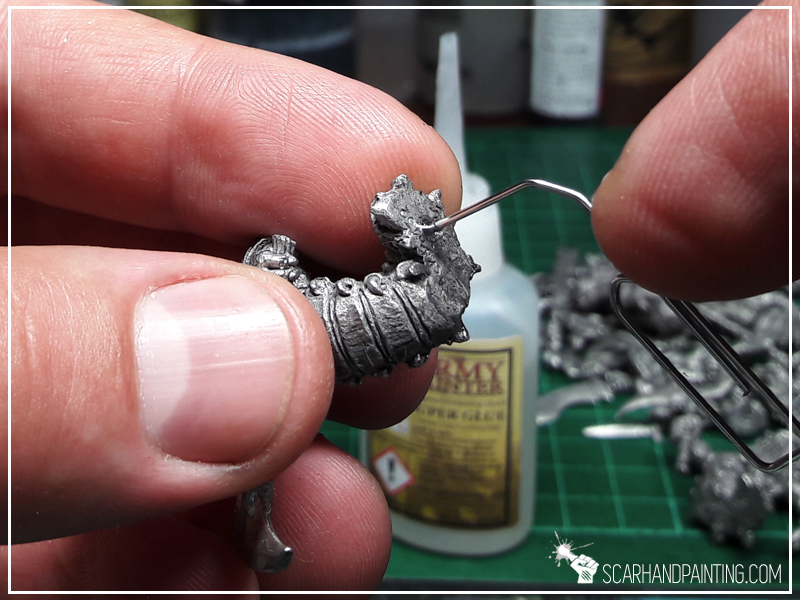

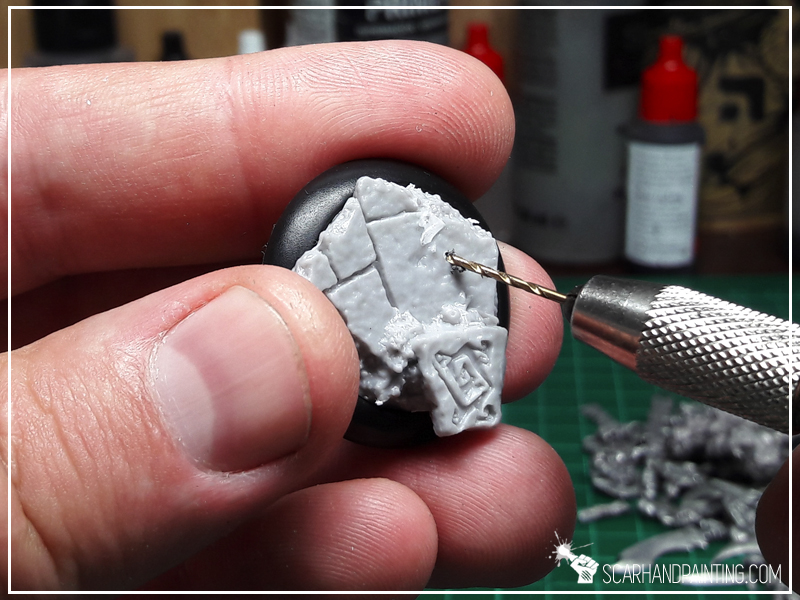
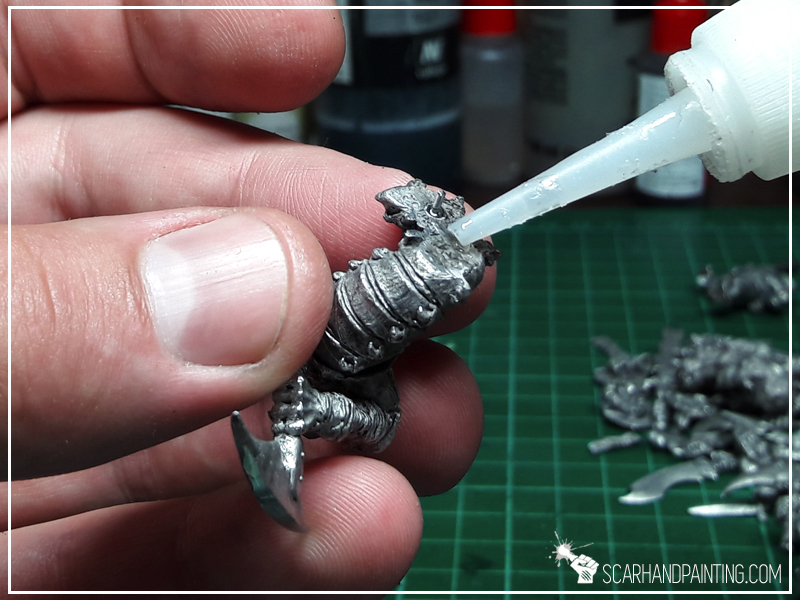

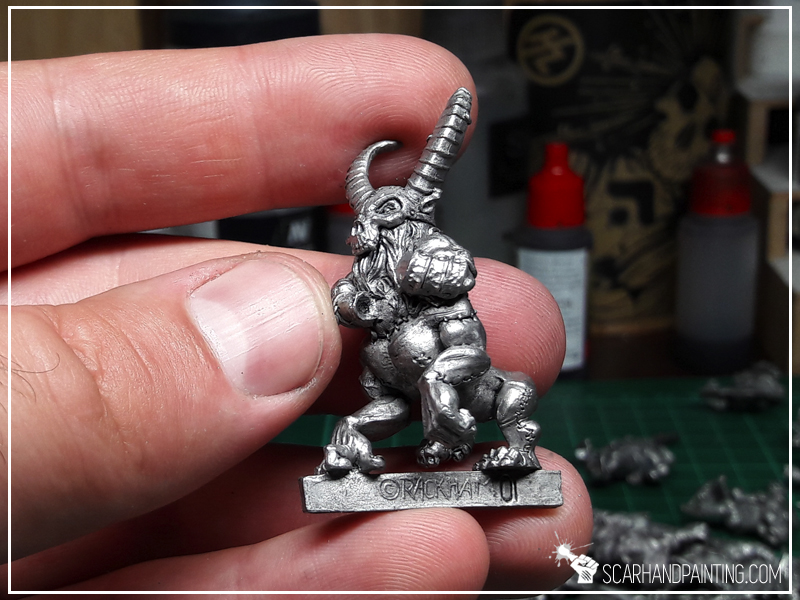
This is my favorite method. I believe that a natural part of the miniature is better at holding it in place rather than a smooth steel pin.
This is what I do:
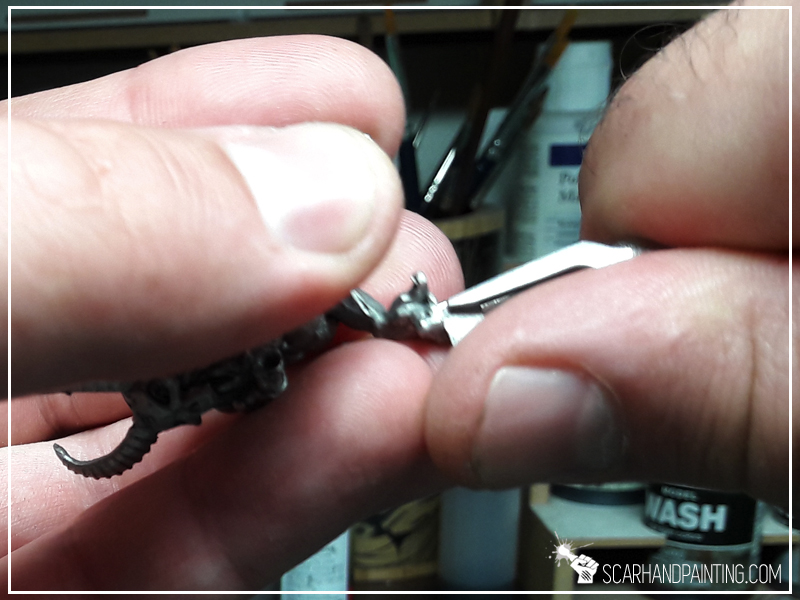

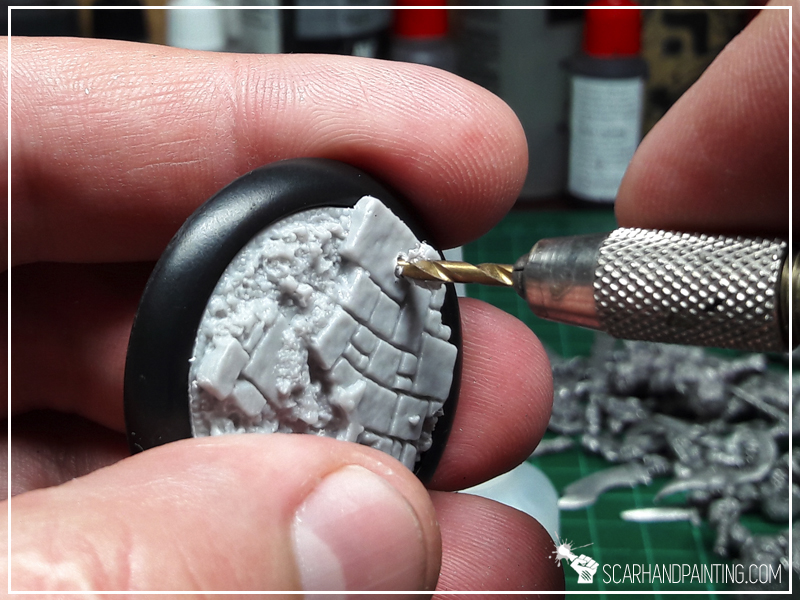
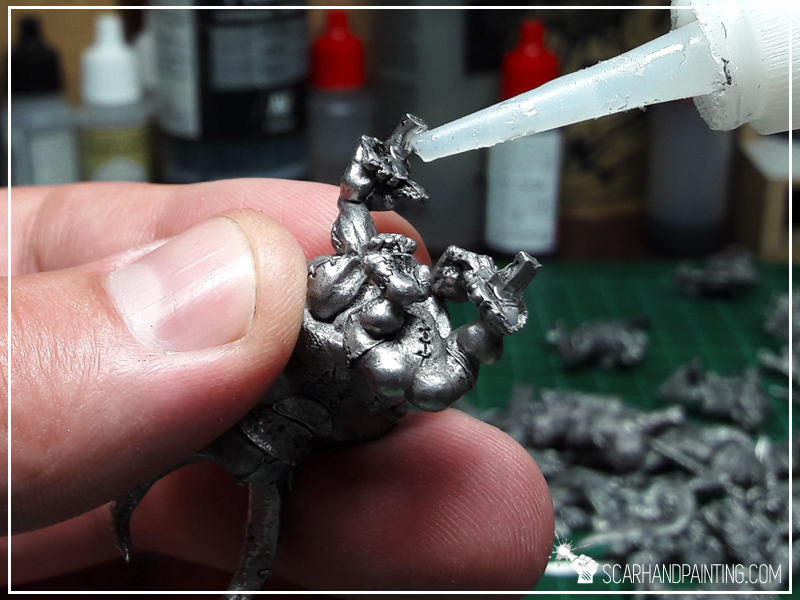
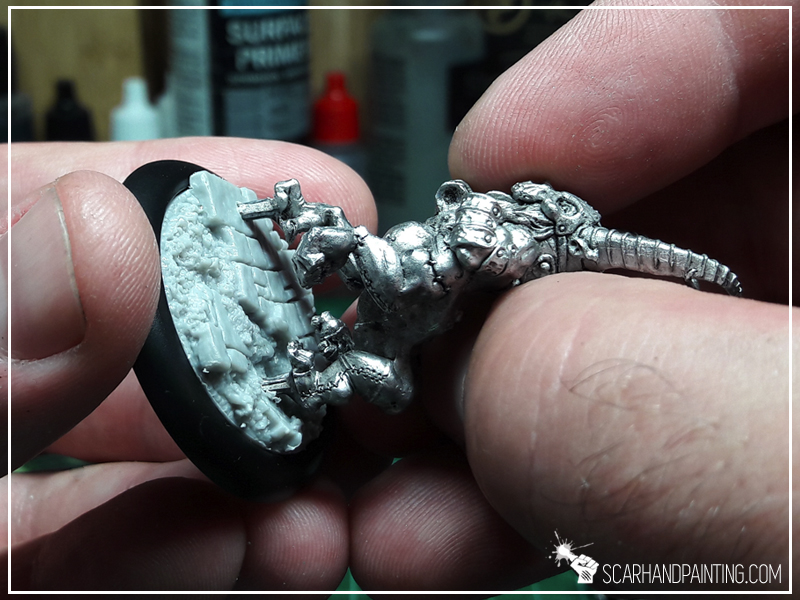
From all the other methods this one works the best for me. Plus it’s faster than normal pinning. Just remember, there’s no one proper method. If you feel like a miniature might use a pin – Just follow your guts on this and pin it. Better safe than sorry.
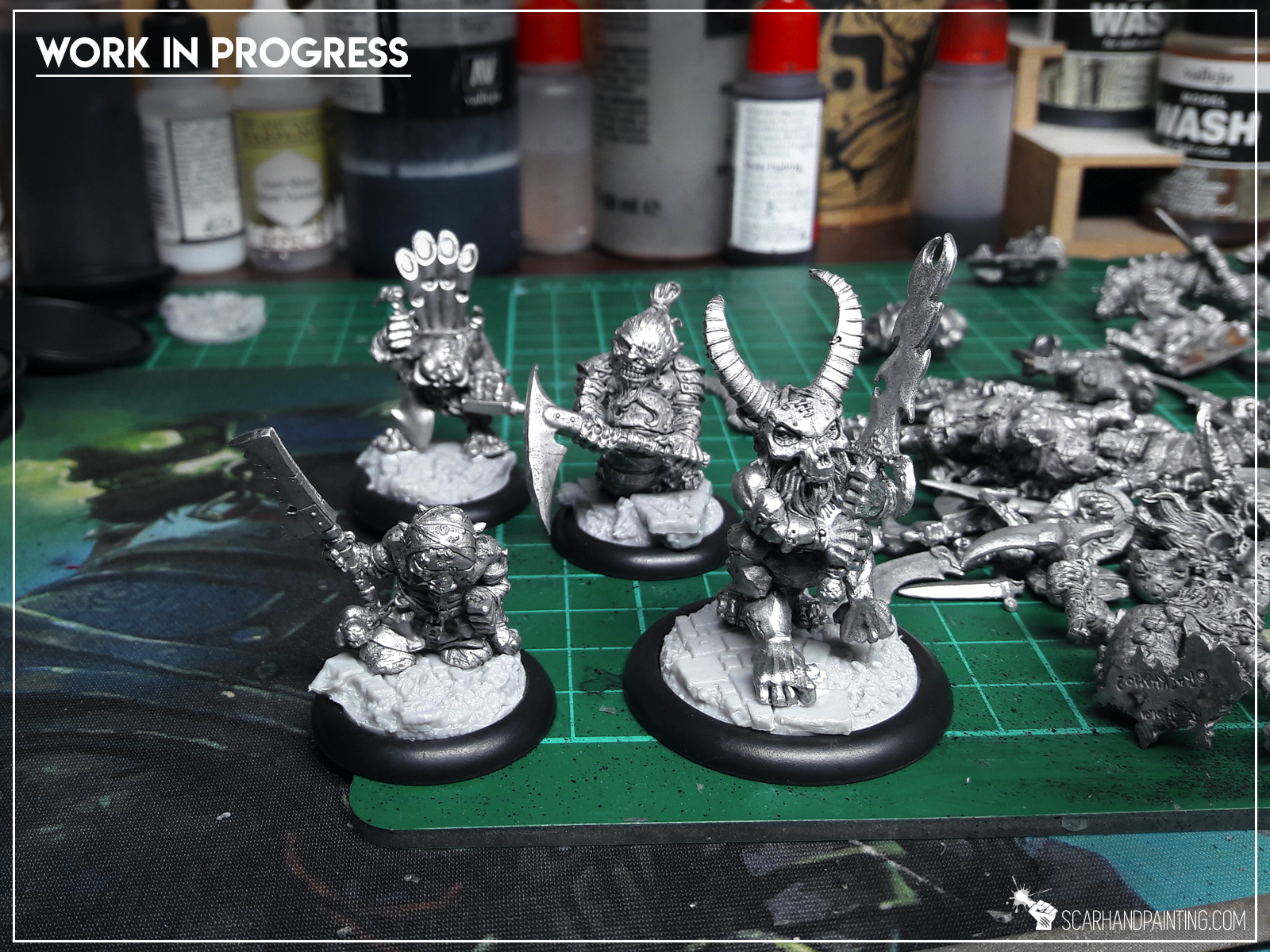
I might drop another article on basing miniatures in the future. Maybe some Painting Philosophy type with insight on why I paint my miniatures based and not separately. If you think it’s an interesting topic and/or if you liked this article – consider letting me know in the comments or at my Facebook profile… or even share if you think the article deserves it. 😉
PS: Check this stuff out! It blown my mind! XD
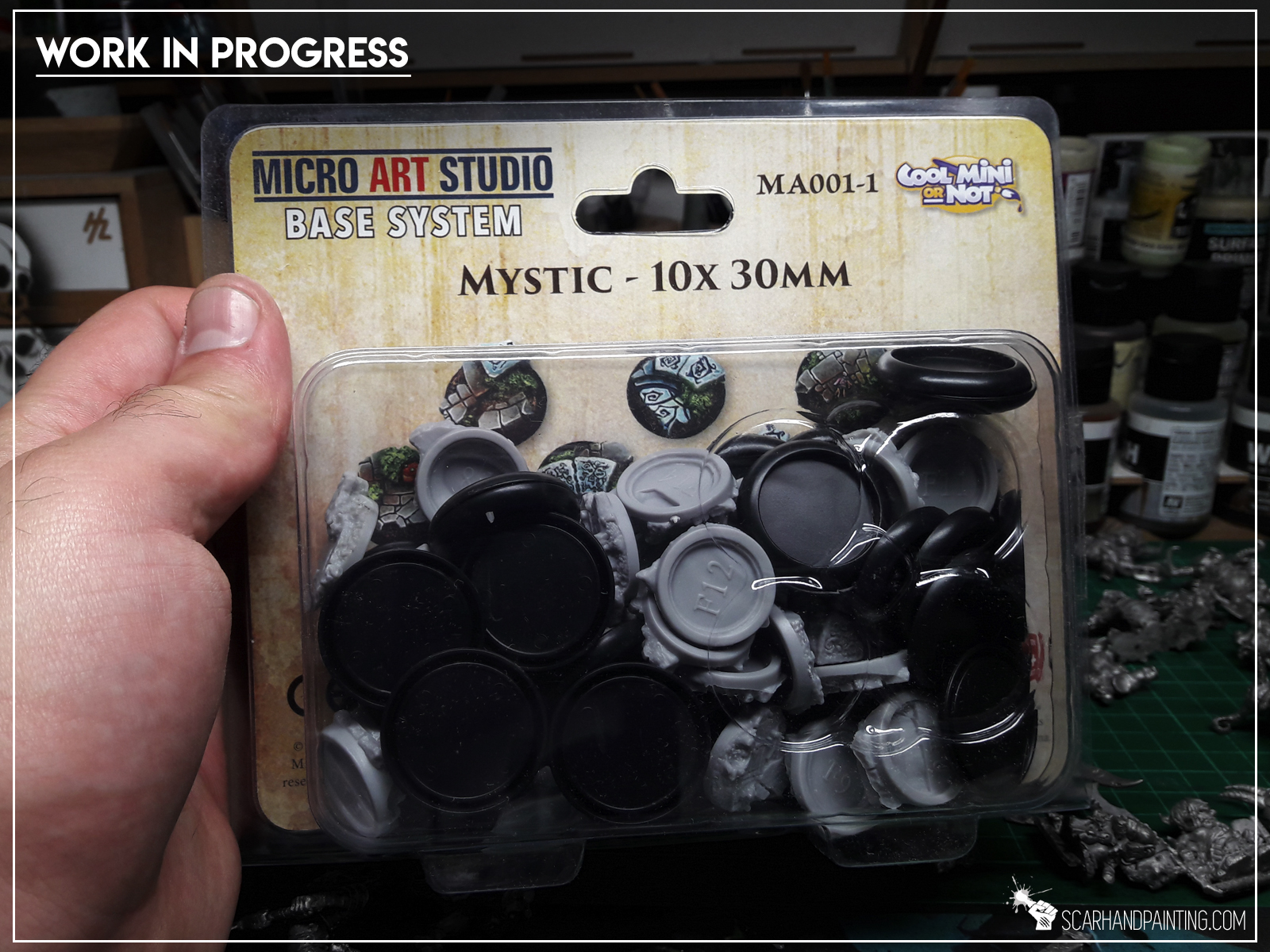

In this step-by-step tutorial I’m going to show you how to magnetize resin bases – easy and fast!

Magnetizing entire army for an upcoming delivery of a brand new A-Case carrying bag seem like a great opportunity for a tutorial, doesn’t it? The thing about resin bases is that they rarely come with magnet holes at the underside and even when they do (for example Warsenal) it’s still better to drill your own precise holes. Below are some of the shortcuts and hacks I use when magnetizing resin bases.
Step One: Drilling

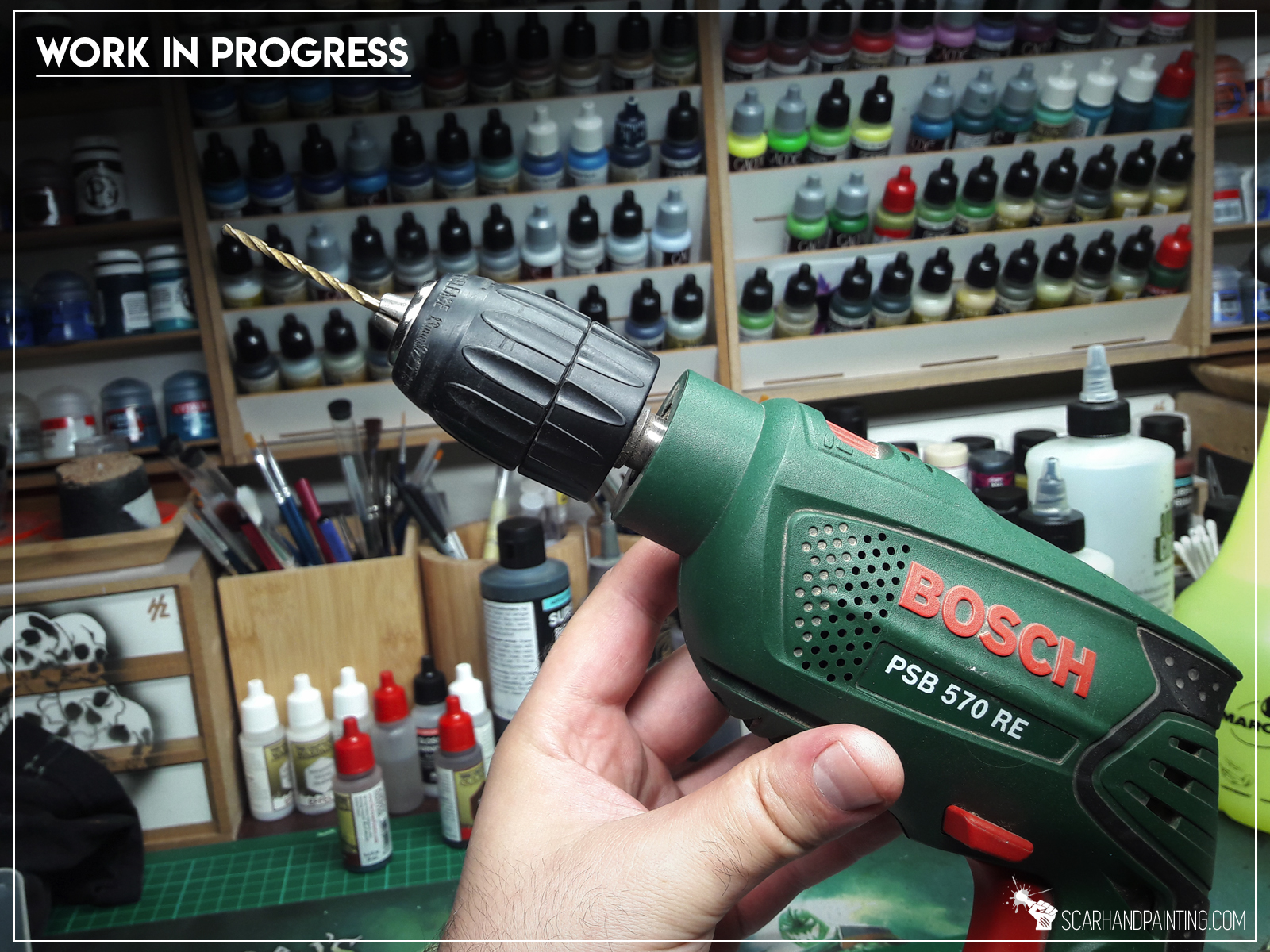
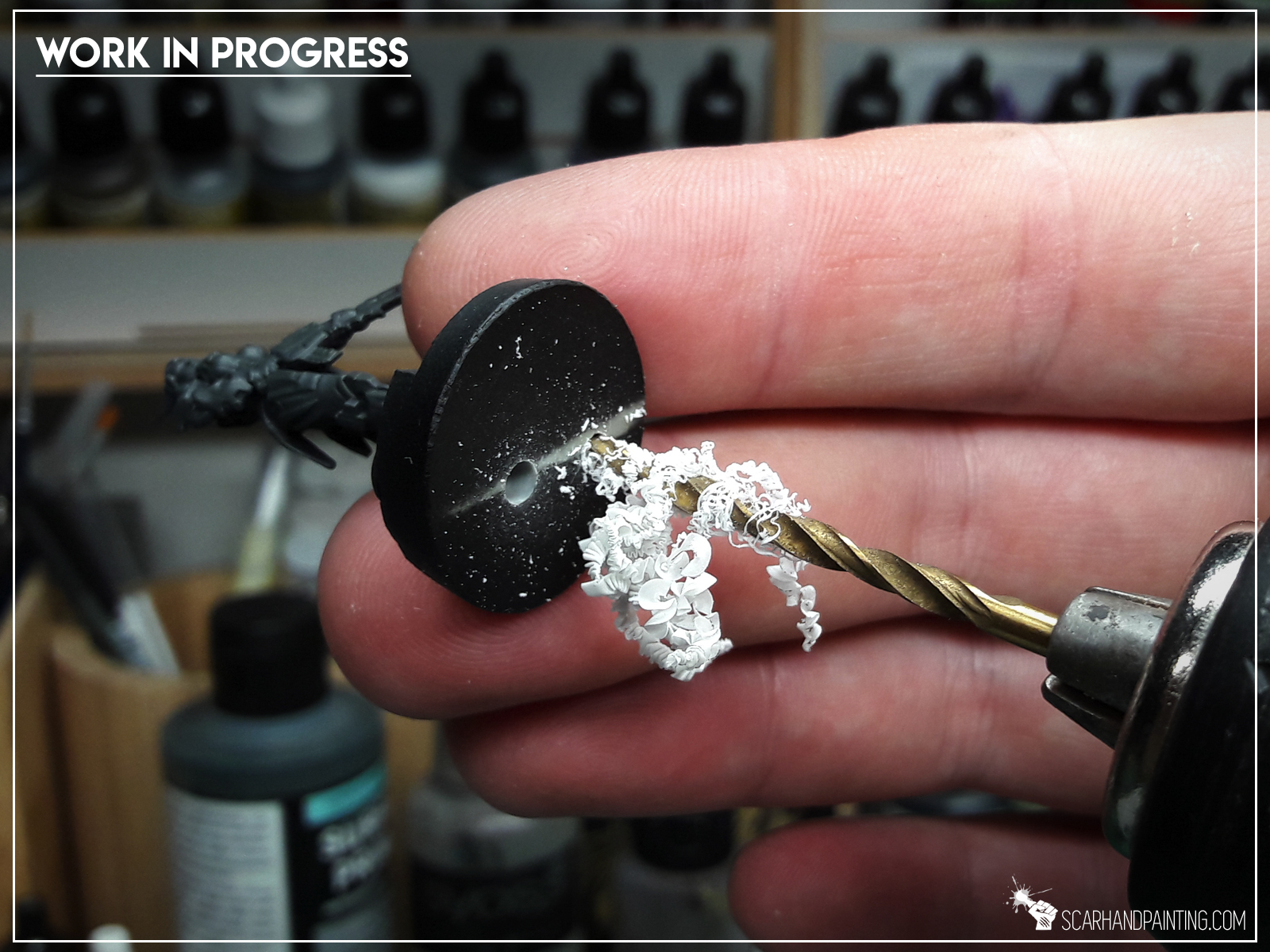
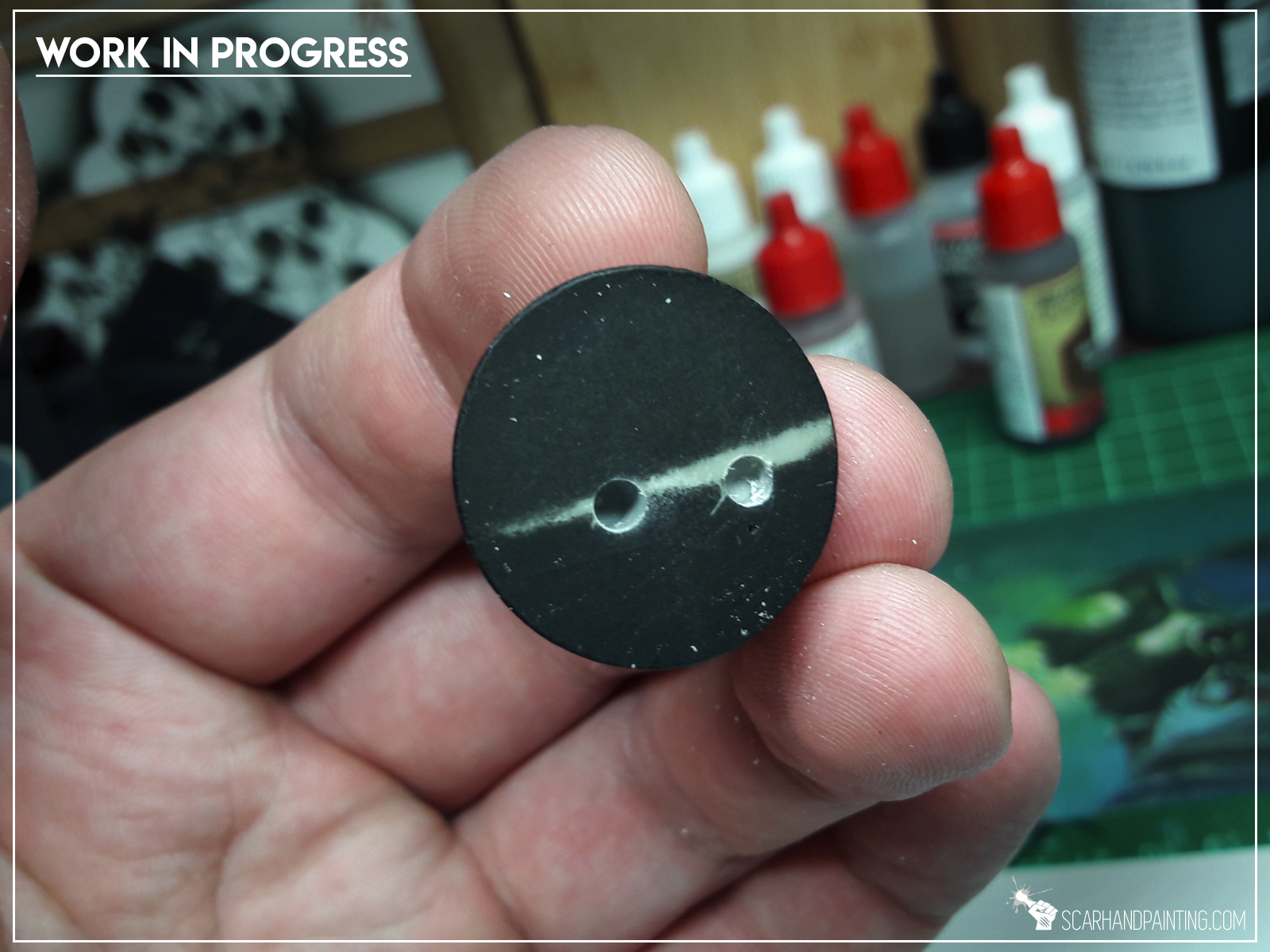
Tip number one would be to use a drill that is the size of the magnet you want to put into the base. This would usually be too big to use in a hand driller, thus we land on Tip number two – use a regular driller instead! I know this might come up as crude and a bit scary, especially when we’re talking fully painted miniatures, but with just a bit of focus it goes smooth. To ensure your miniature’s safety, hold the base firmly and avoid holding the miniature itself.
Step two: Inserting Magnets
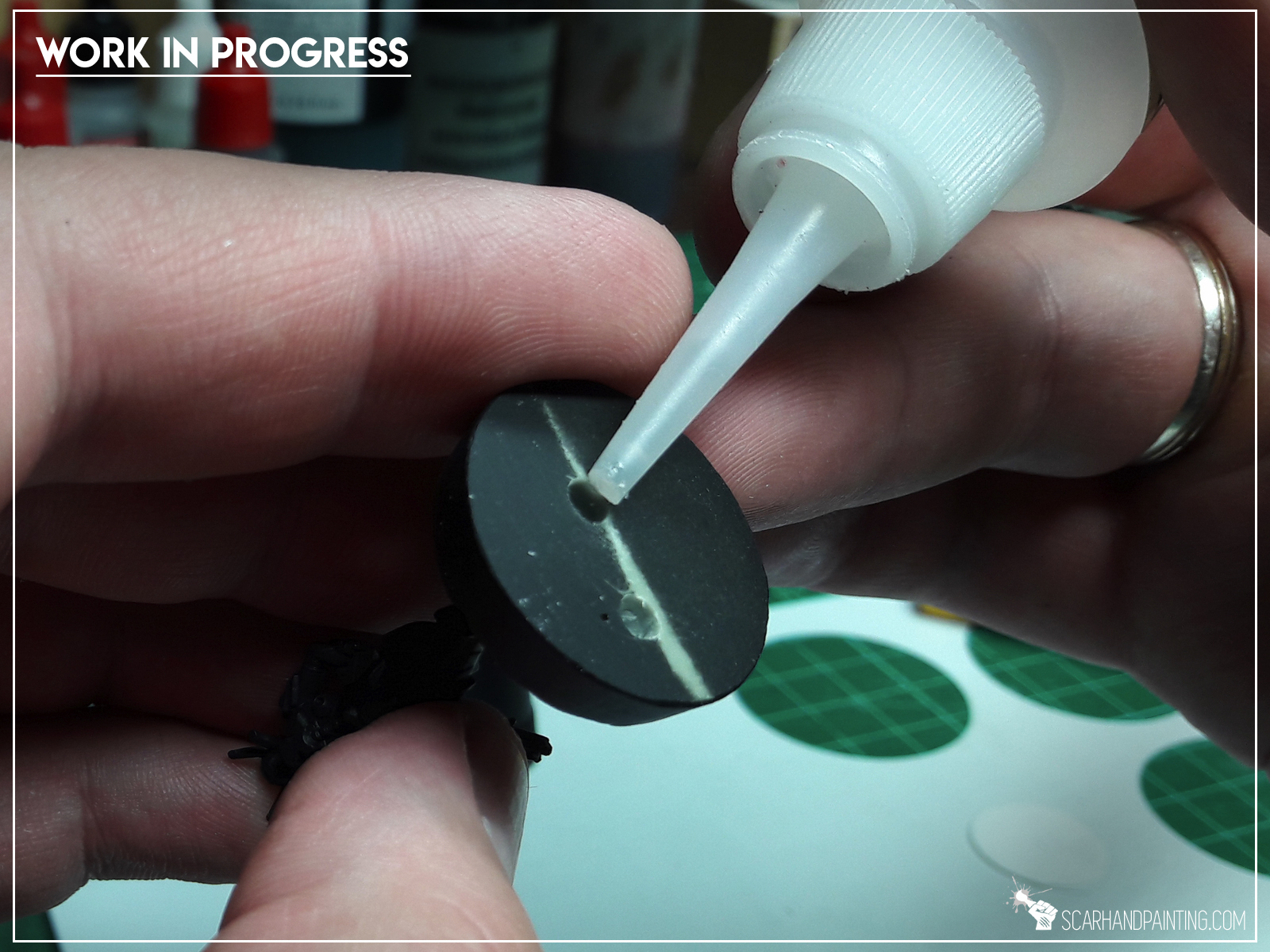

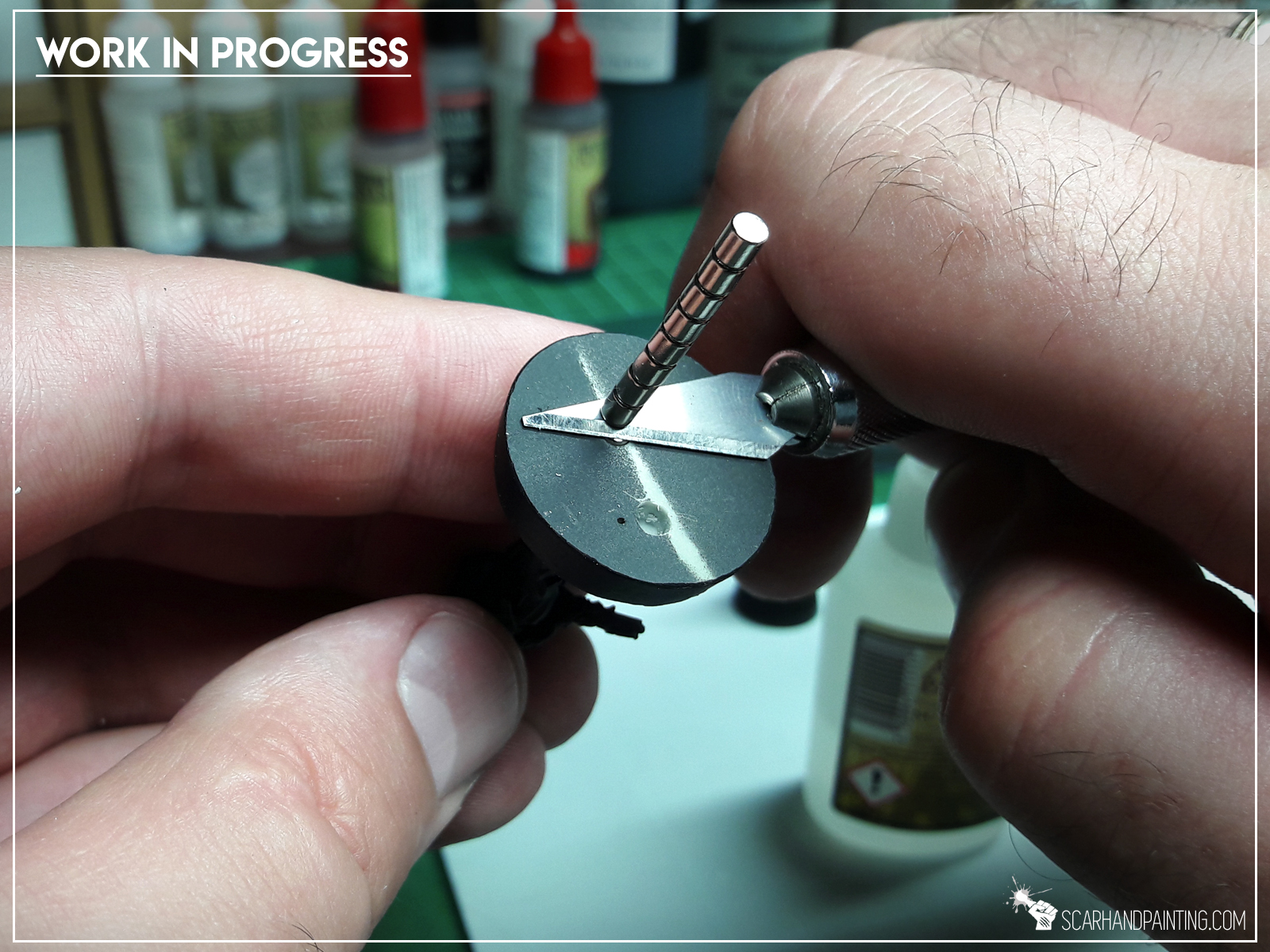
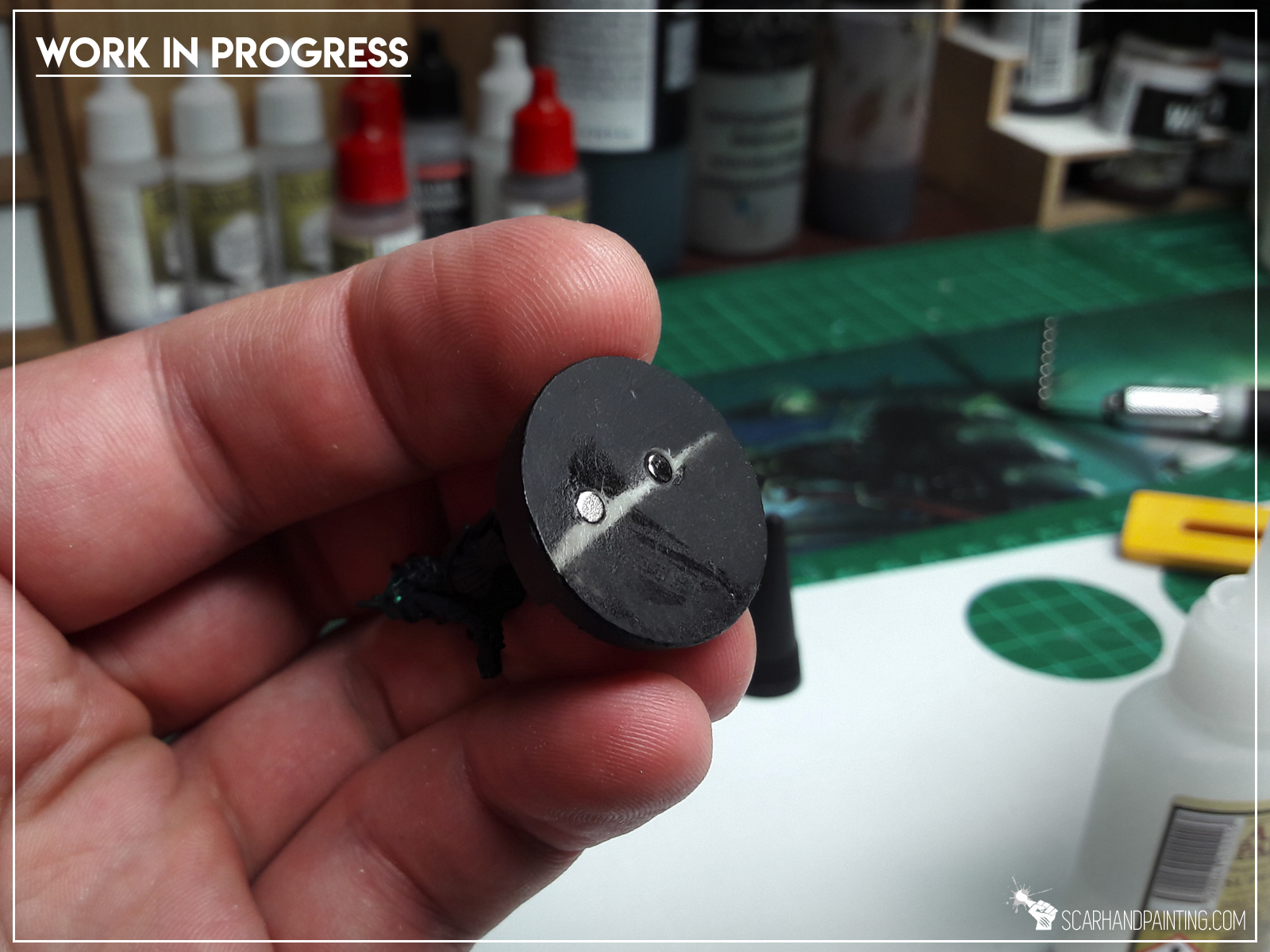
I recommend Army Painter Super Glue, or any similar glue to mount the magnets firm inside the holes. Tip number three would be to use a hobby knife. This way you can “cut off” a bottom magnet from the stack and simply insert it into the hole, using blades side to push the magnet in until it’s parallel to the bases bottom line.
Step three: Sealing Magnets
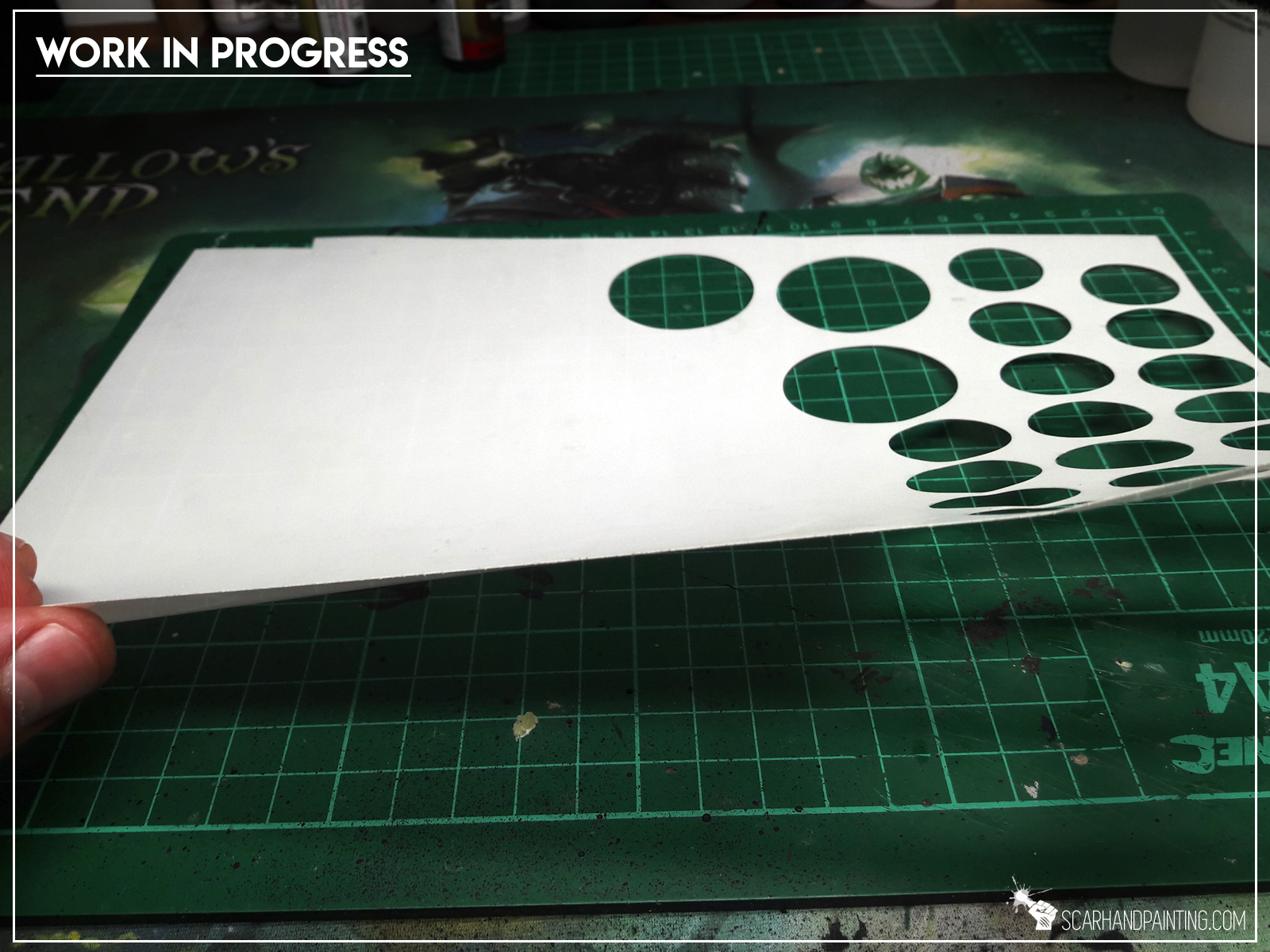
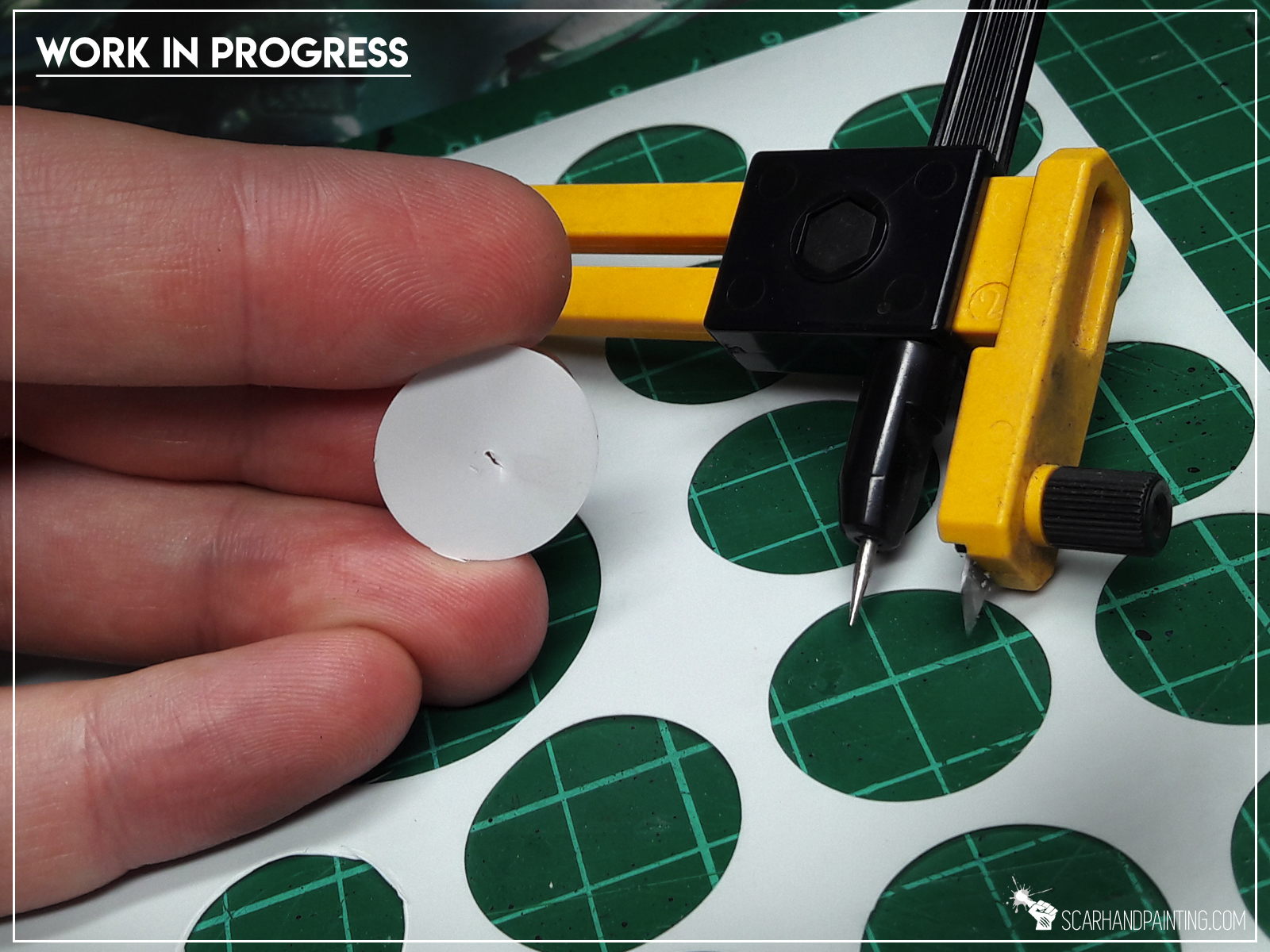
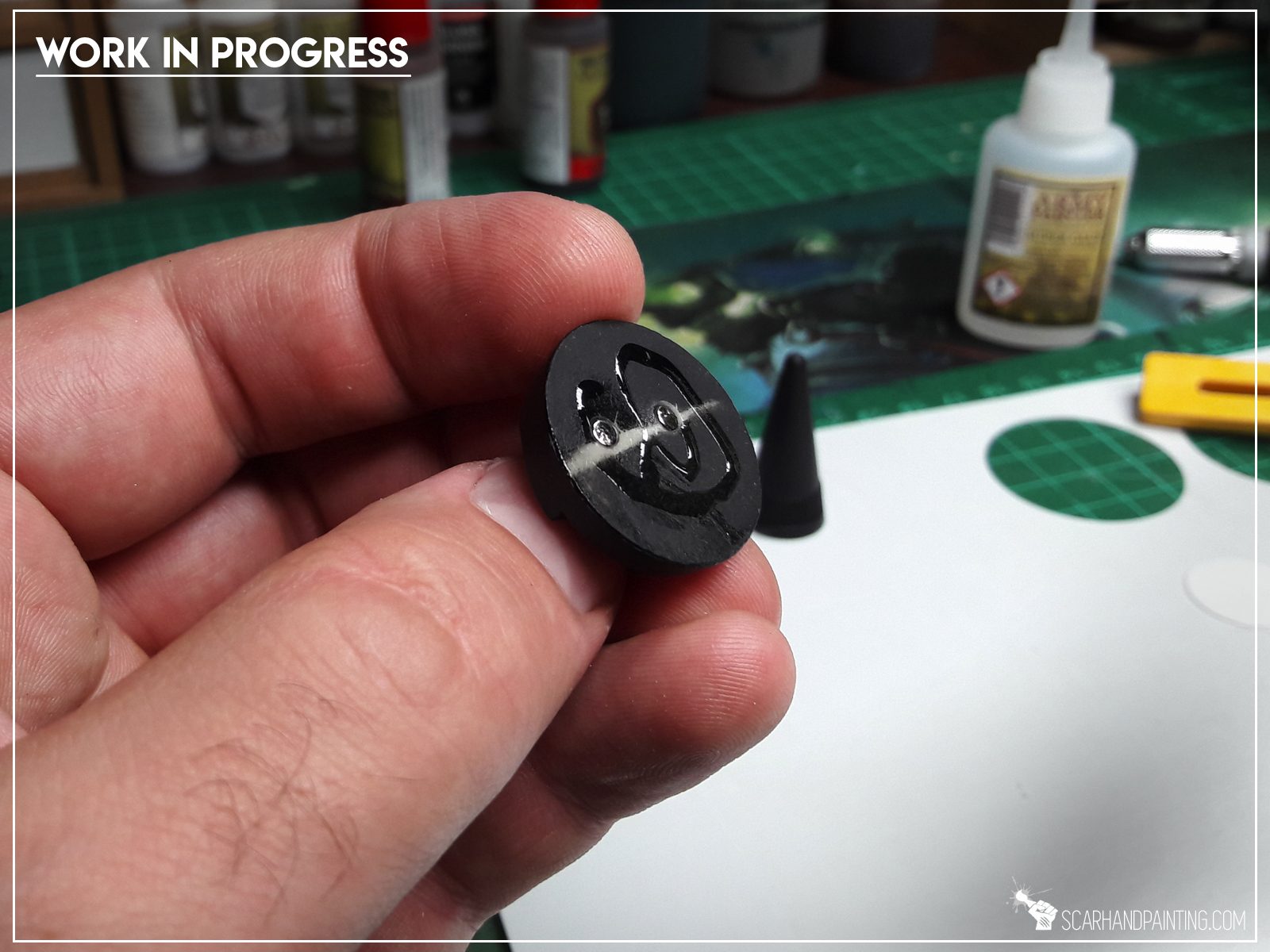
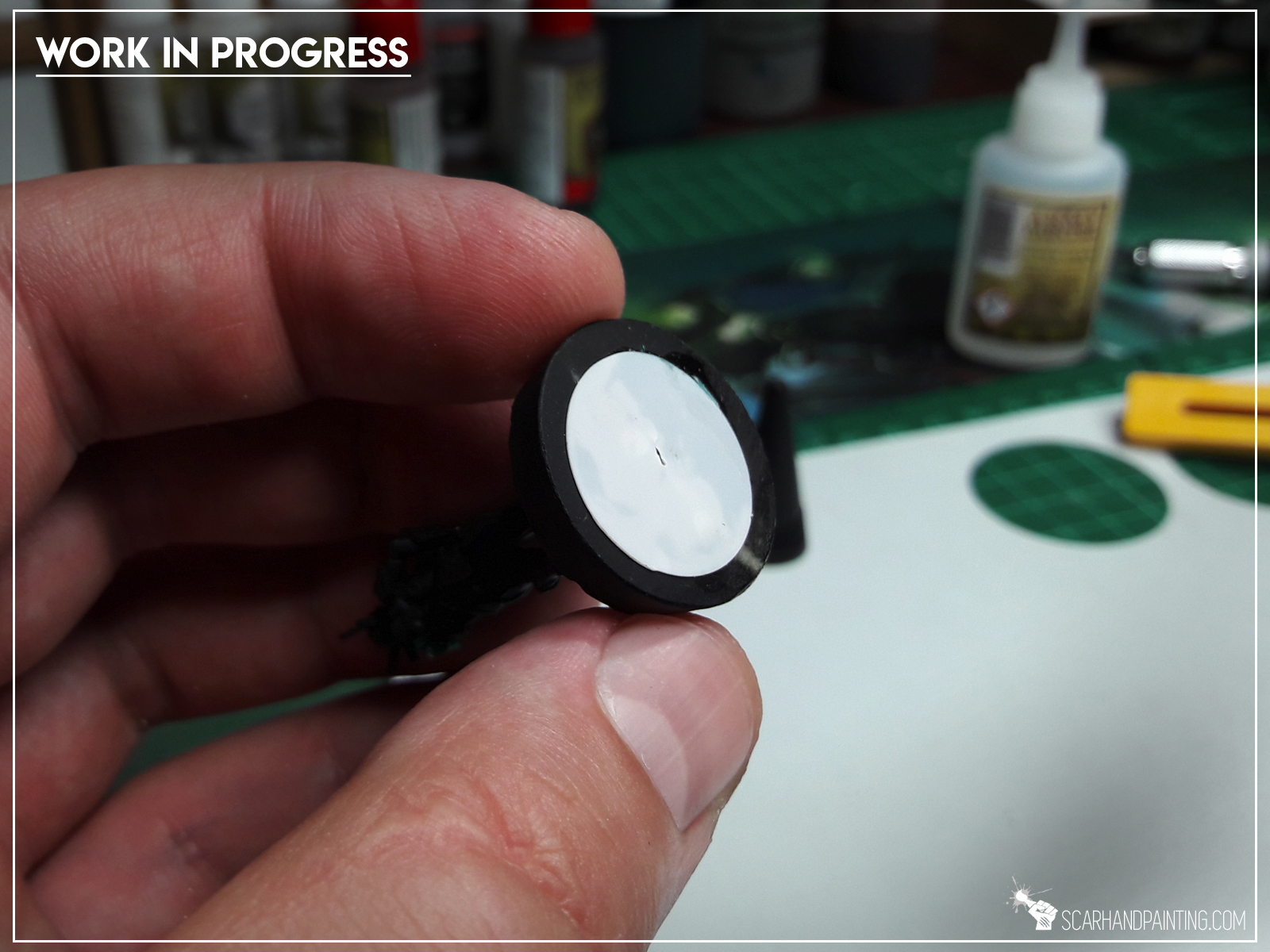
You can skip on this one, but if you want your magnets to hold firm inside the base and for the miniature to come off the case with it’s base attached you might consider this Hack. Simply glue a circle of paper thin plasticard on top of the magnets. This barrier won’t be as thick as to significantly weaken the pull, but will definitely make the transition onto and out off the metal surface smoother. It will also keep the magnets inside the holes – no matter what.
Do you find this article helpful? Please consider sharing it and/or dropping me some feedback down below or at my Facebook profile!

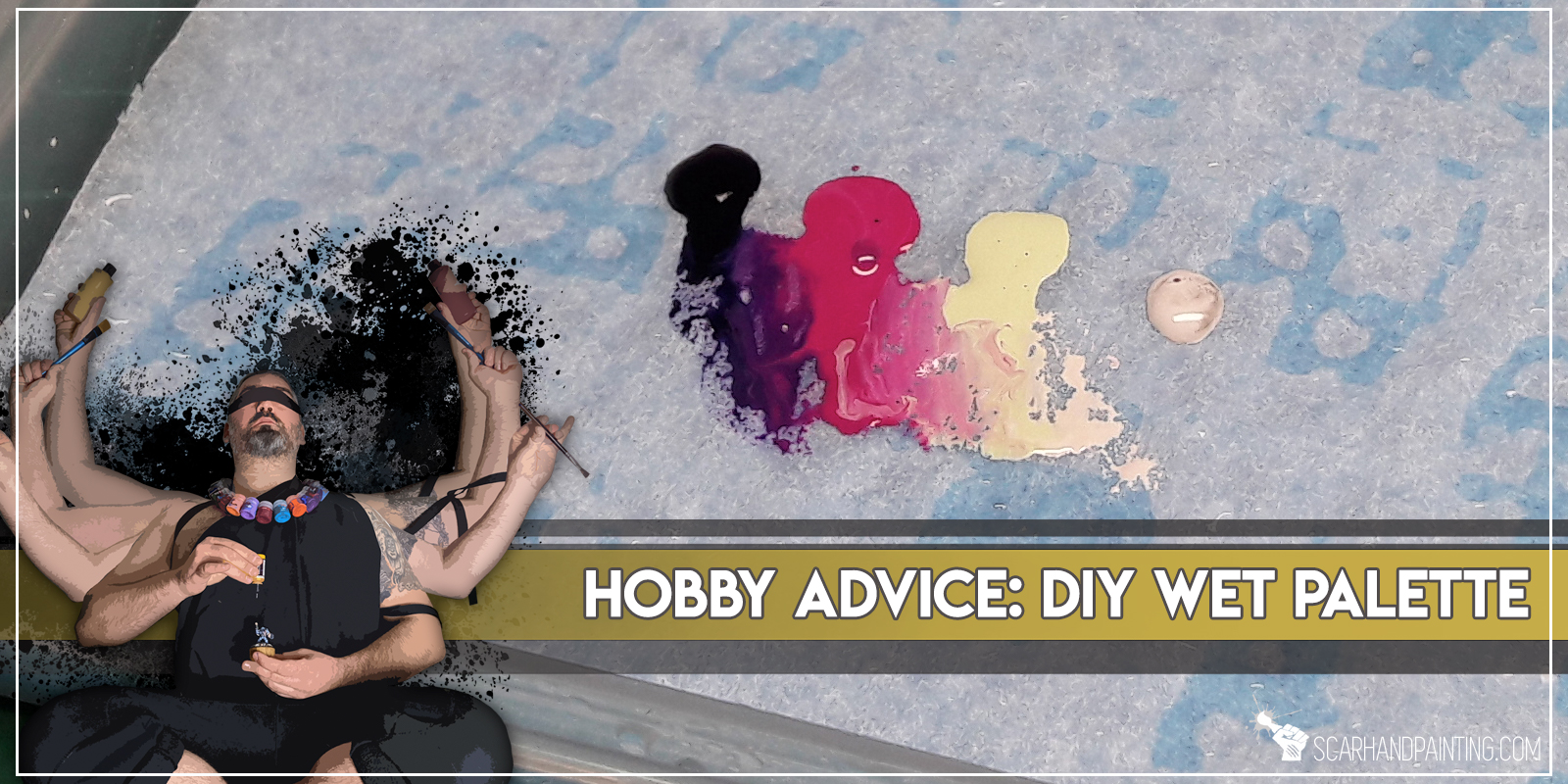
Wet Palette – a hobby tool every or at least a vast majority of pro painters has. A Wet Palette is simply a piece of parchment sitting on a wet sponge that keeps your paints thin and allows you to “save” a certain colour mix to go back to without the necessity to mix the paints anew in hope to achieve same results. In this article I will show you how to make your own Wet Palette.
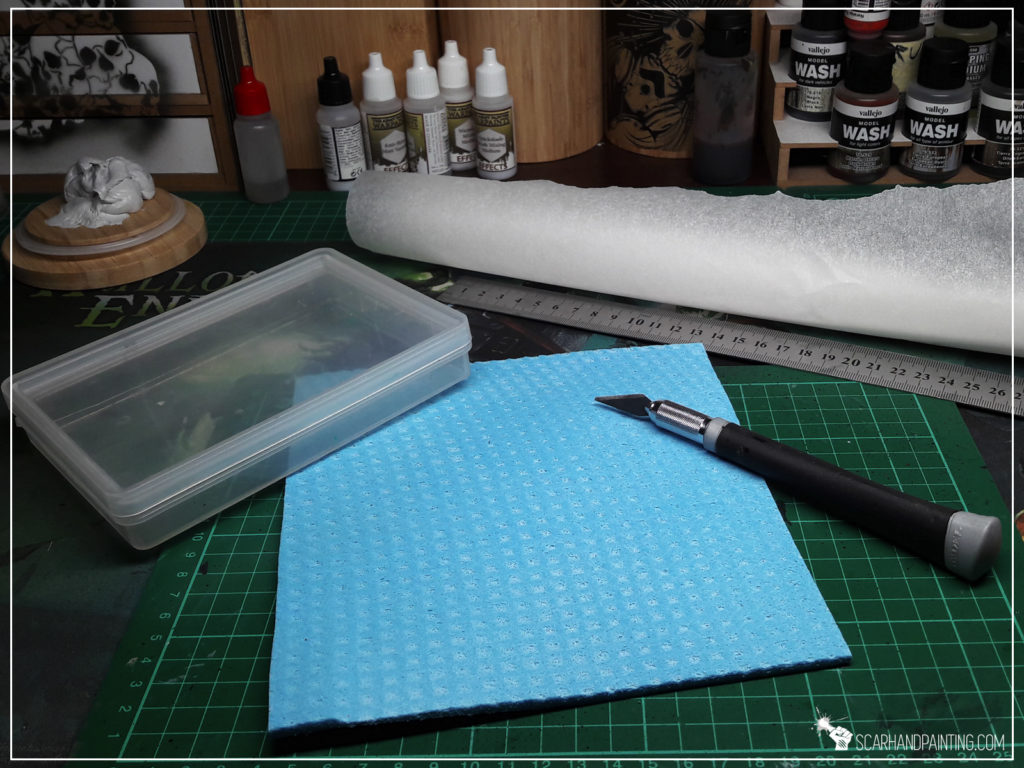
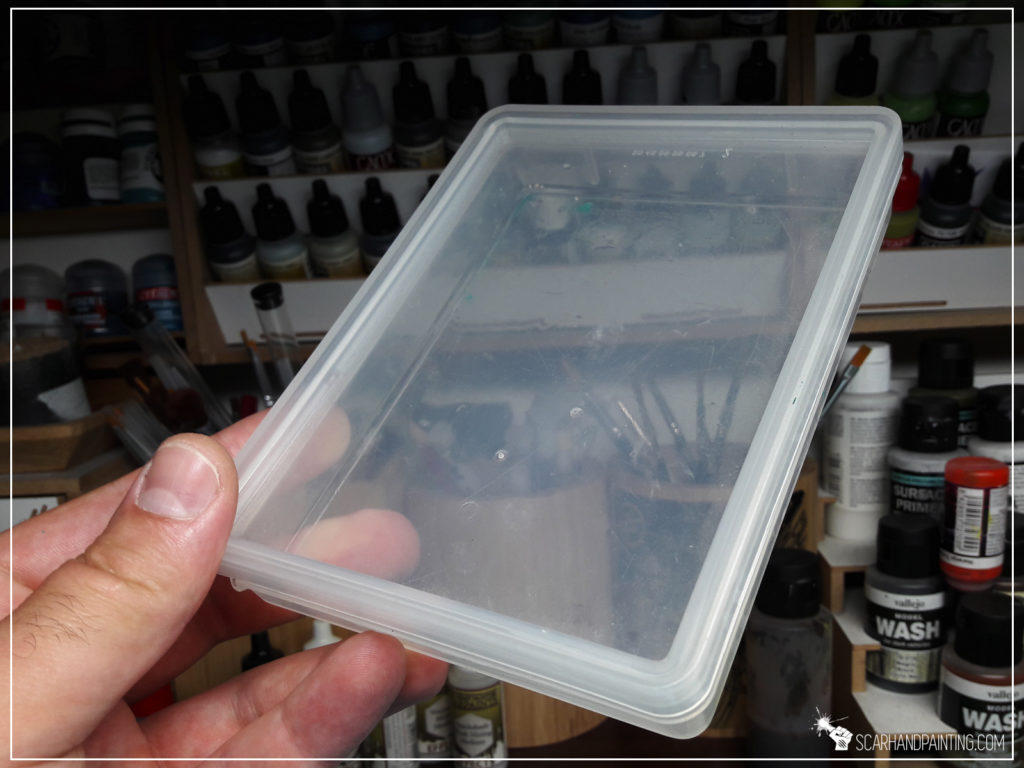
Picking a right box for the job is very important. For best results it should be hermetic, rather shallow and as wide and long as you prefer. I know a very good painter who uses a Ferrero Rocher box, I preffer to use a more hermetic and smaller Games Workshop Turf box. It suits my needs better, as I don’t use Wet Palette too often. Either way…
Step one:
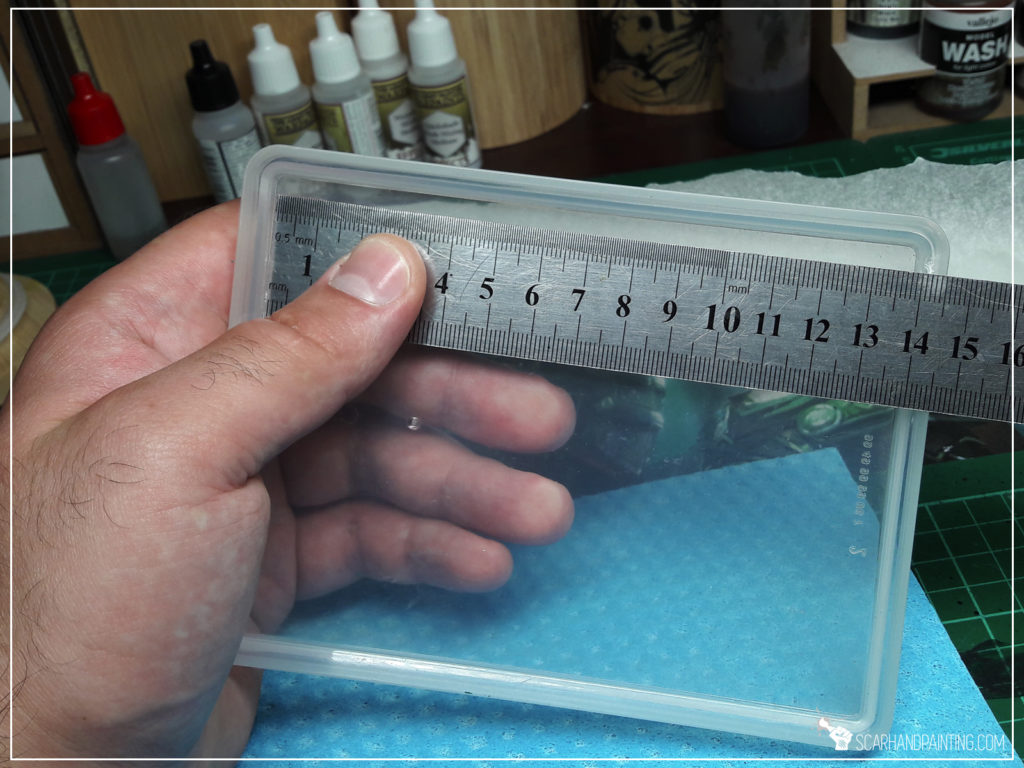
I measured the insides of my box of choice and cut a piece of kitchen sponge to be approximately 5mm smaller. This is to leave some space for a sponge that might grow a bit once filled with water.
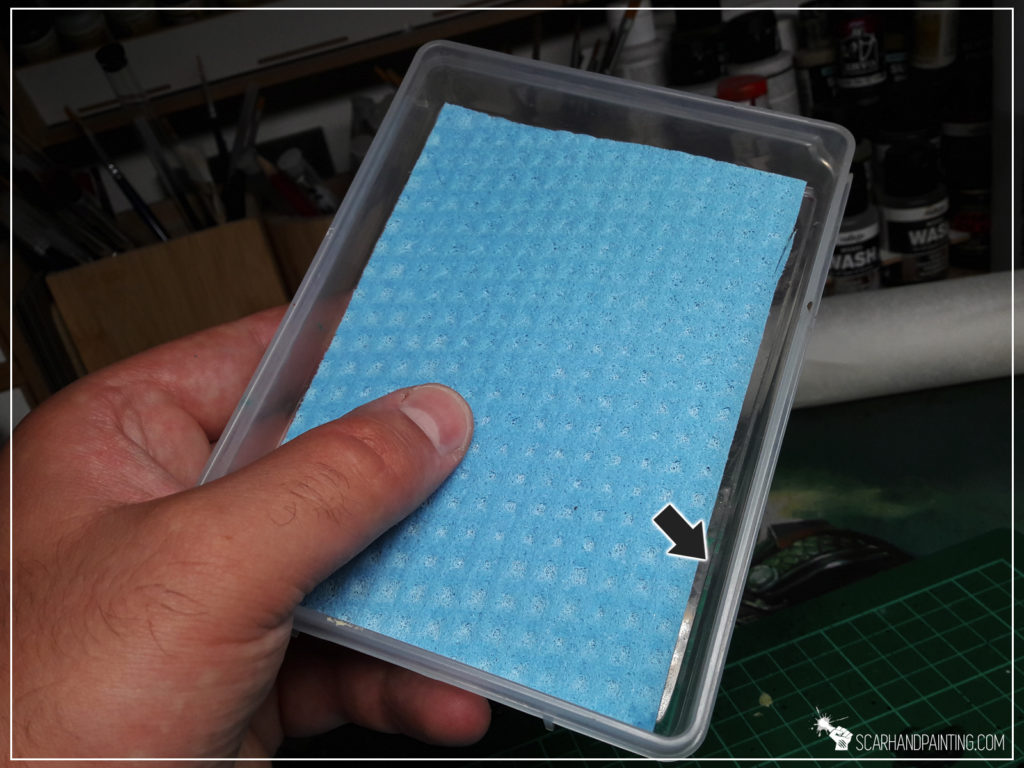
Step two:
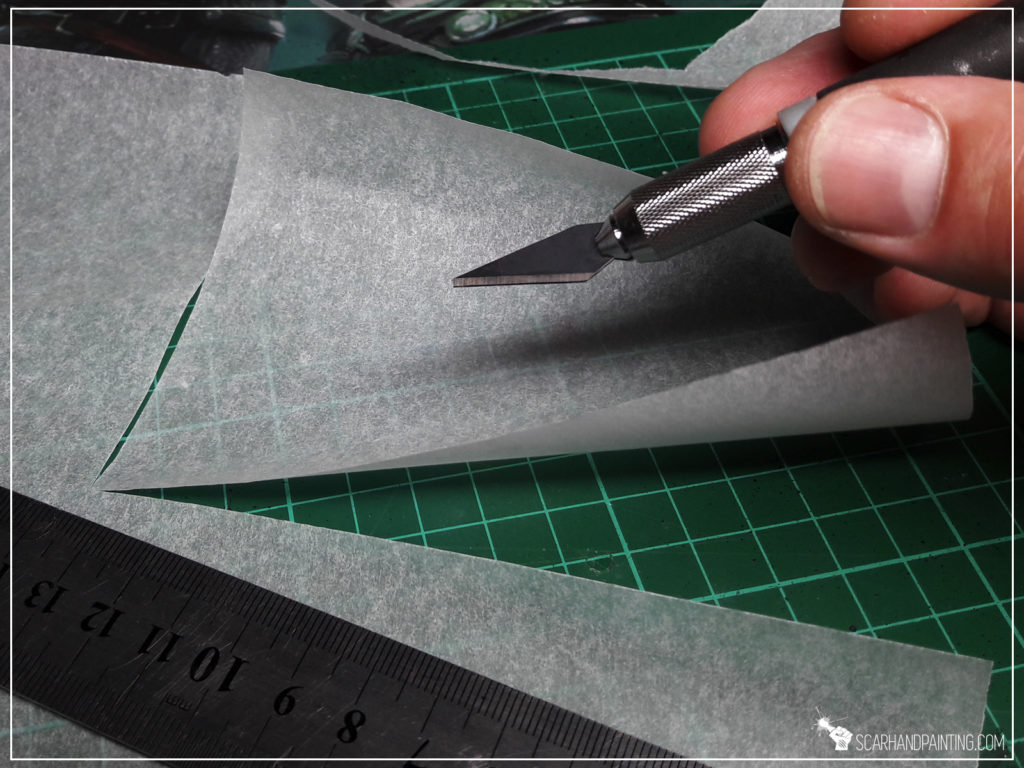
Next I cut a piece of baking paper to fit the sponge, again leaving about 5mm space between the edge of the sponge and the paper itself.
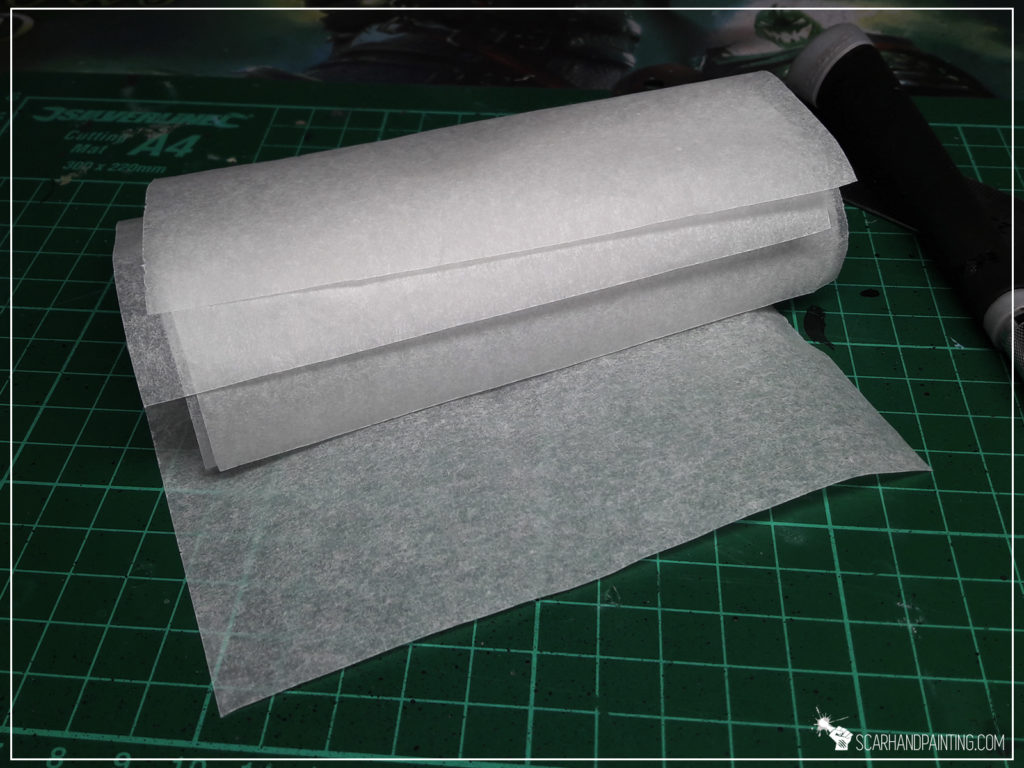
Step three:
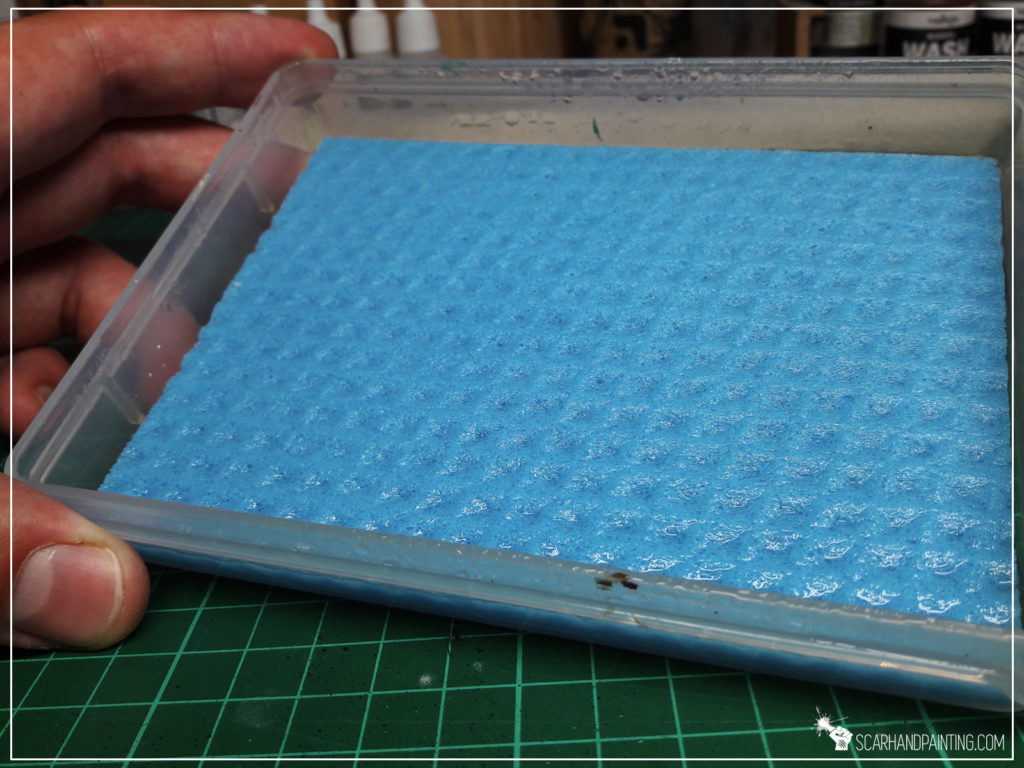
I filled the “palette” with water until the sponge couldn’t take anymore. The key is to avoid water outside the sponge.
Step four:
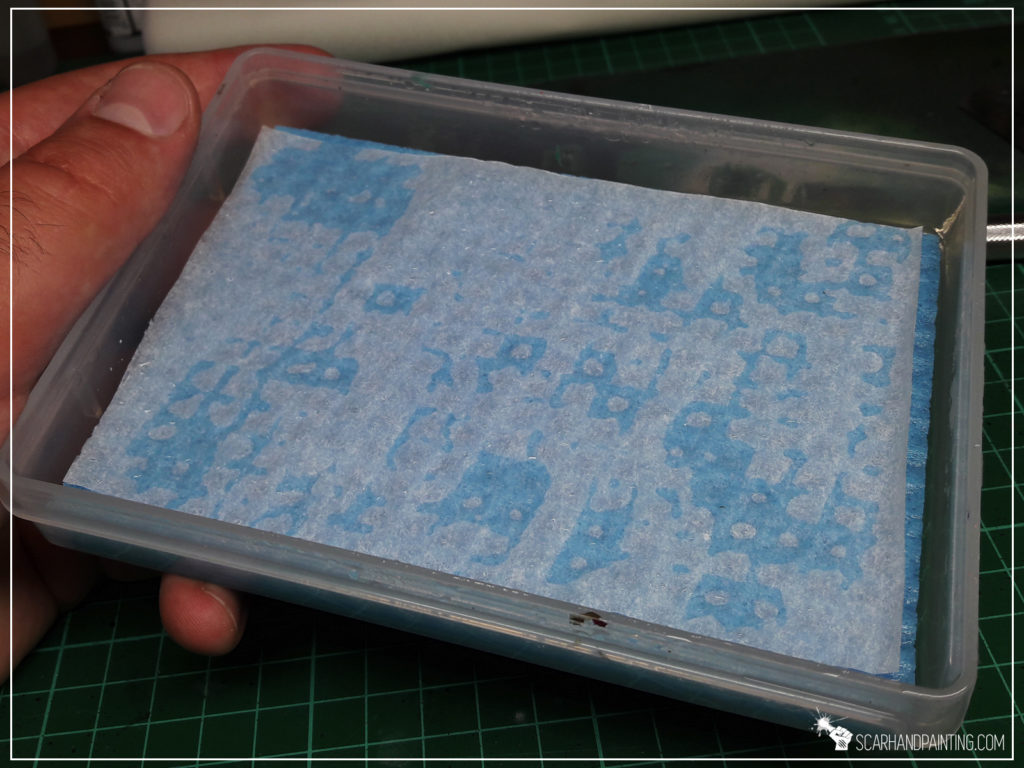
I then put a piece of baking paper on top of the sponge and held it in place, so that it took a little bit of water and flattened. That’s actually it – Wet Palette complete and ready for action!
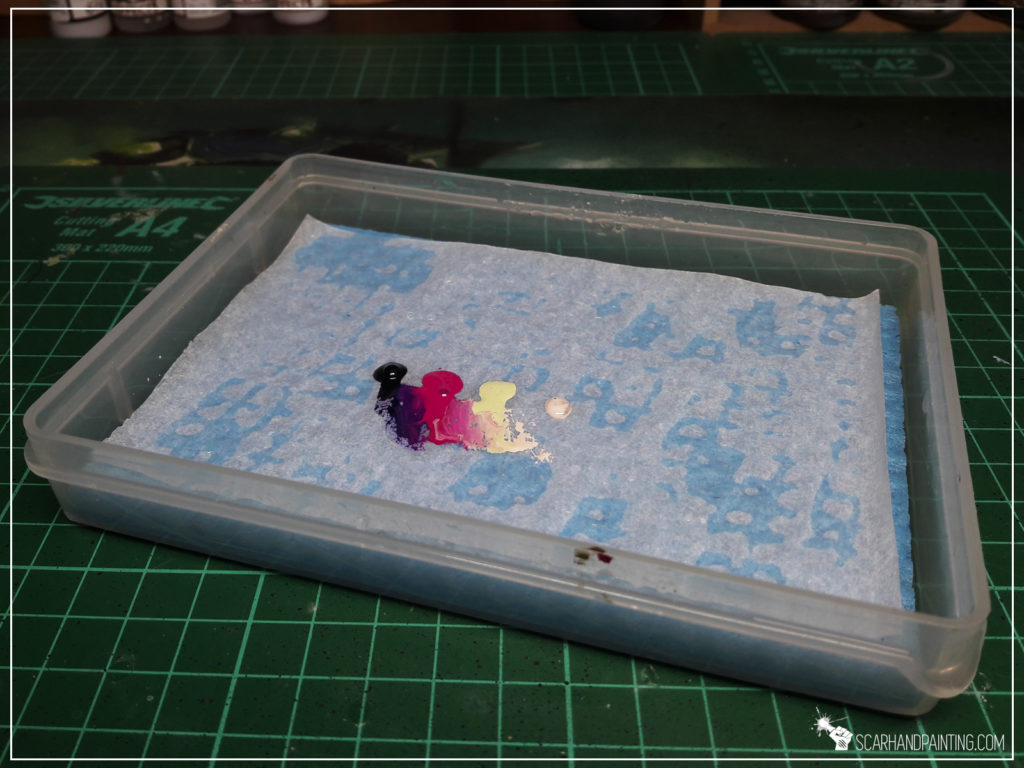
Now I can “save” the paints for later use…
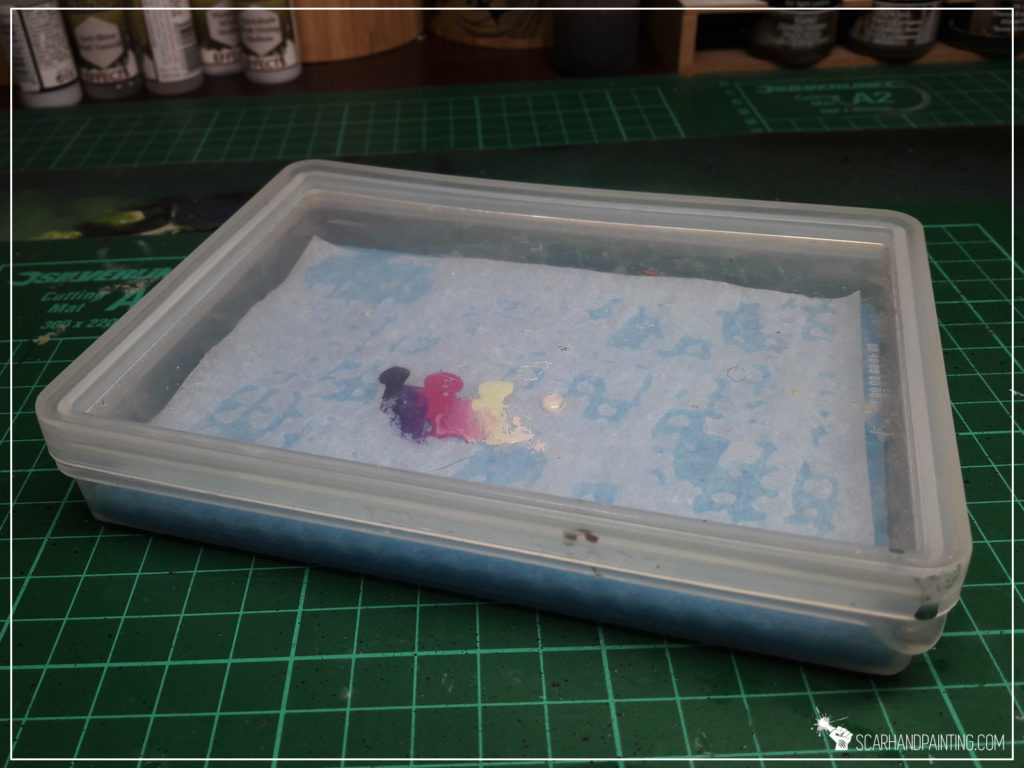
Important tip: You will be switching the piece of baking paper every now and then, but I advise you to occasionally switch the sponge too. Depending on what kind of soft sponge you’ll use it might get smelly after long use. It’s because nowadays kitchen sponges are made out of algae and similar organic material. Just saying 😉
You find this article helpful? Don’t be a stranger and drop me a comment below!

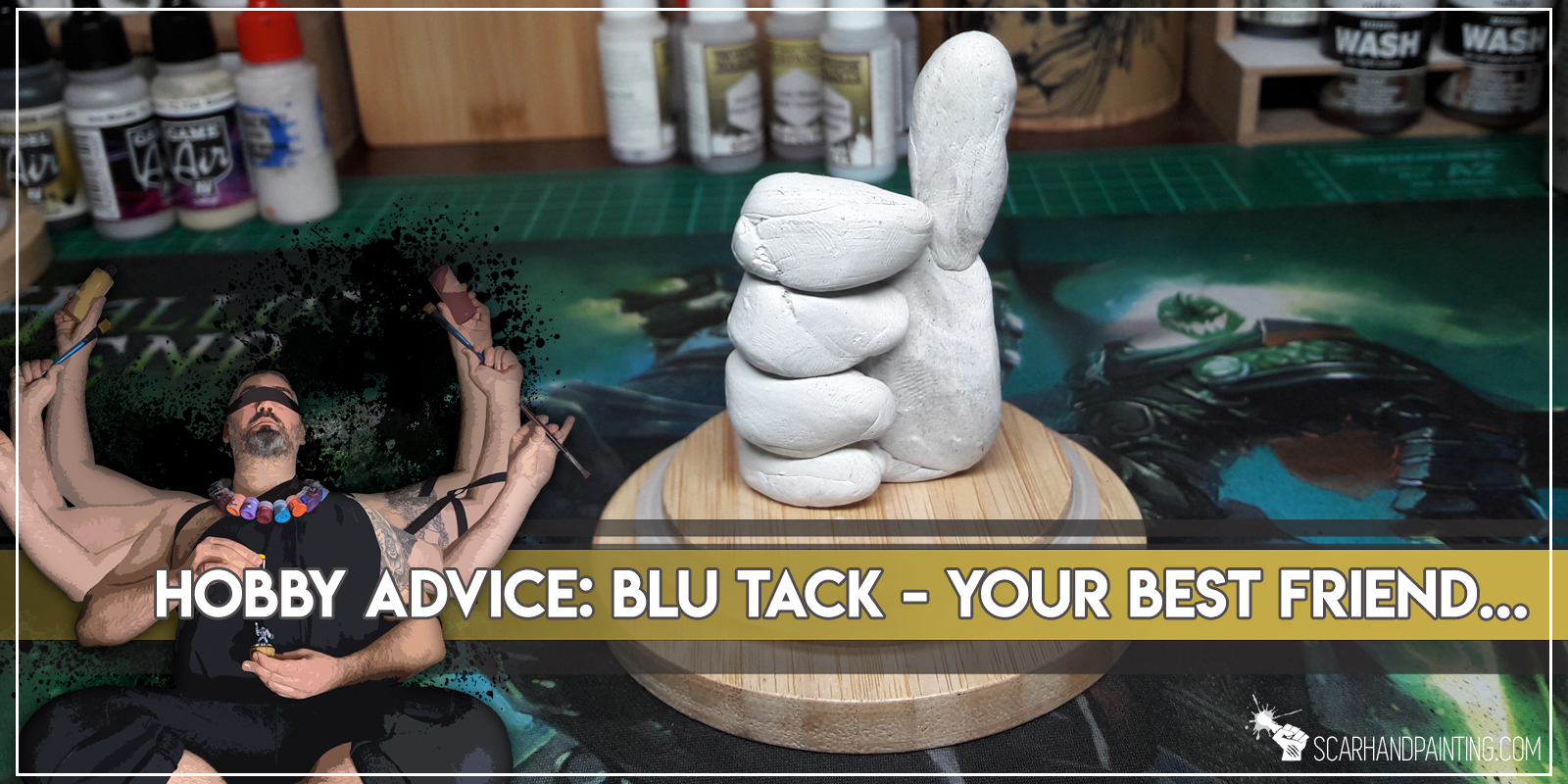
Brushes, paints, even entire hobby desks – they come and go. It doesn’t matter how much I like particular pot of paint or a hobby tool. At some point everything gets old and I simply got used to part ways with almost every hobby related item. There has ever been just one friend that stick and grew alongside me throughout the years. I dedicate this article to my fav support teammate. Let’s talk Blu Tack!
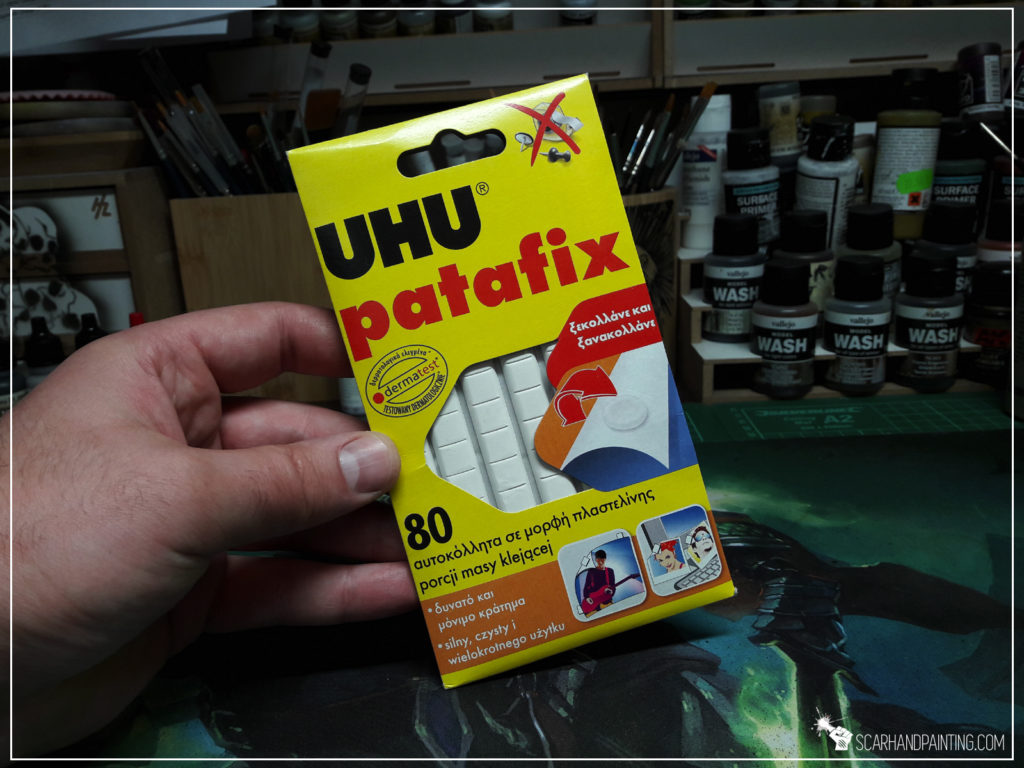
Blu Tack is an adhesive, reusable putty-like mass. The most known “original” comes by that name, but you can find different variations of the stuff all over the internet and not all come in traditional blue. It can be used to attach lightweight objects to any dry surfaces, but also as a painting tool.
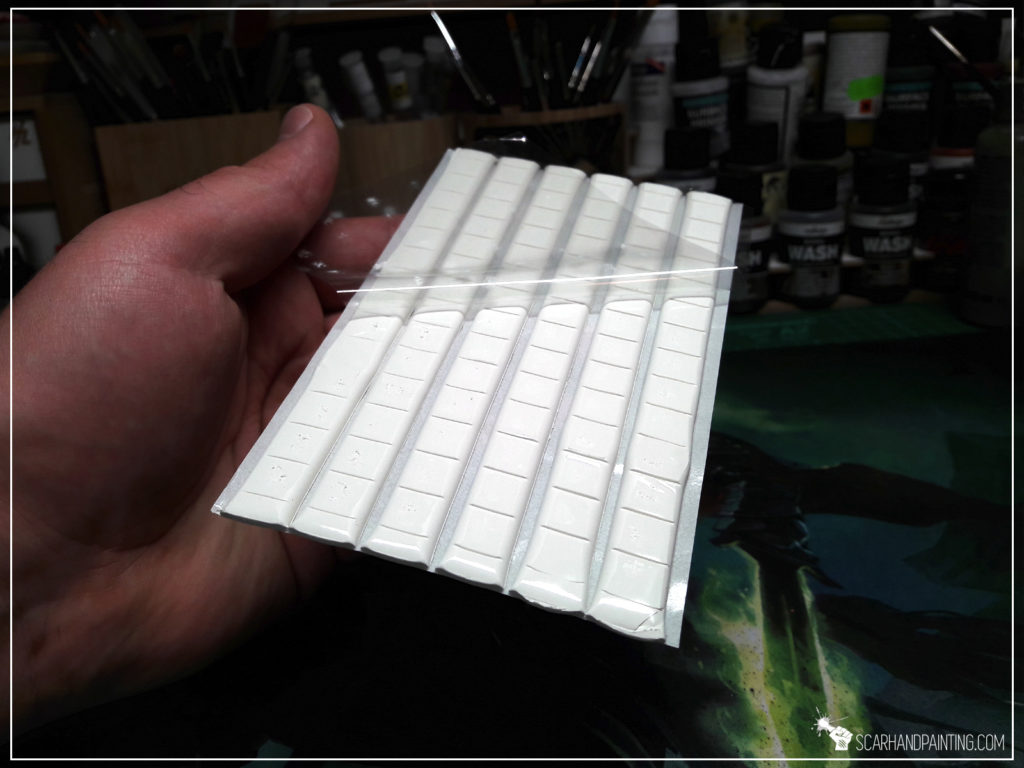
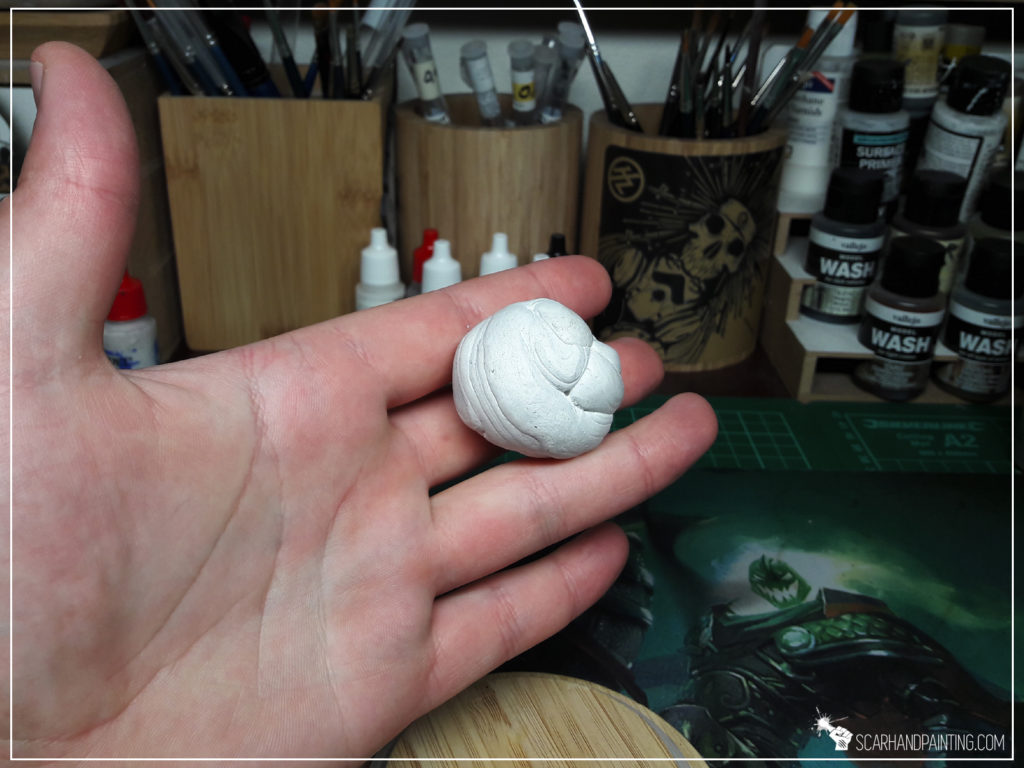
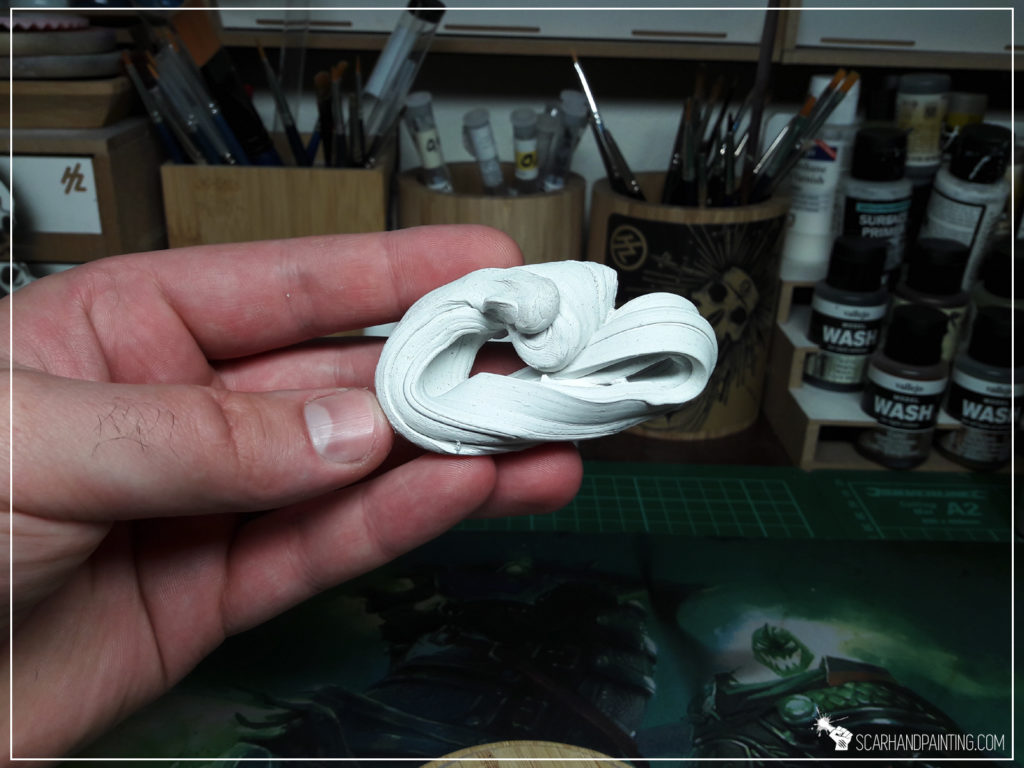
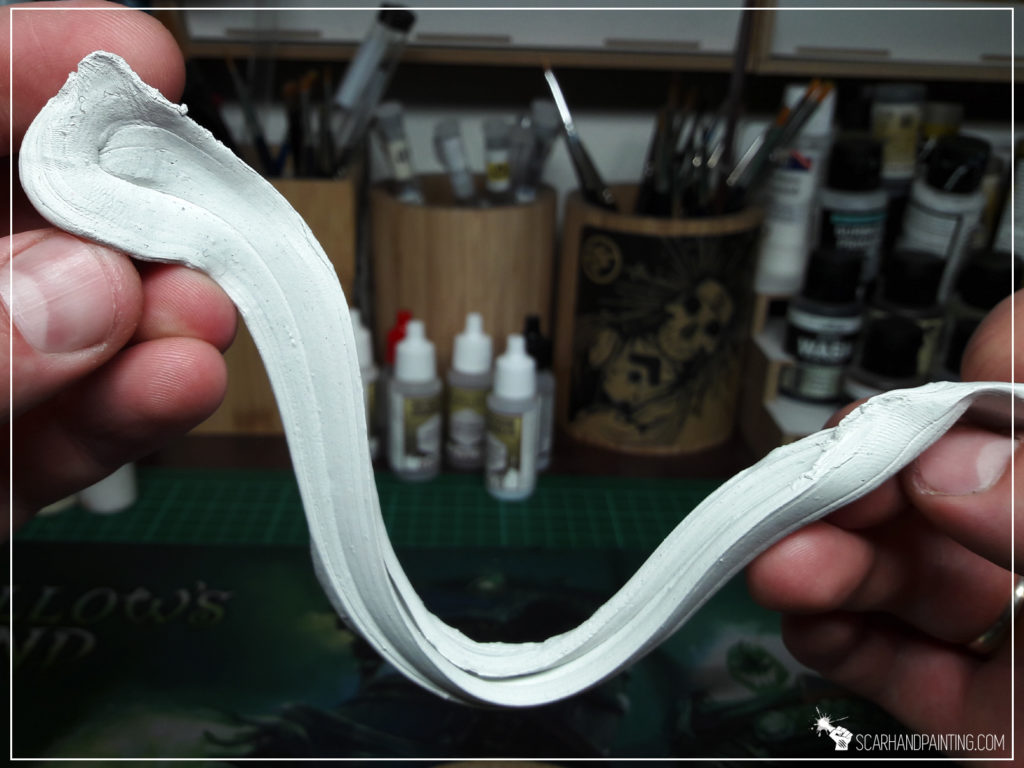
Spilled paint, toothpicks all over the place, airbrush on the floor in a pool of spilled exhaust waste… not for me. While I drown in righteous fury, punishing miniatures with relentless brush strokes, my friend Blu Tac holds the objective – keeping the surroundings in one piece. Literally…
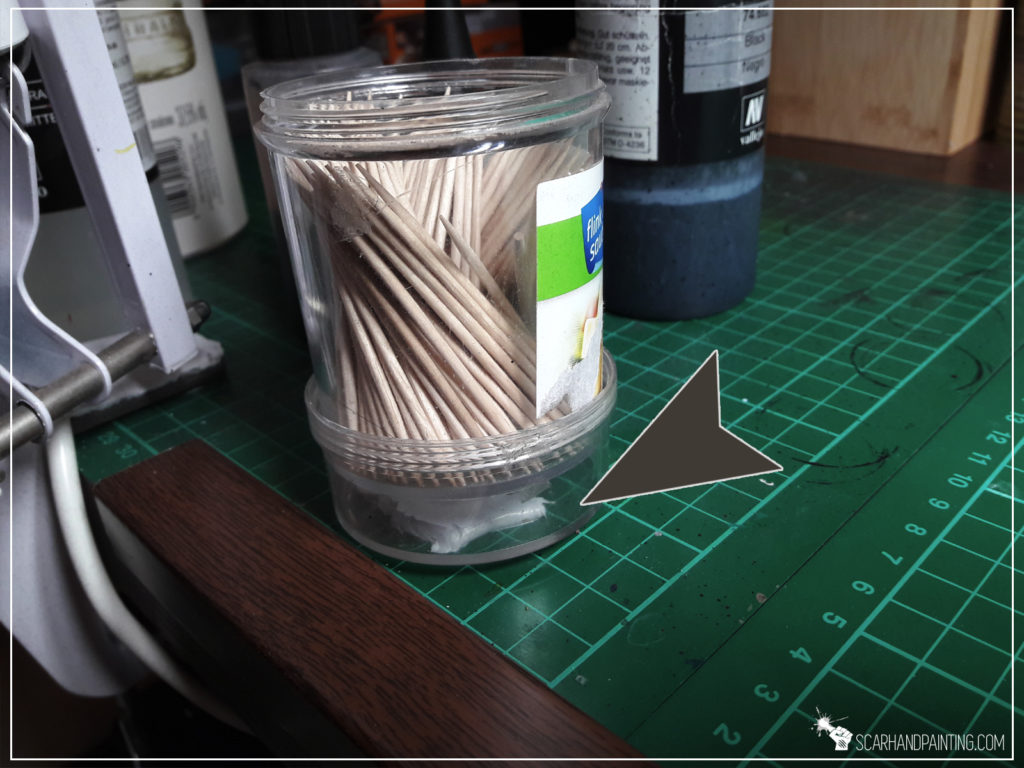
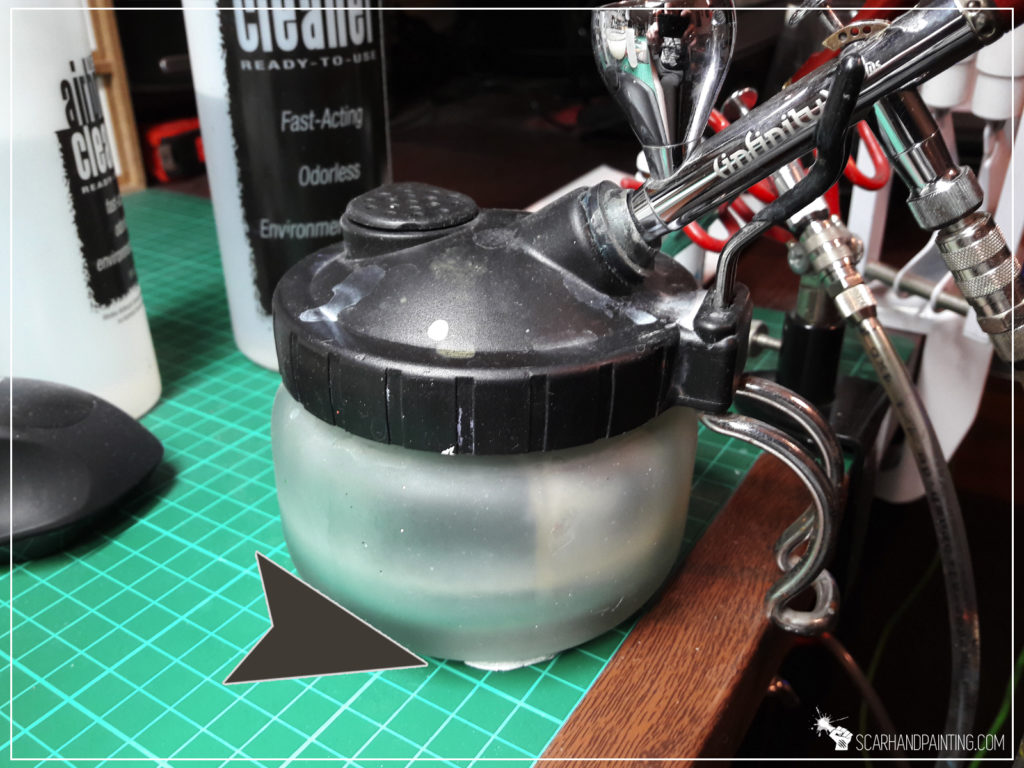
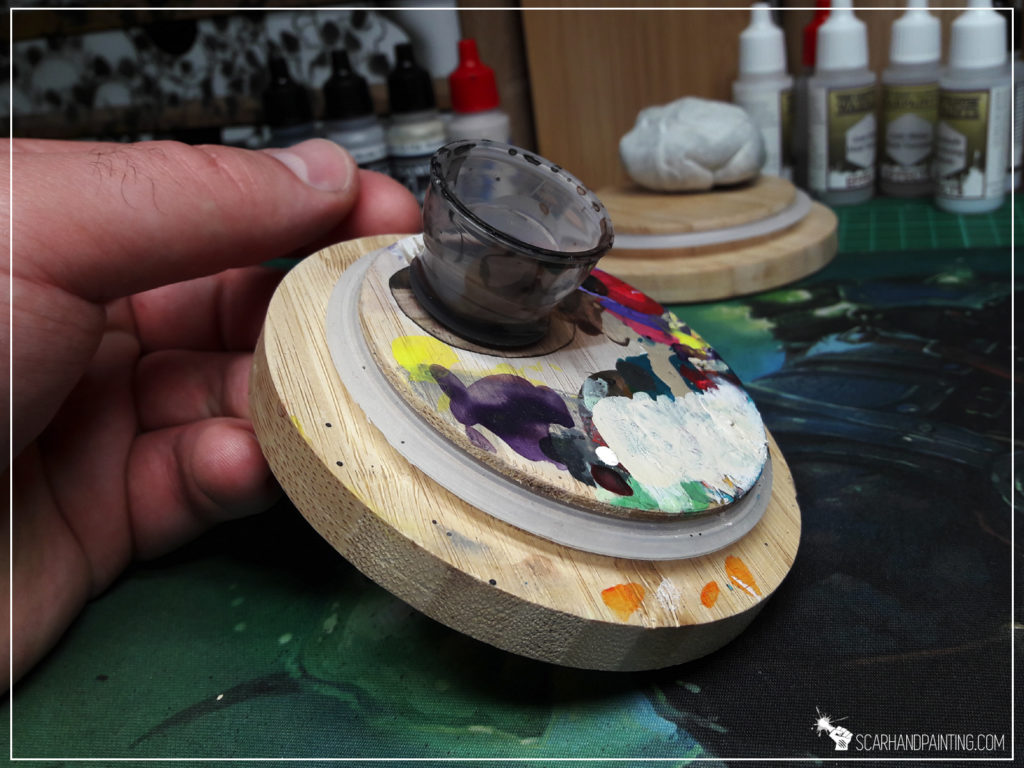
Once the creative fury abates, allowing me to paint with sniper-like calm, using both precision and cunning – Blu Tack takes the fight to the front line, lending me his strength by pinning targets in place and covering important areas…
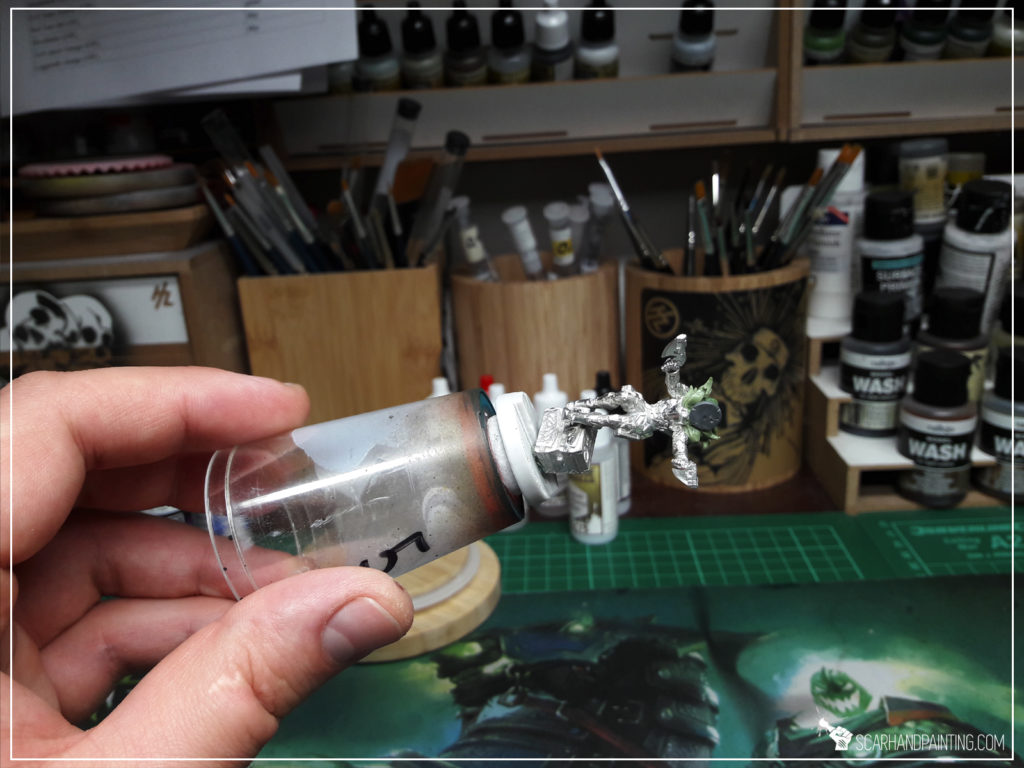
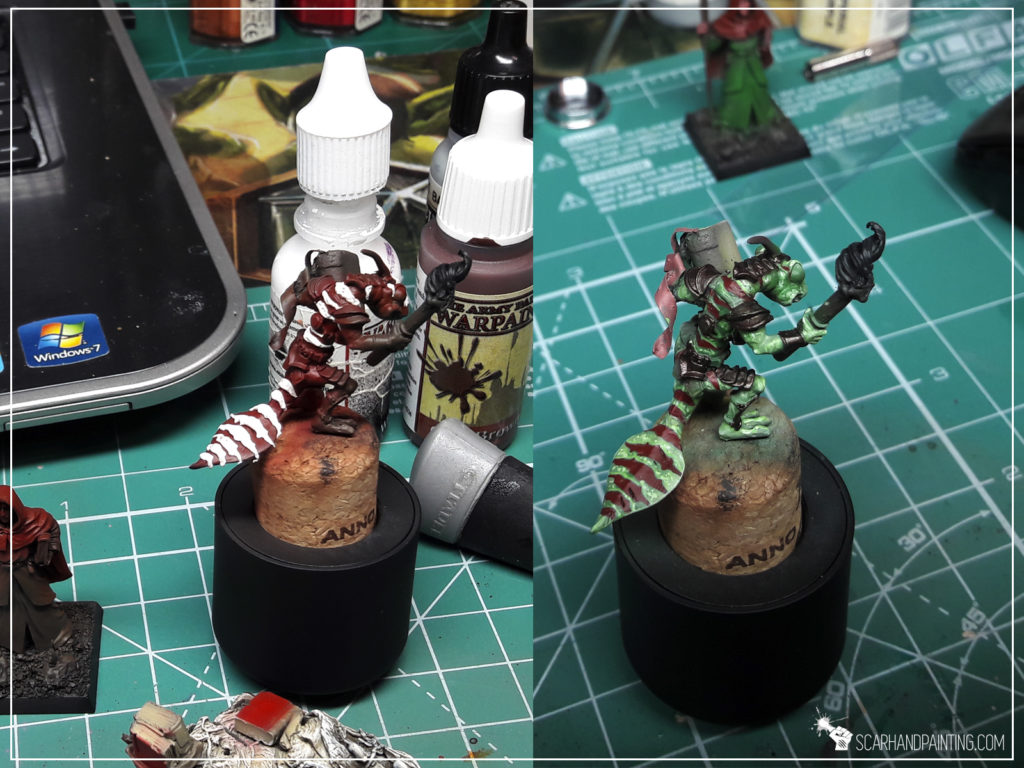
Most importantly Blu Tack is like a mythological hero. It doesn’t die, it doesn’t get old. It builds mass with every new batch added to the body. It is a friend that throughout our painting adventure never let me down and always had my back. I know I can count on it, no matter what new challenges we will face next! Blu Tack is love. Blu Tack is god!
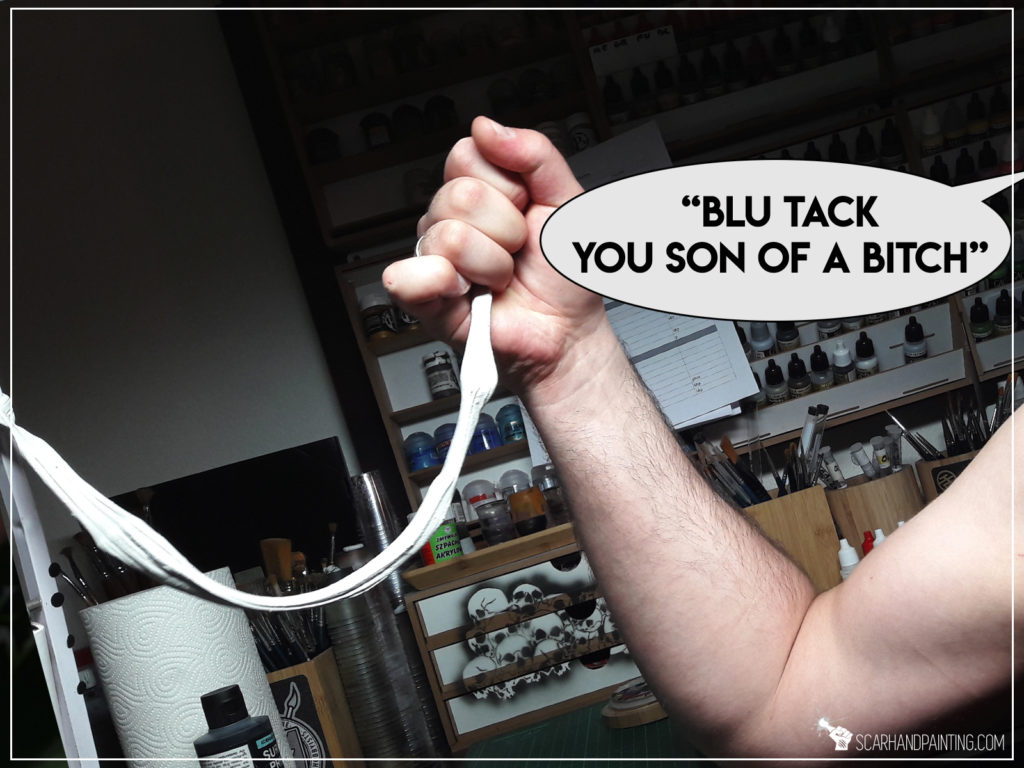
Do you know and use Blu Tack in your hobbying, or did you just learned of it through this article? Lemme know in the comments or at Facebook! Cheers!

Alright, so you decided to start with an airbrush. You’ve made some reconnaissance, picked an airbrush and compressor and the only question that stands between you and a lifetime of successful airbrushing is “what else do I need to start?”. This very question was asked to me a lot since I myself started airbrushing. It might be about time to turn the answer into a short article, in hope to support all the beginner hobbyists out there…
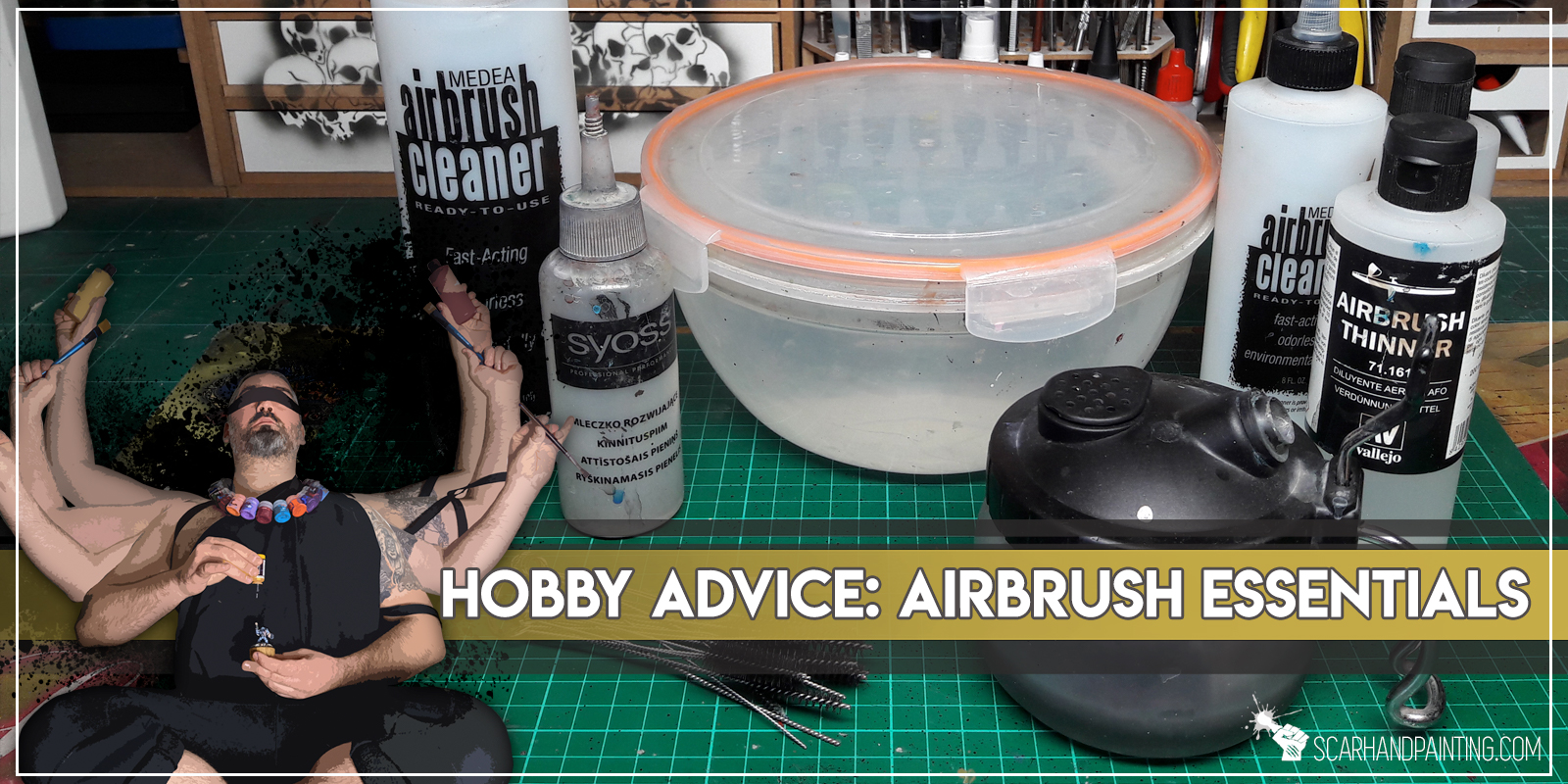
Assuming you’ve already picked an airbrush and a compressor, there’s still a list of items you should get before you’ll be able to start airbrushing. Let’s dive head on into the list of necessary items…

Air hose is used to link the airbrush with compressor. When picking an air hose it is important to check which models of airbrush / compressors it’s fitting is compatible with. The easiest way is to simply contact a store and ask them to recommend an air hose compatible with types of fitting of your airbrush / compressor.

In case your airbrush has different type of fitting than the compressor, you will also require an Adapter, or a Multi Way Valve Assembly with a proper type of connection. Take a look at E-Bay to see how many different types of fitting there are…

A filter equipped spray out airbrush pot and an airbrush holder (preferably 2 in 1 like below) are also necessary. Thanks to these you will have an option to rest the airbrush on a holder in-between different activities (like mixing paints, or even resting for a bit). Spray out airbrush pot will also keep the majority of paint waste contained in an easy to clean glass pot.
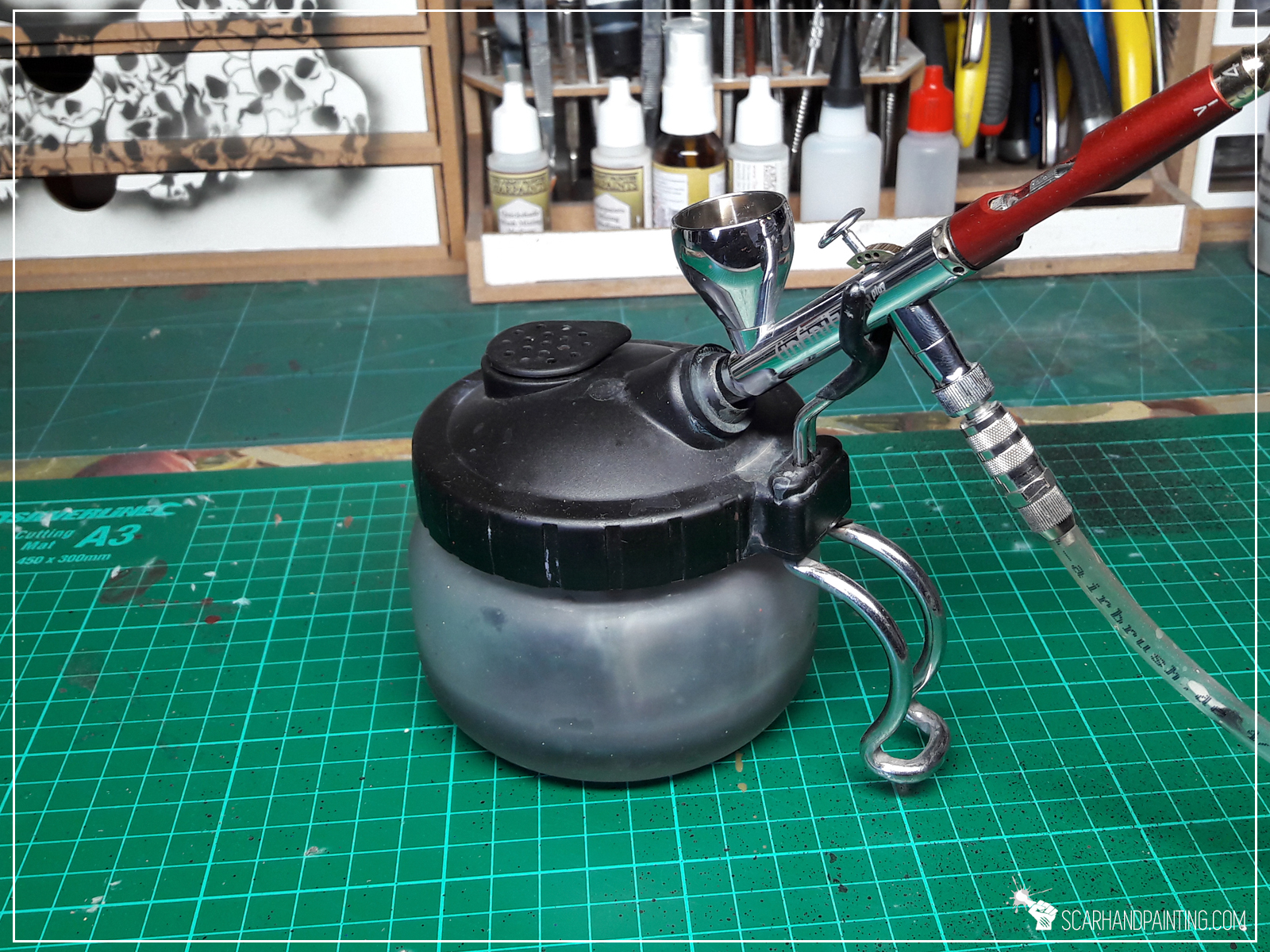

You will use these too clean up the insides of your airbrush.
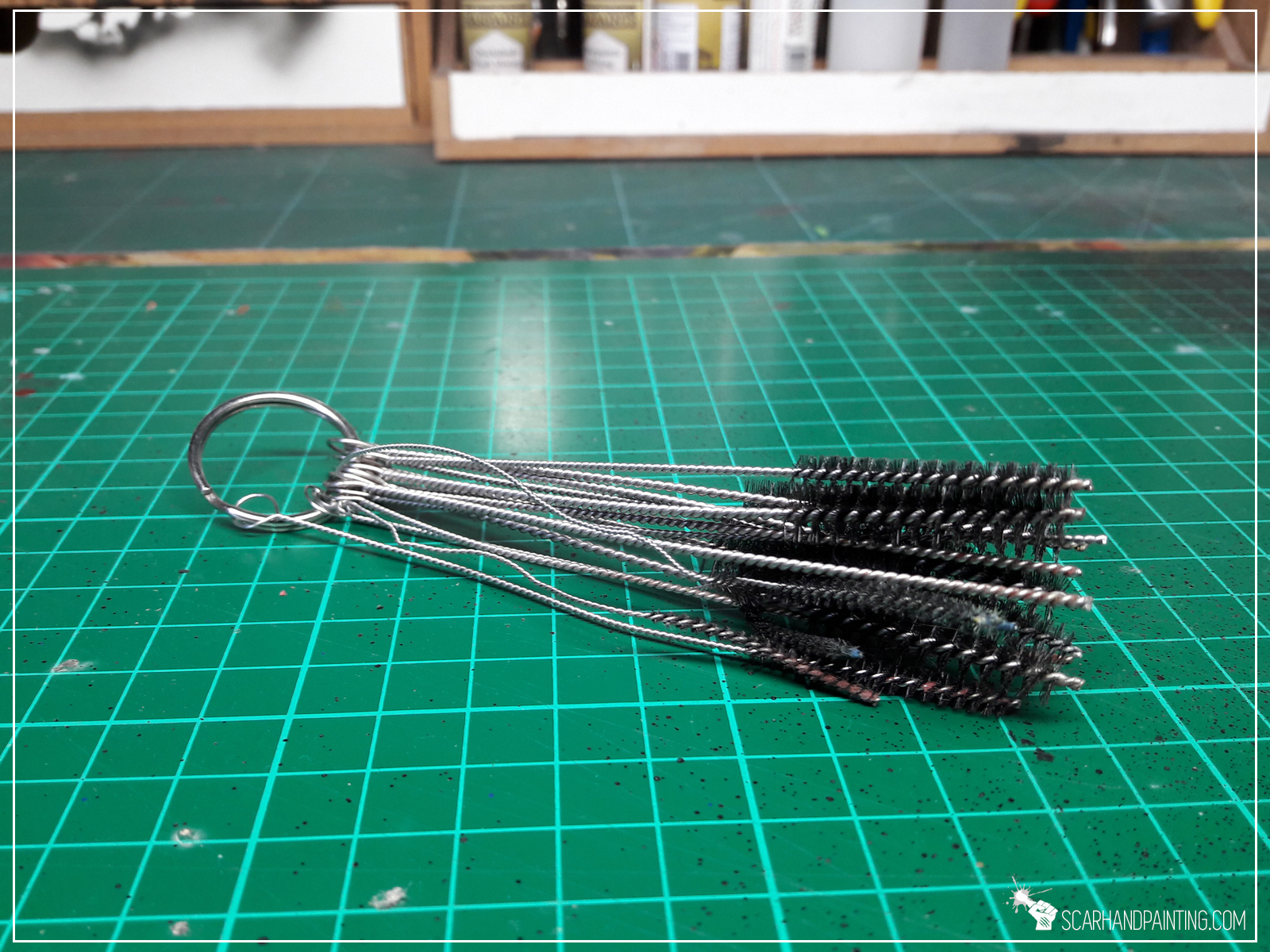
You will use this tool to clean up the nozzle. When picking one, make sure it is recommended for the type of nozzle of your airbrush. Too large tool may damage the nozzle from the inside.
Example: ALDER tool (top) damages H&S nozzles! H&S tool (bottom) is perfect for H&S nozzles

You will use this duo to remove the excess paint from your airbrush without the need to spray it all out.
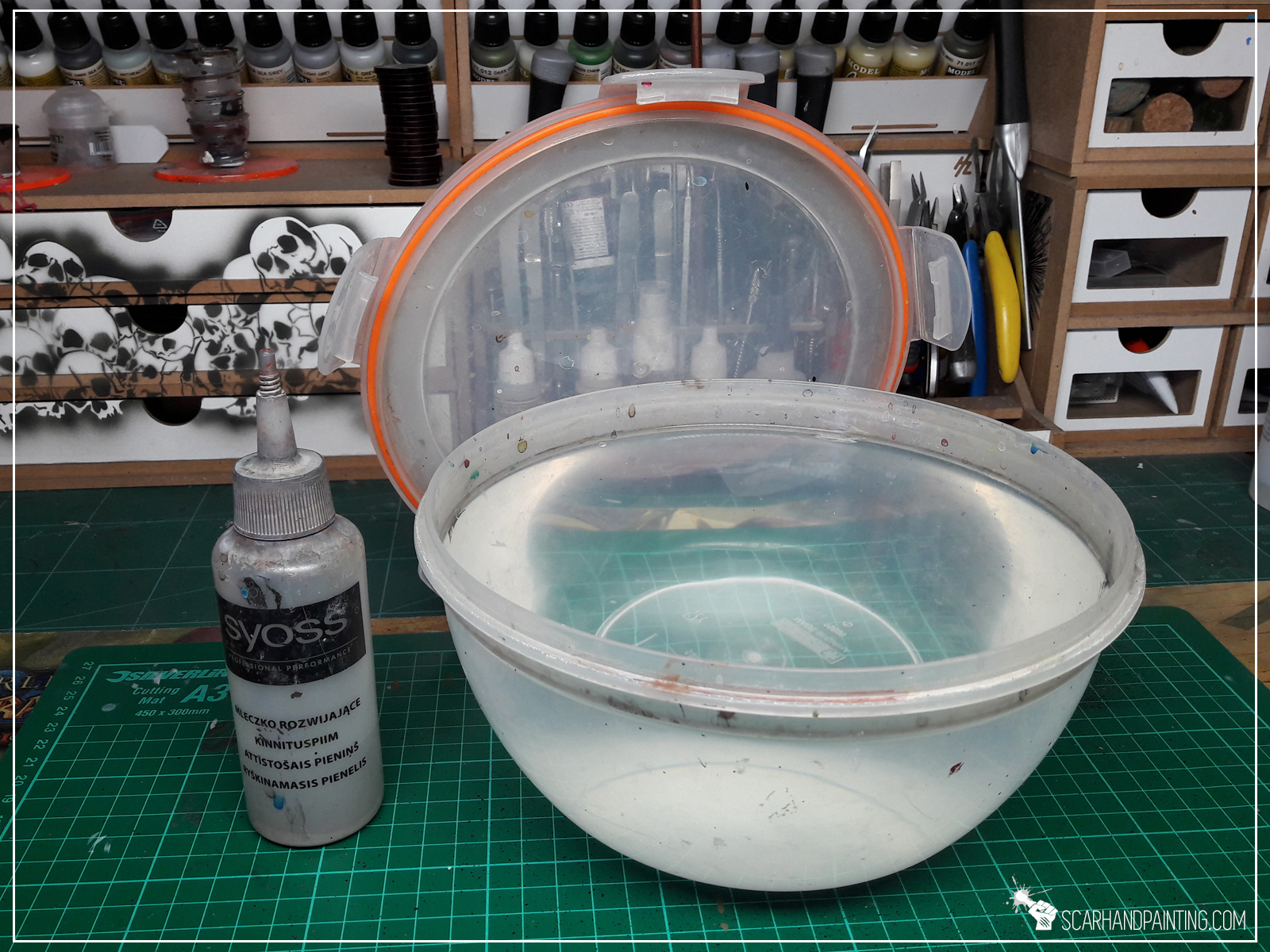
Airbrush Cleaner, Airbrush Thinner and Airbrush Flow Improver – these three liquids are a must have.
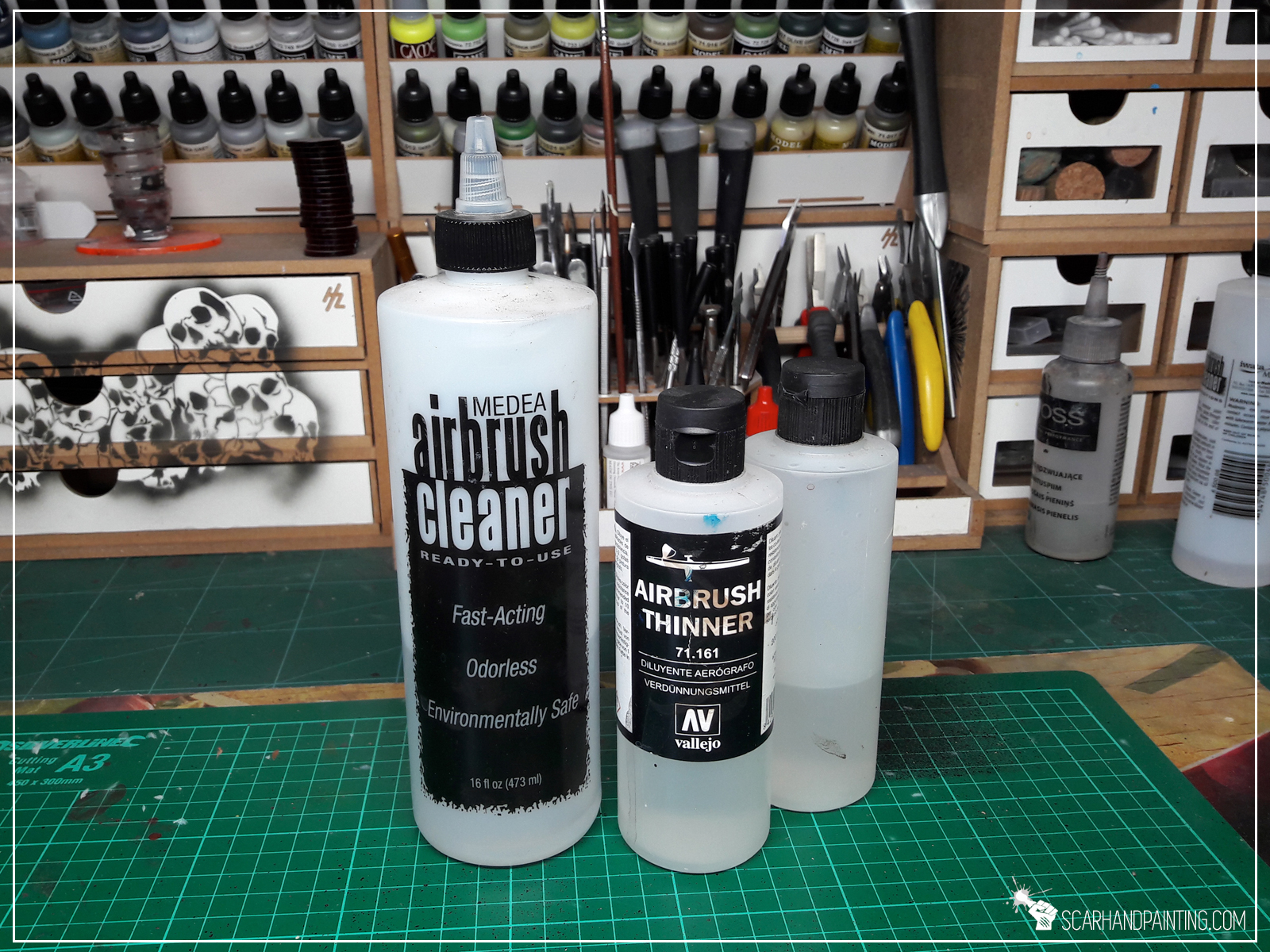
Below are some additional items that while not necessary, will come in handy once you start airbrushing your way to hobby glory.
Unless you’re ok with lung damage, wearing a proper mask while airbrushing, is in order. With this one it is recommended to aim high, pick a high quality tool with strong filters – better safe than sorry.
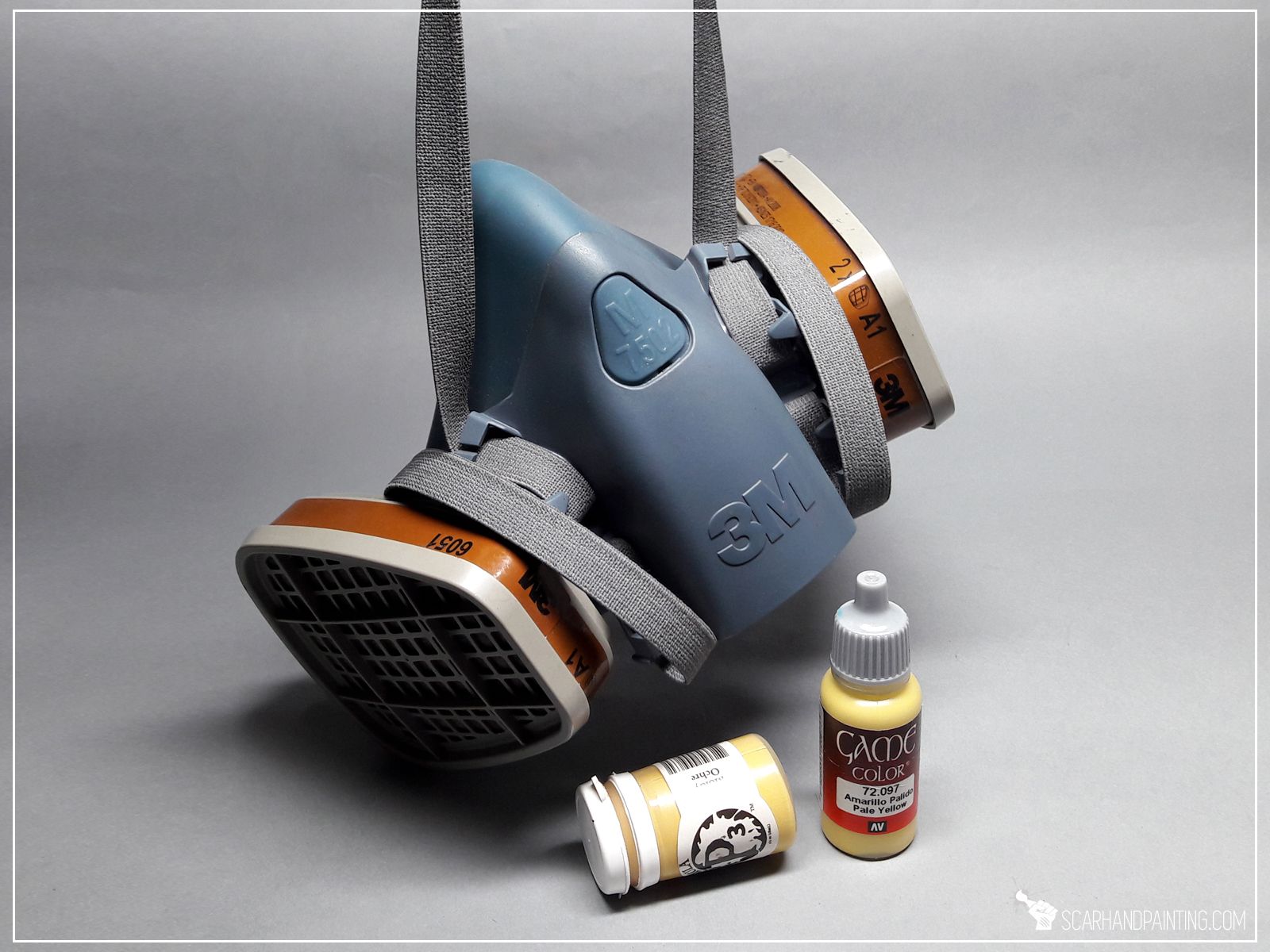
Protective latex gloves, while not essential, will help you keep your skin clean and healthy. Extensive airbrushing might lead to skin getting dry and irritated.
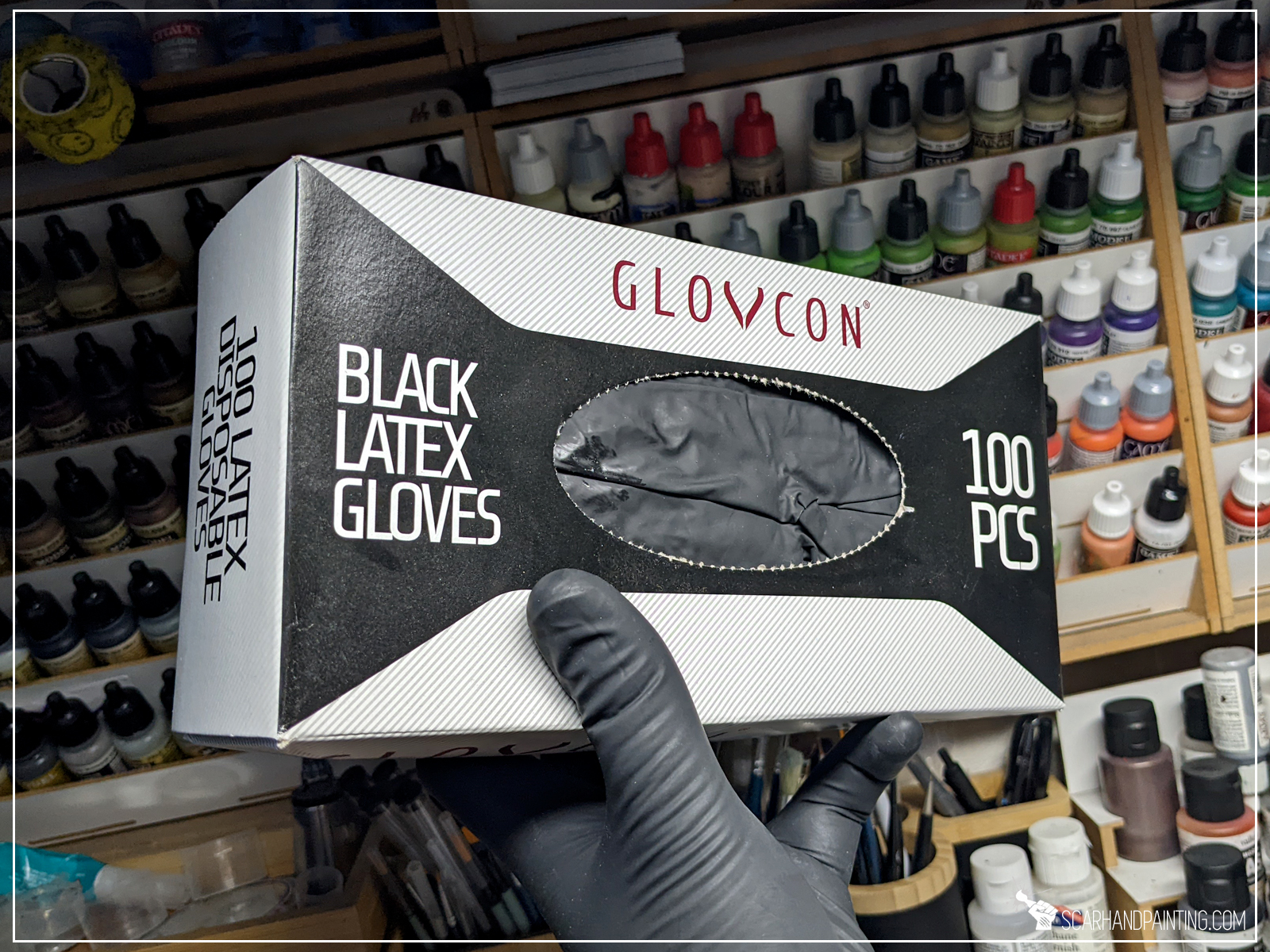
Airbrush needle is very delicate. A vast majority of beginners damage the needle during first few days of airbrush adventure. I advise you to get a spare needle outright, just in case.
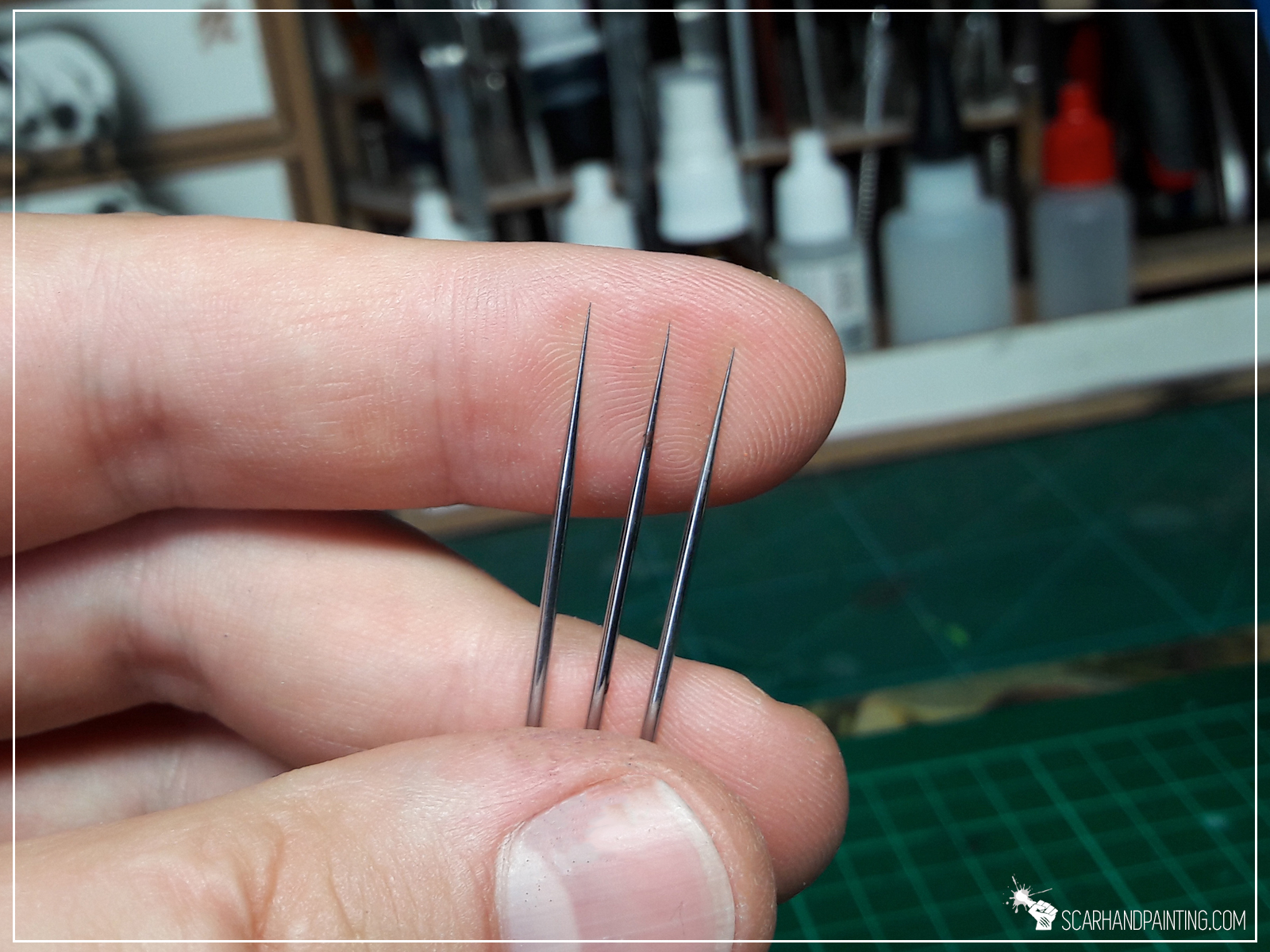
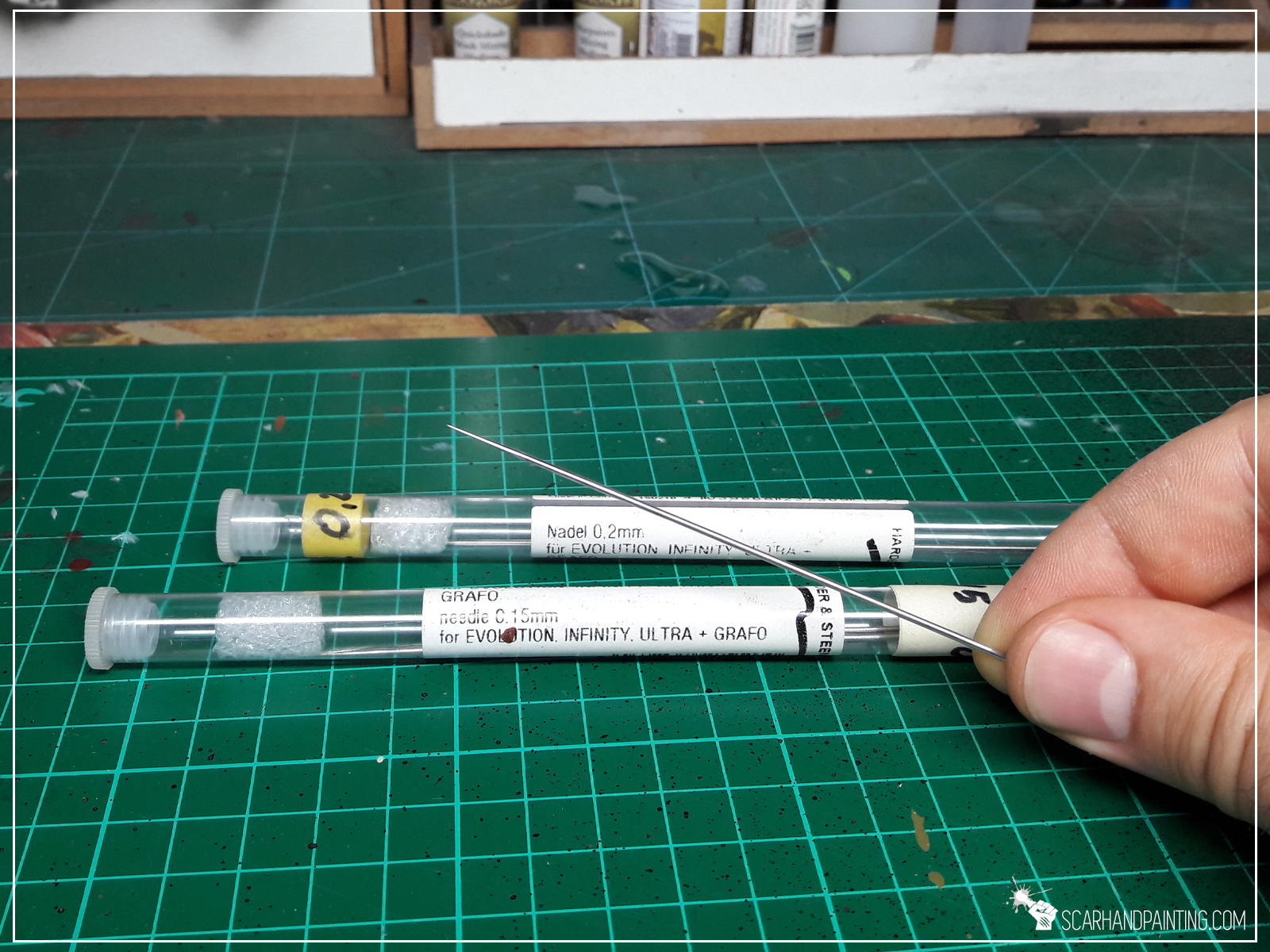
Long hair, medium size, round brush to remove excess paint from the tip of the needle without the need to dismantle entire airbrush.
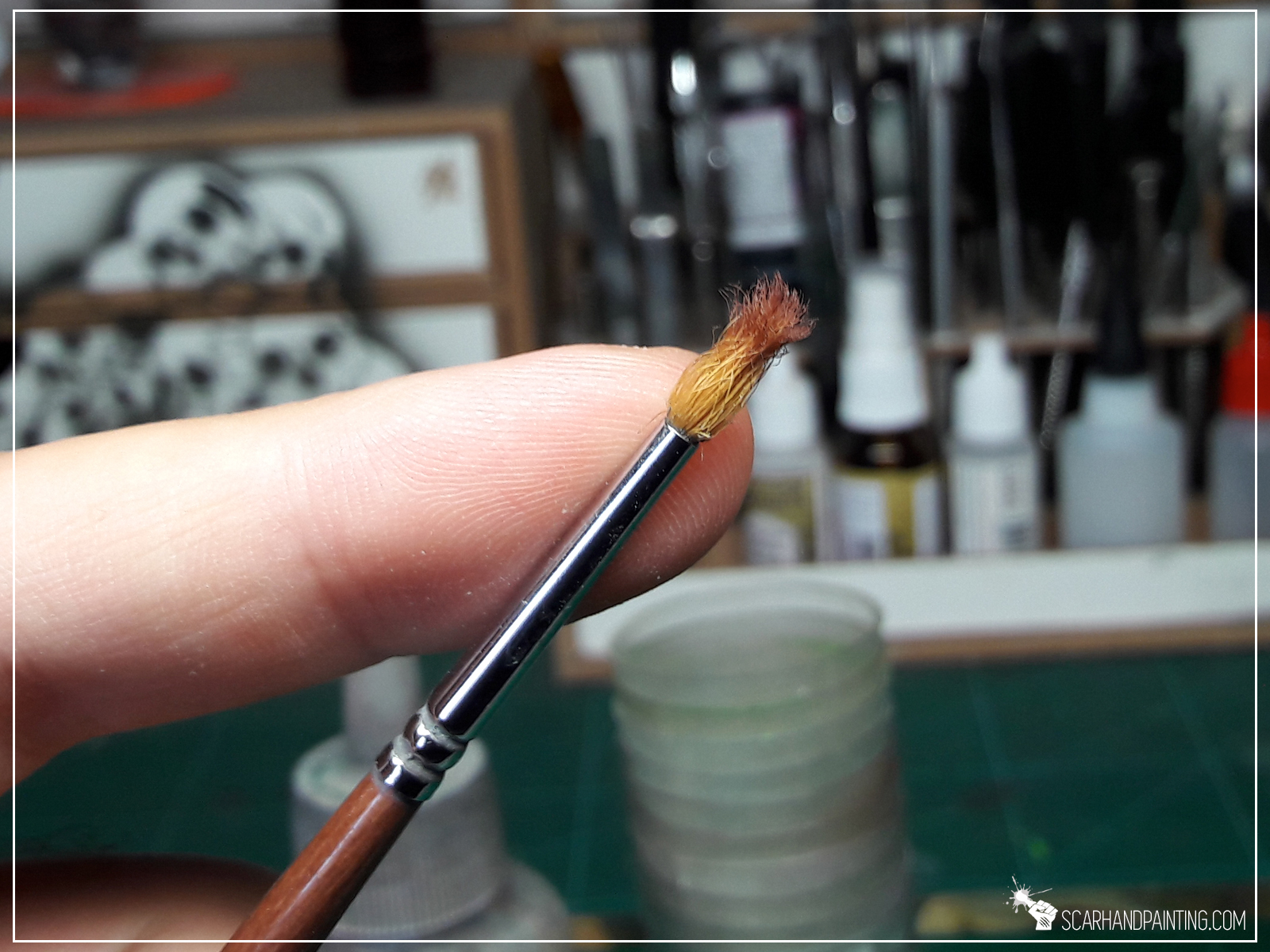
You might use these to mix paints before pouring them into the cup on top of an airbrush to avoid clods of paint to get inside.
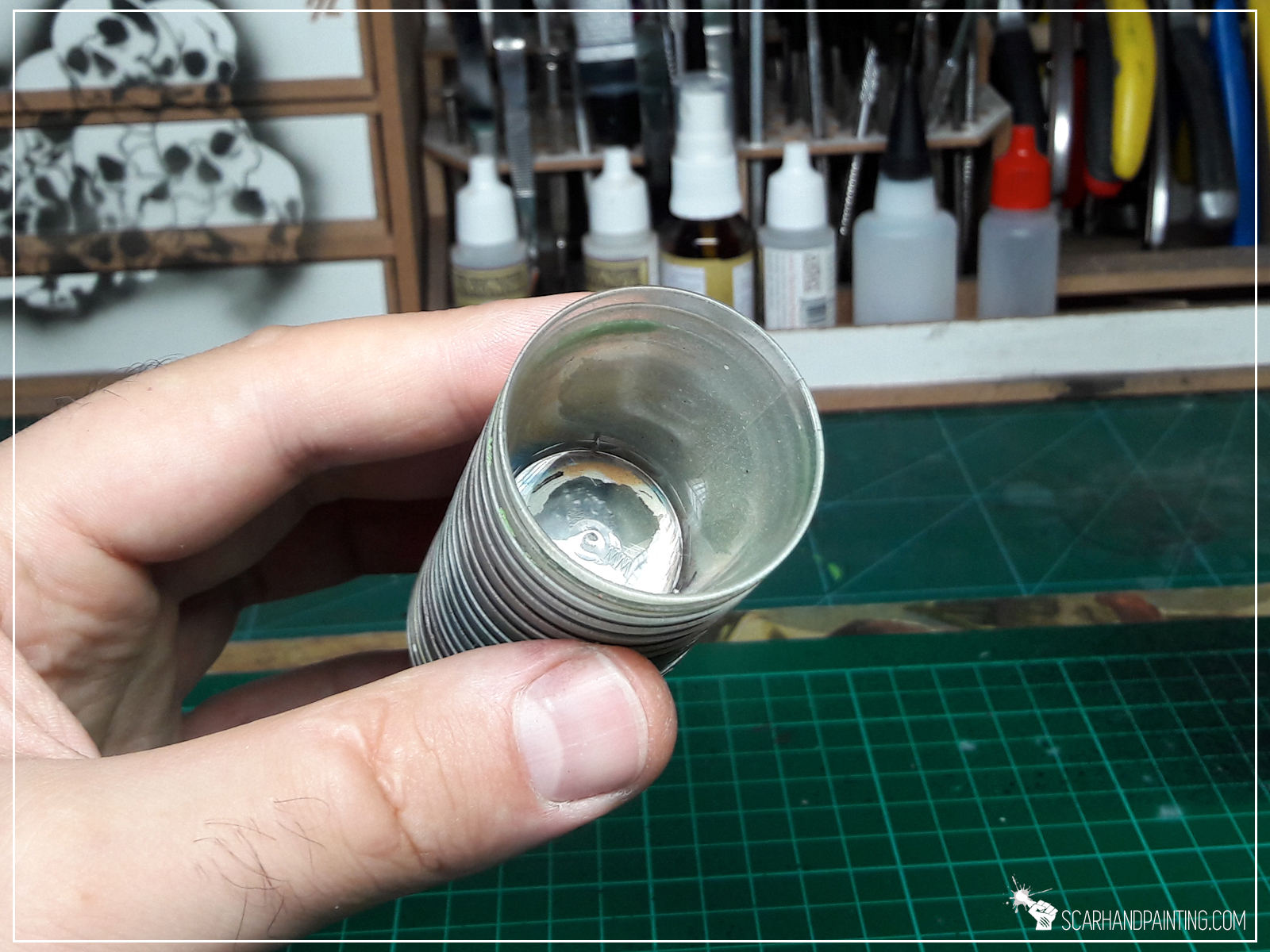
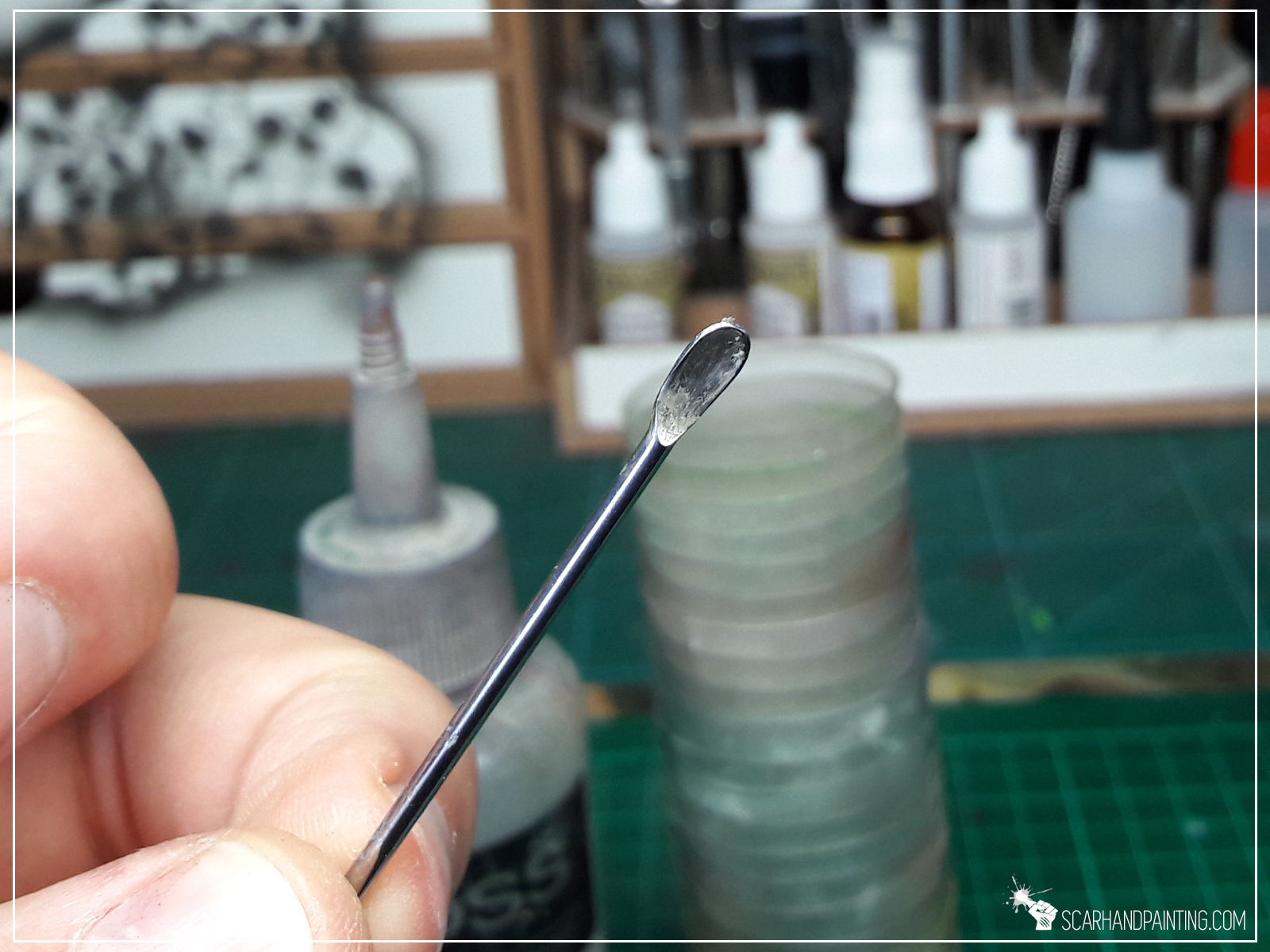
Not really an essential, but a very useful tool to help you with avoiding overlapping paint on some areas.
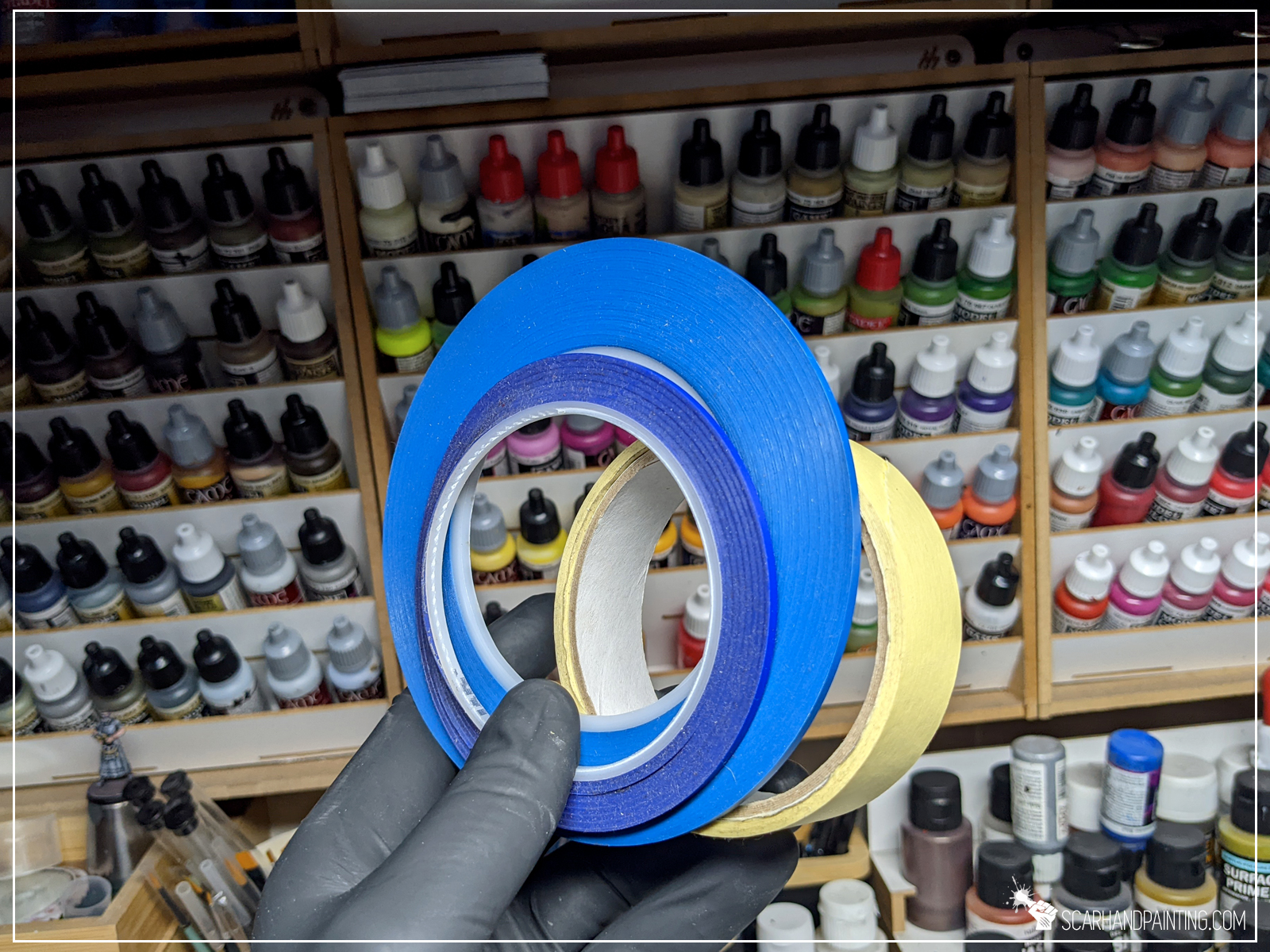
This can be anything between an original painting holder and a sole small cup with a ball of Blu Tack mounted on the underside. Such tool will let you airbrush without fear of messing up the paint job with your fingers. Plus it is just a very comfortable way of painting miniatures.
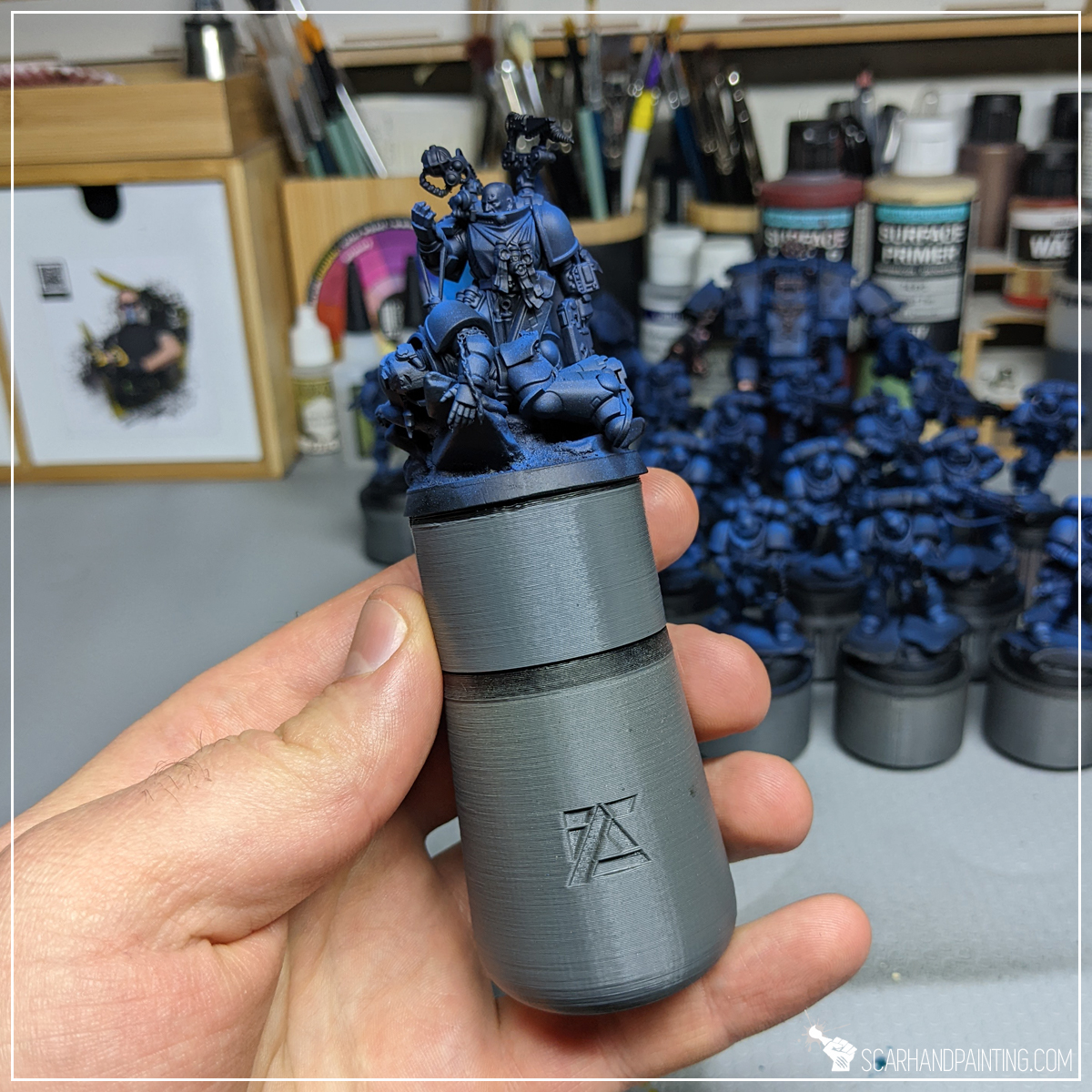
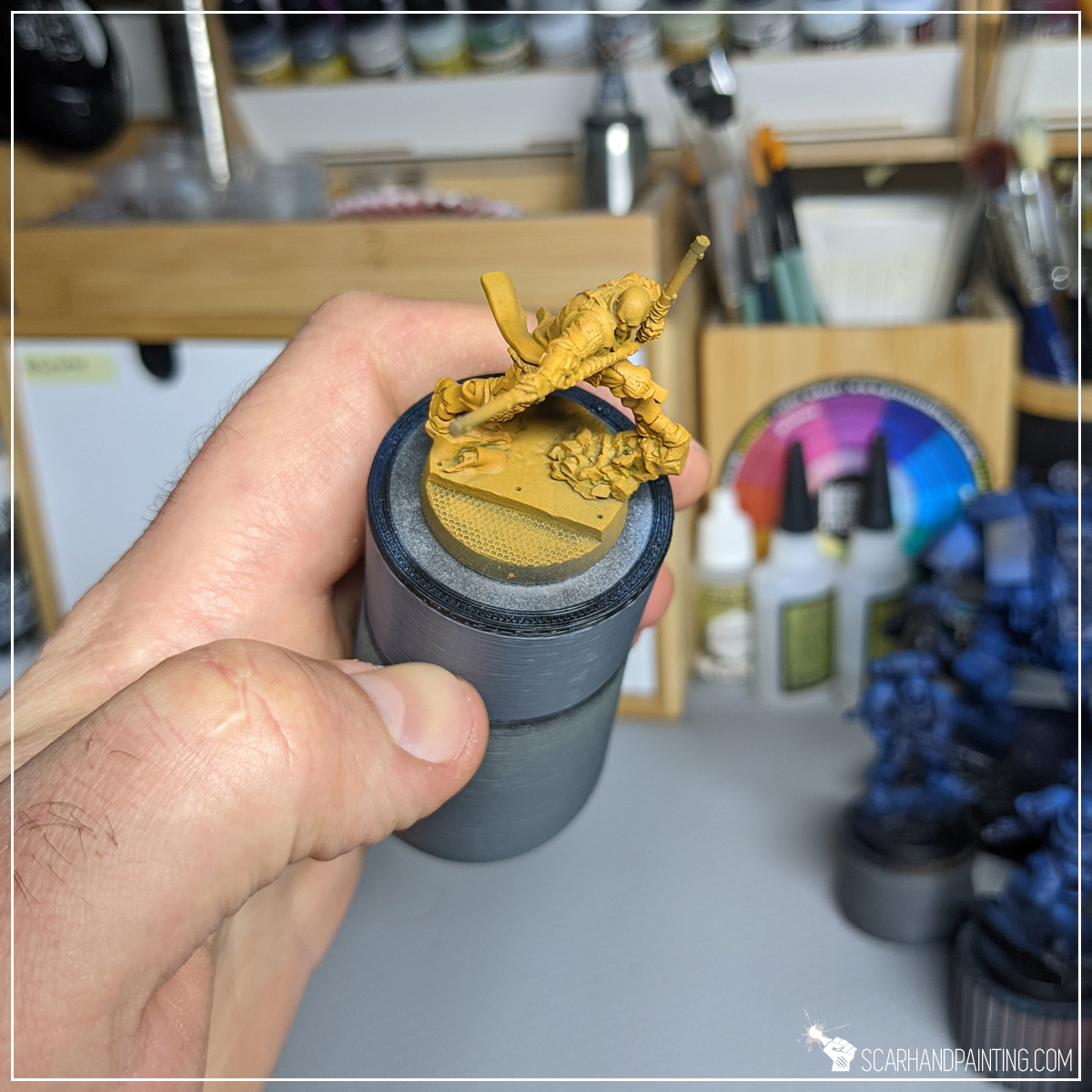


Obviously you will require paints. It is not necessary to get any type of special airbrush paints. Thanks to Flow Improver and Thinner regular paints will do, but that’s a story for another article. Personally I wholeheartedly recommend Vallejo Air series as I find them ready to use straight out of bottle.
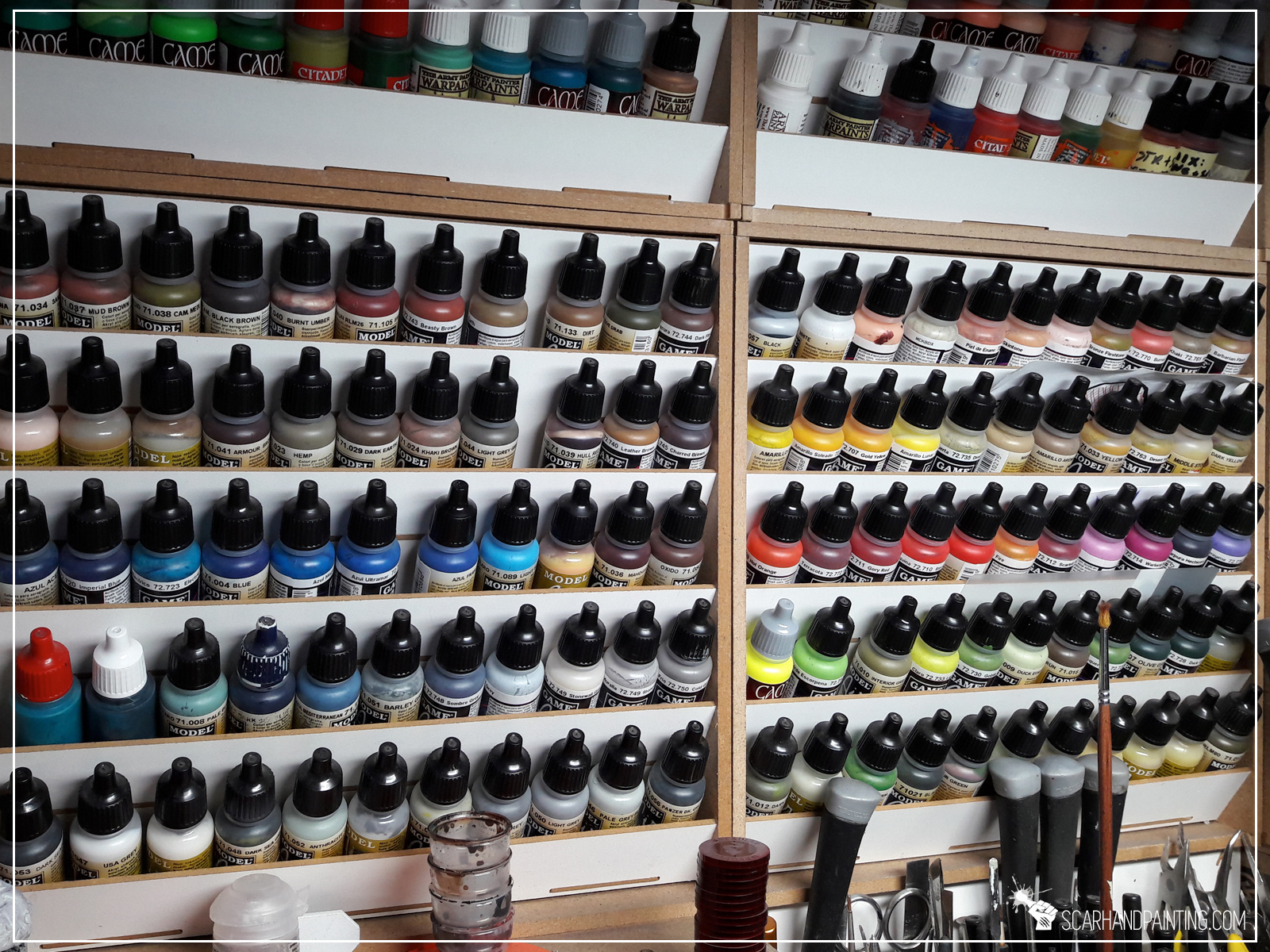

Thanks for reading. If you think I skipped a necessary or useful item that a beginner airbrush users should get, let me know in the comments section or via Facebook or Instagram. I would also appreciate if you considered sharing this content with your friends, who might find it useful. Finally if you are looking for a professional miniatures painting service, be sure to contact me with this contact form. I always reply within 24 hours, after which please check out your spam folder.

Welcome to the fourth installment into the ‘Painting Philosophy’ series, where “I let you in on ‘how’ and especially ‘why’ I do some things in a certain way. In my opinion a proper approach to painting is crucial to maintain healthy and rewarding experience. Final result depends on it in the same way as on techniques, know-how and tools used. Nowadays internet is full of painting tutorials yet it takes some inner understanding of our own capabilities to find what suits us best and fully benefit from all acquired knowledge. That being said – In this series I will reveal what works best for me as a painter. I hope you will find some wisdom in it…”
Today I would like to talk less about painting and more about basing and composition, cause it does not matter how great your paint job is – if you based a miniature poorly it will look off, so there’s that. By ‘basing and composition’ I understand the way a miniature is set up on a base. It’s not enough that a miniature is just mounted on top of a base. In the end base is a display for our miniature and together they create a composition, that should be both stable on the gaming board and tell a little story about the miniature itself…
Basically, every humanoid miniature has a center of gravity. In most cases it is located slightly below the chest and over the pelvis of a miniature. If a miniature is armed with giant gun or standing with hands spread, the center of gravity might shift a little to encompass additional weight. In these cases both gun (big, heavy part) and main body of the miniature are treated as a single ‘body’ and the center of gravity is shifted away from natural position and towards additional part/parts evenly.
The key is to base a miniature so that it’s center of gravity is alligned with the center of the base. It does not have to be exact, but let’s just say the closer the better. In case of more complex miniatures it is possible that aligning shifted center of gravity with center of the base will move main body of the miniature to one side of the base (for example to the back of the base). This is ok for as long as the miniature stays within the invisible lines of the base’s edge and seem to still occupy the top of the base evenly.
To put it simply – because it looks better and adds feeling of ‘physics’ to the composition. As mentioned before a base and miniature are a single composition. This means that the way you mount a miniature on the base will translate into a short story about what is actually going on. Imagine a base to be a visualisation of physics of your miniature. For example:
‘Bakunin Taskmaster charging, using his right pauldron like a battering ram to slam through enemies…’ You can see this guy is heavy and moving forward. This is achieved by shifting center of gravity to the back of miniature, towards extended armed hand and aligning it with center of the base. This guy is moving forward and you can actually see his immediate destination on the base he’s moving over.
Now imagine how stupid it would look like if Bakunin Taskmaster was mounted with his feet at the center of the base instead. You don’t actually have to imagine, cause I will show you. Now this giant of steel, polimer and fiber muscles looks like he lost his footing and is jumping off a cliff as a result. Entire right hand and part of the pauldron is off the base and seem to drag the rest of the miniature along.
Here’s a set of examples I dug in the web and how I see them performed.
You have now finished the fourth Painting Philosophy article. This series is all about sharing forbidden knowledge so if it drove you insane, just stay calm and paint some. You get back to normal once it settles up in your mind. As usual – ‘Please take note that what works for me, might not necessarily work for you – still there are many ways to accomplish certain things – mine is just one of them’. If you find this article helpful – be sure to leave me some feedback. Have a nice hobbying 😉
“Many fall in the face of chaos. But not this one, not today.”

Ever wandered how a brush graveyard looks like? Some of us seen this wast field of broken, damaged brushes – left aside without purpose. A truly sad sight to behold. Now you’re probably looking at the sharp tip of your favorite brush thinking “It won’t happen to you my dear friend. This doesn’t concern you.” Sorry to be a bringer of bad news, but brushes come and go – no way around it. The only thing we can do is to preserve their longevity as much as possible. How to it? The sole purpose of this article is to share some tips that might help you enjoy your brush till it’s late veteranship and avoid this:
On top of thorough cleaning after each use, the proper care is the key to preserve brush’s shape and thus function. It’s not something to repeat at daily basis, still every now and then a “brush spa”should be performed. Here’s how I do it:
1 First I poured Airbrush Cleaner into a small cup. Next I dipped a tip of the brush, tapping it against a bottom of the cup. The purpose of this step is to ensure that any dried out paint leftovers would get removed from the brush's tip. Once done I cleaned up the tip and metal part of the brush's handle with a paper towel soaked in Airbrush Cleaner. I did this by slowly pulling the brush through the towel, forming it's tip.
2 Step two was to gently clean the tip with soaped fingers and wash it with water.
3 Then I moved to step three, covering the tip with a hair repair conditioner. Then I left the brush to soak with conditioner for about 20 minutes.
4 The final step was to once again clean the brush with water and form the tip, using a paper towel.
Now my brushes rest happily in a brush cup, smiling to me in wait for next project…
Ok, so you can take care of your brushes to keep them healthy, but what if they’re already ‘on the other side’? Untill recently I was sure that there’s no comming back from the brush’s afterlife, but I was prooven wrong by a friend who linked me a crazy awesome tutorial – and now I will share it with you.
1 I dipped the brush in water...
2 I touched a wet tip of the brush to the hot iron, then started moving it backwards, gently turning it in one direction.
Well – that’s it! Sounds easy? It actually is XD Just take a look at this video…